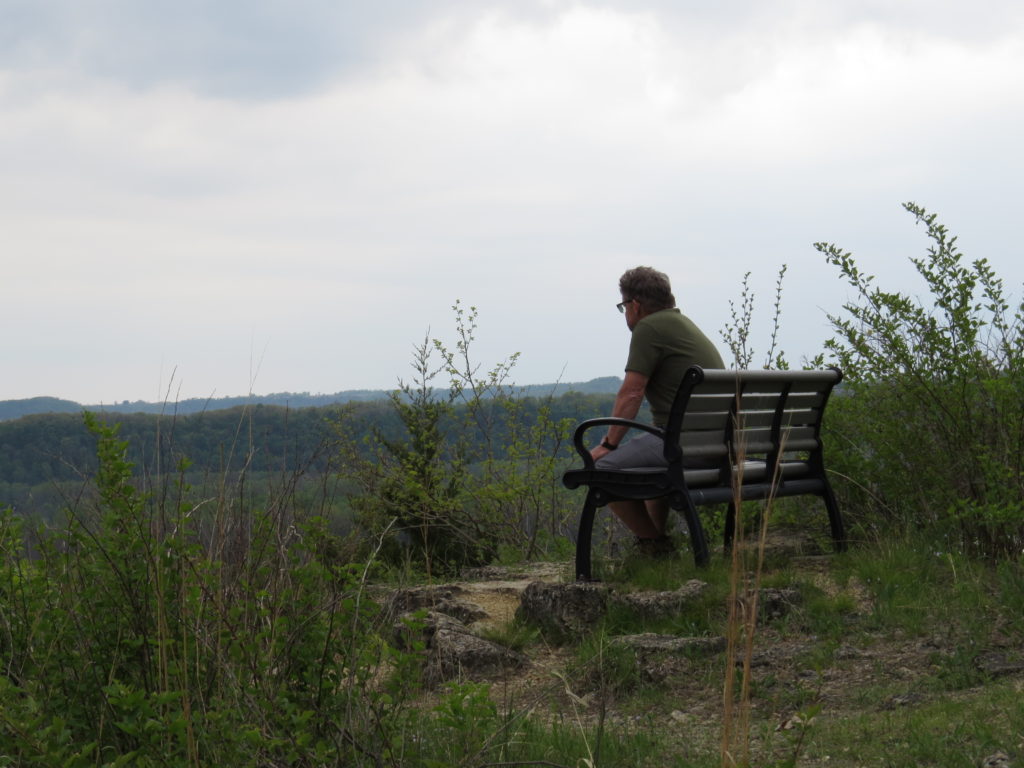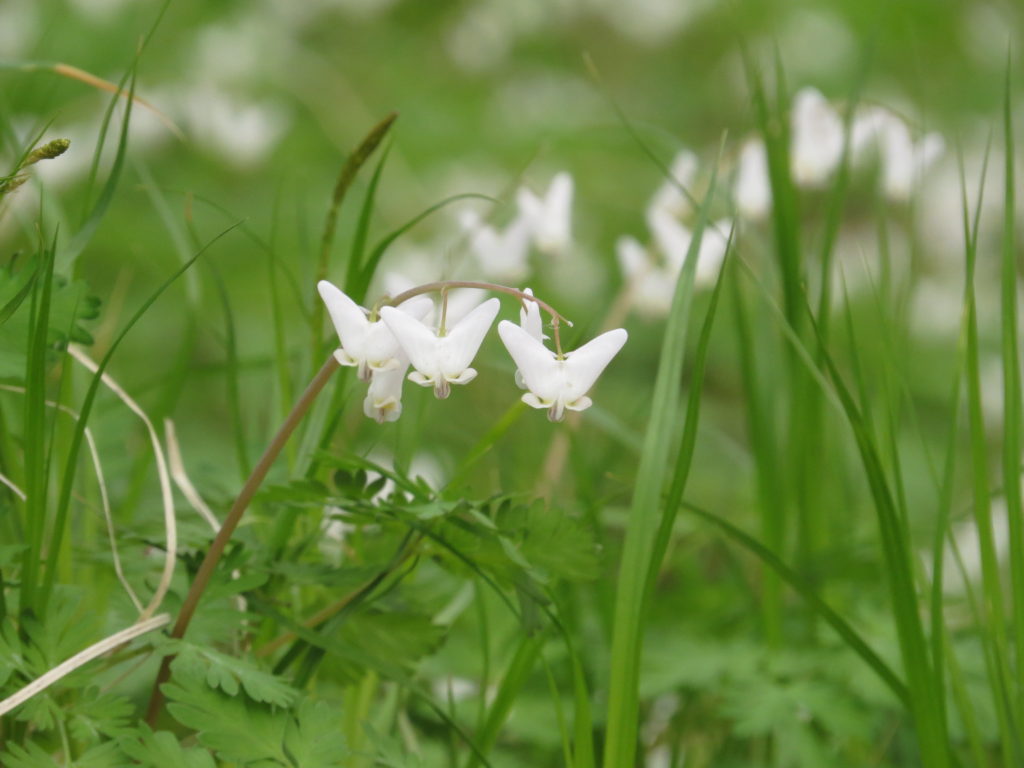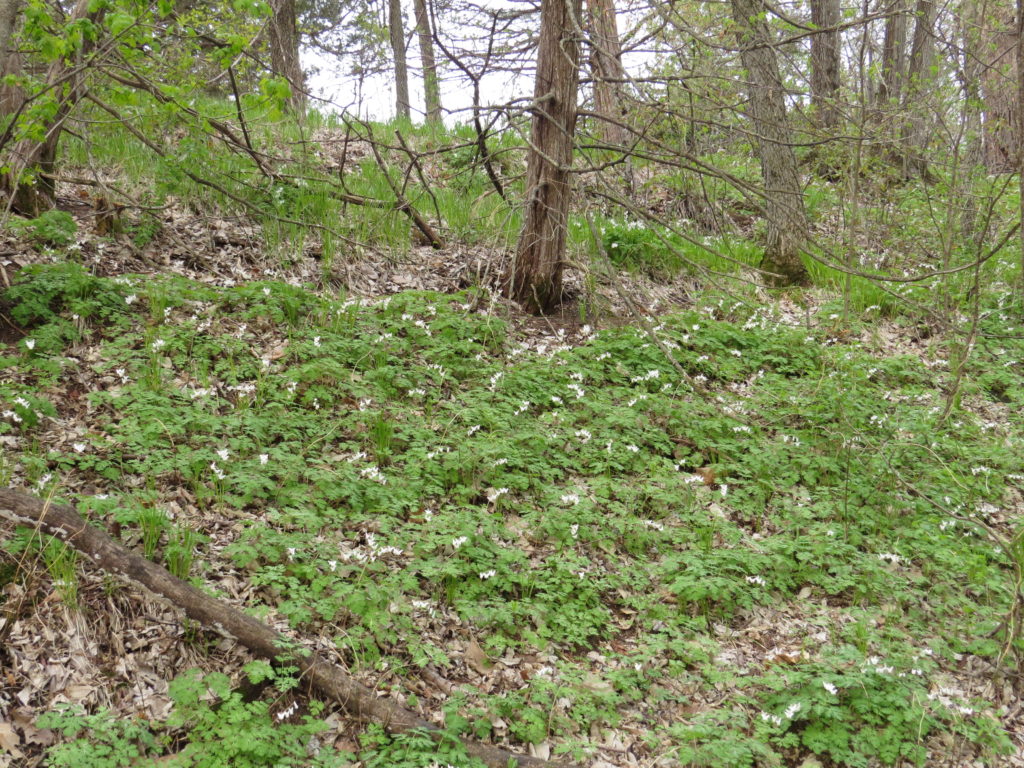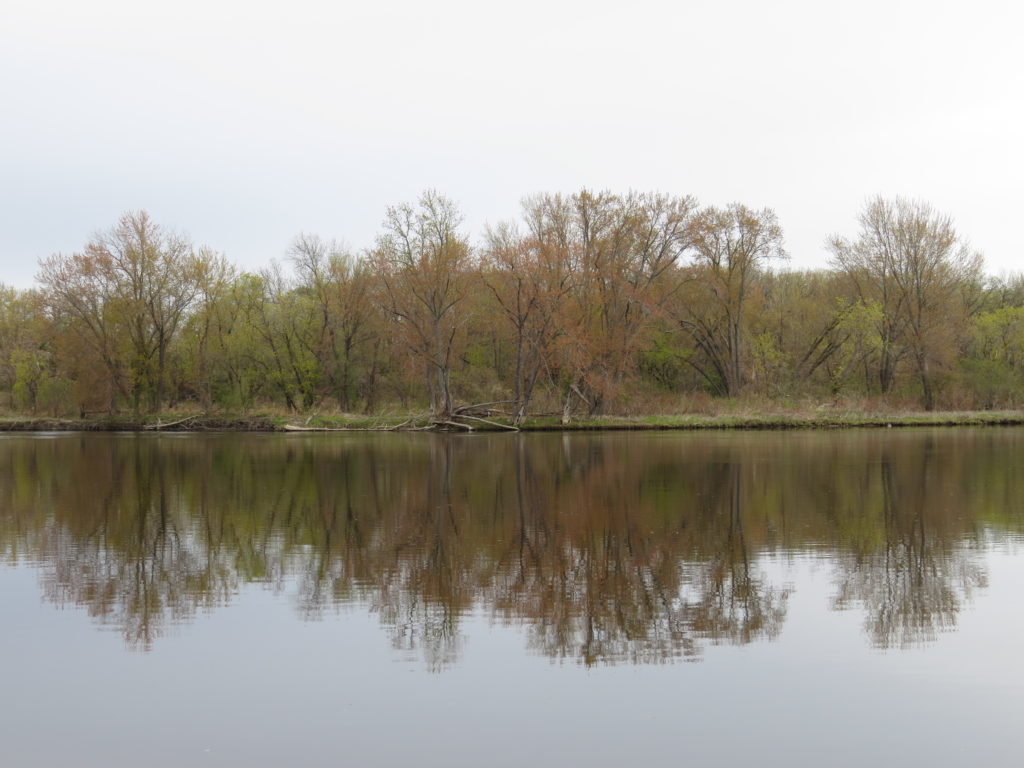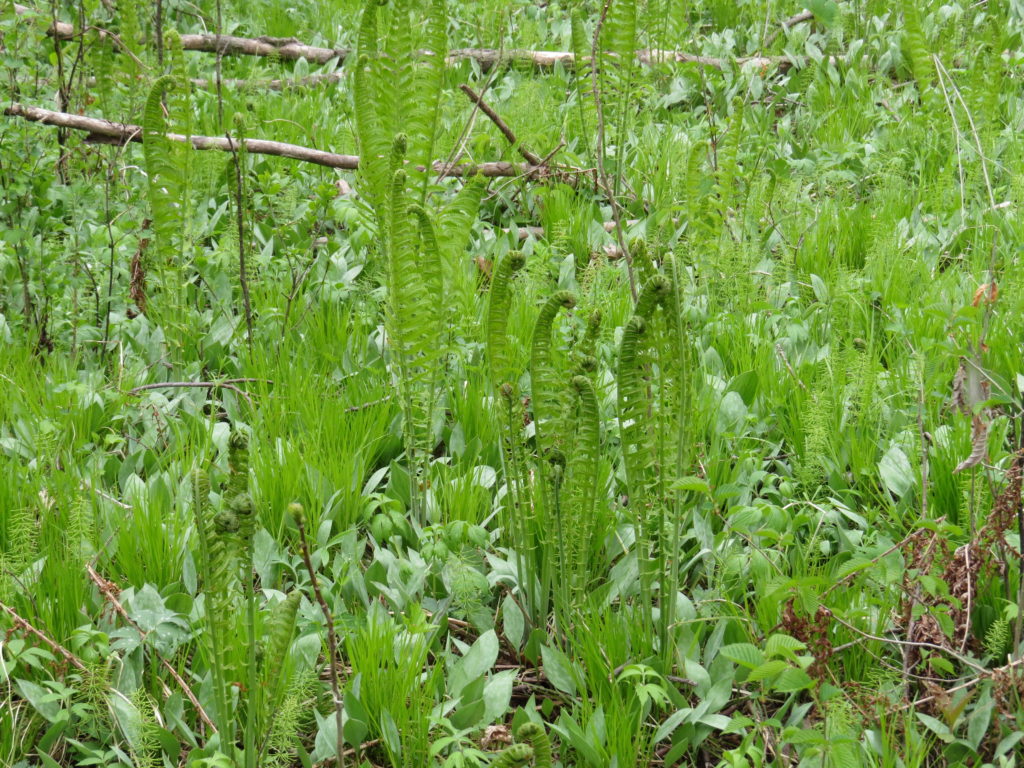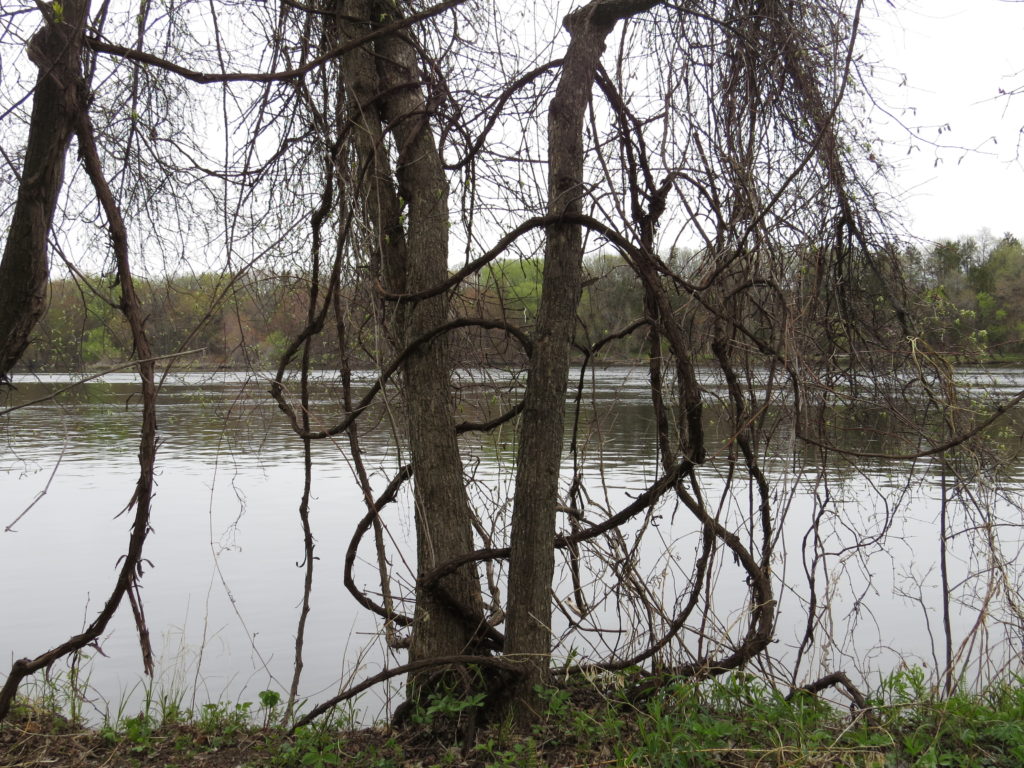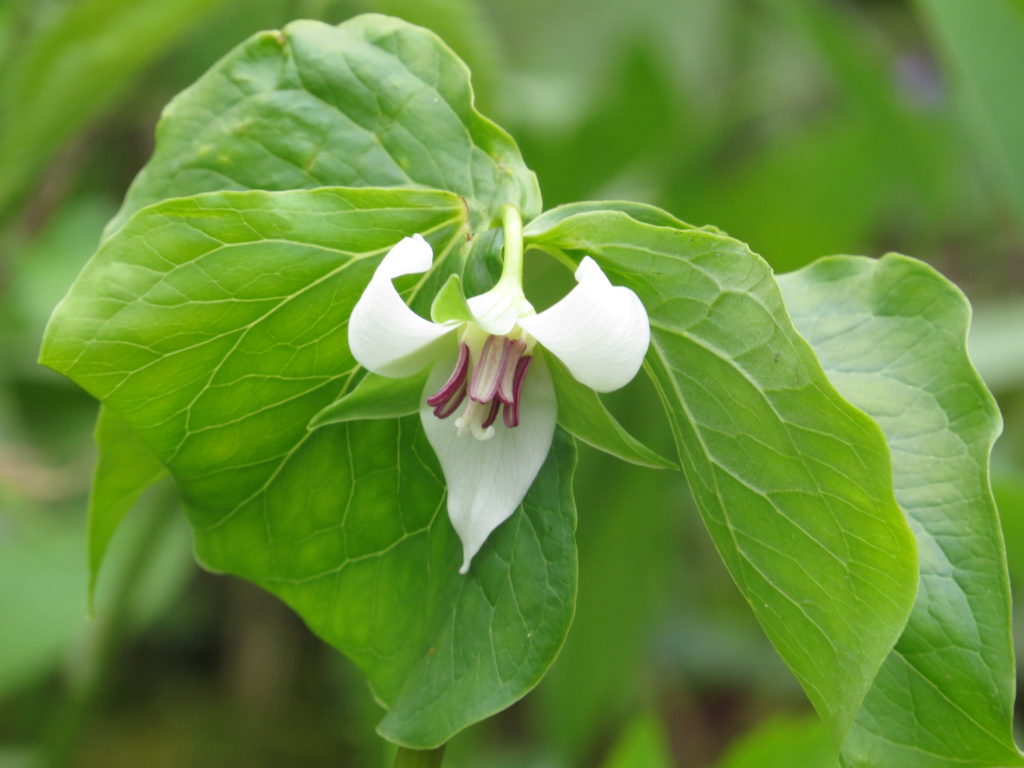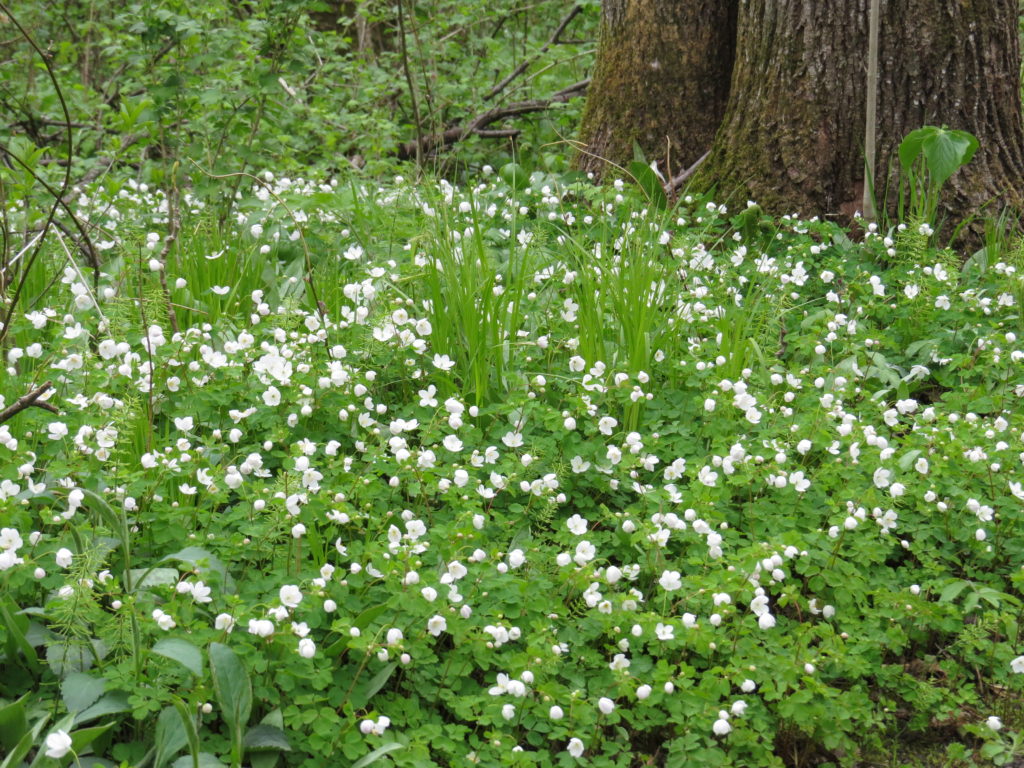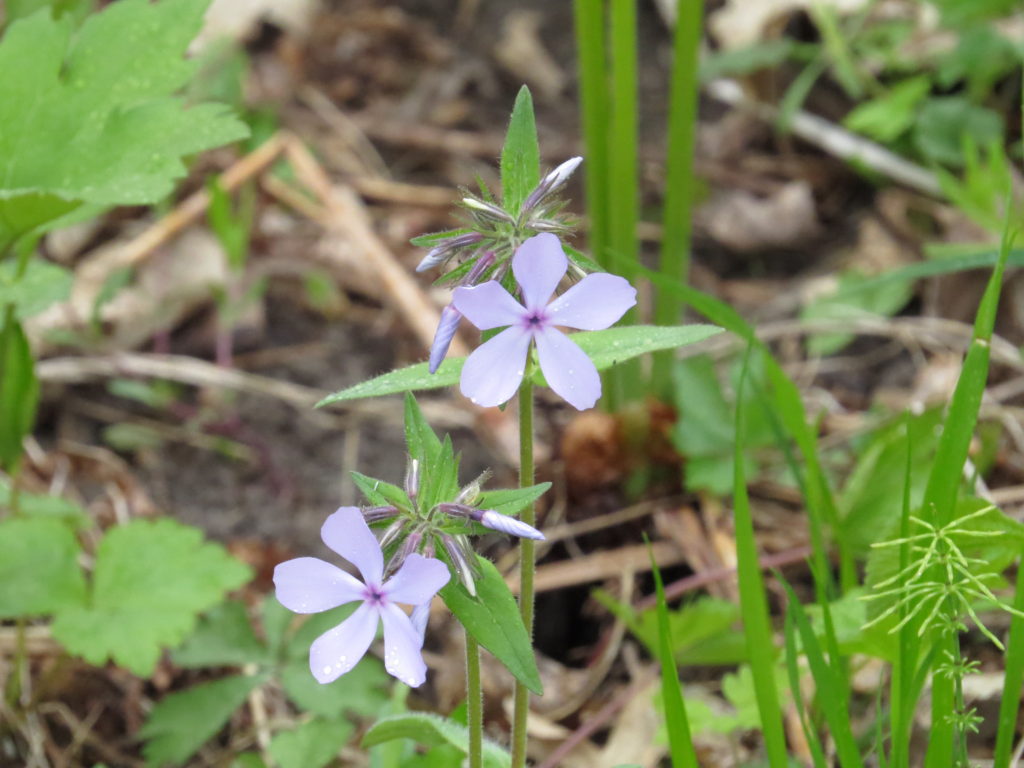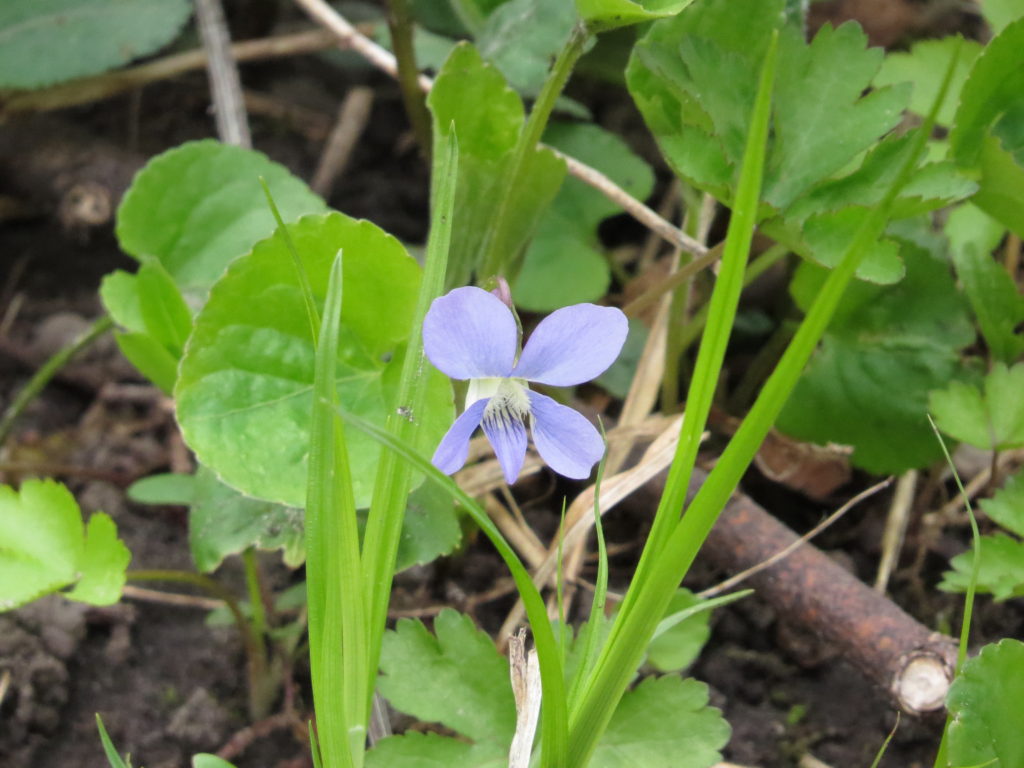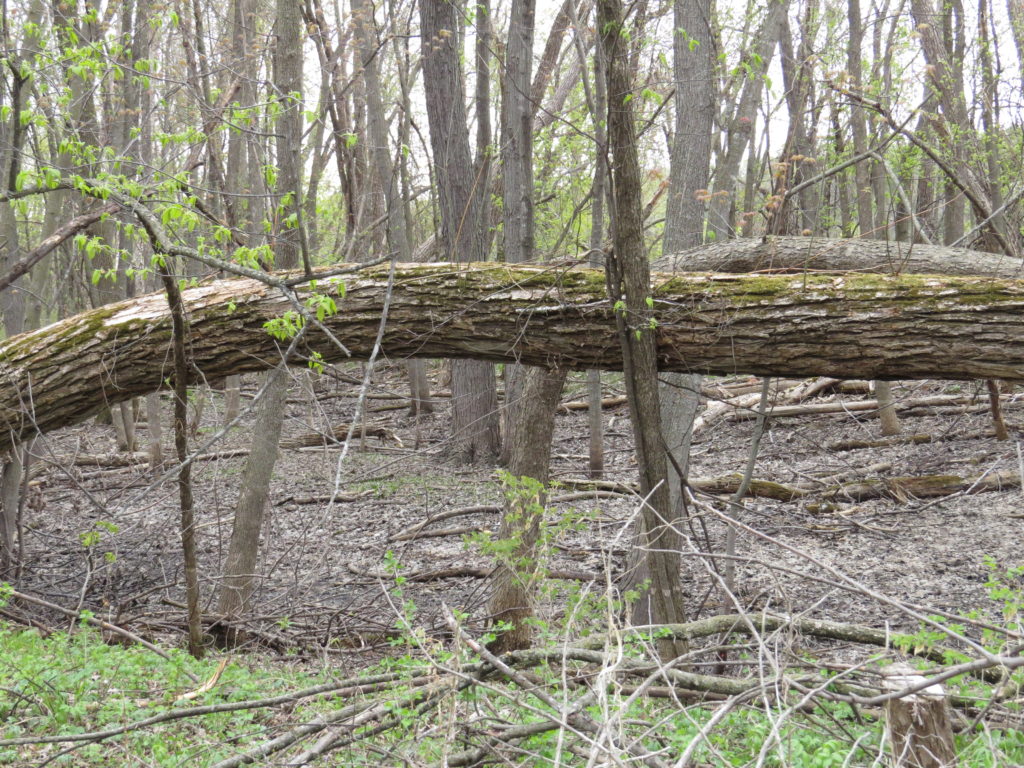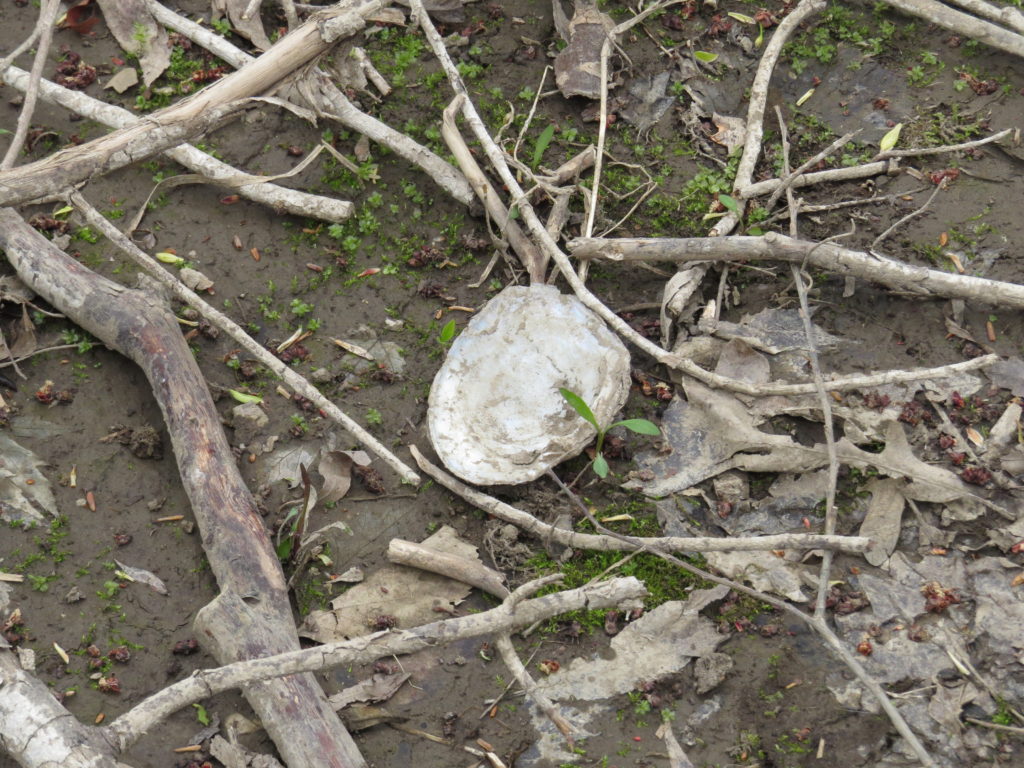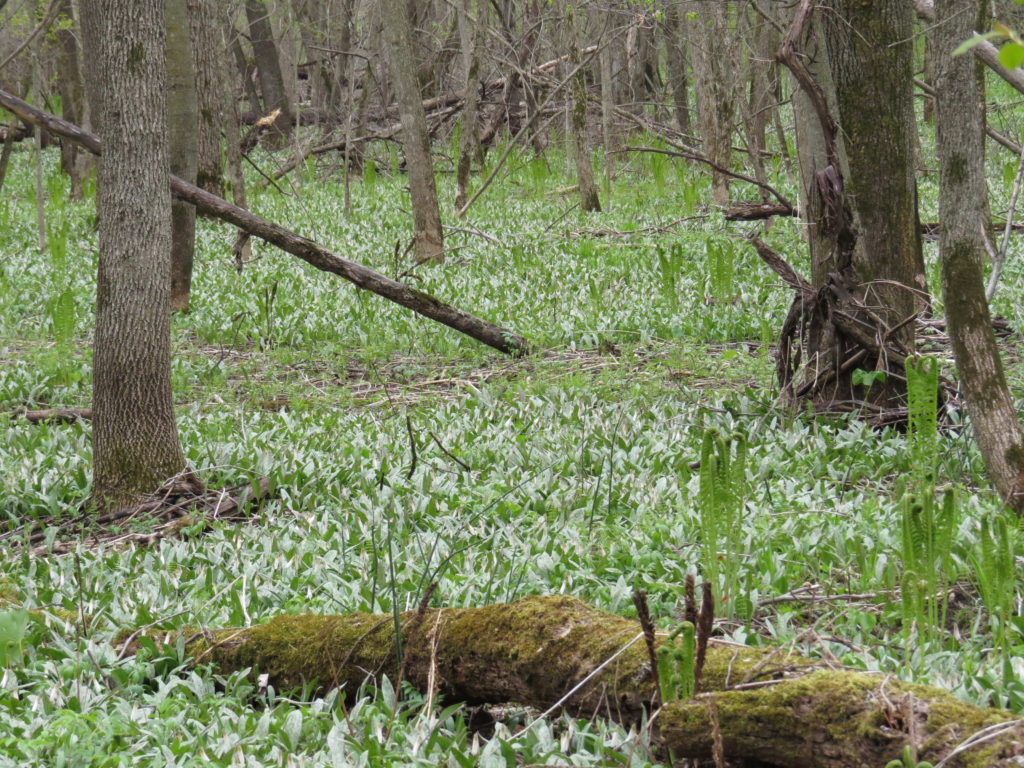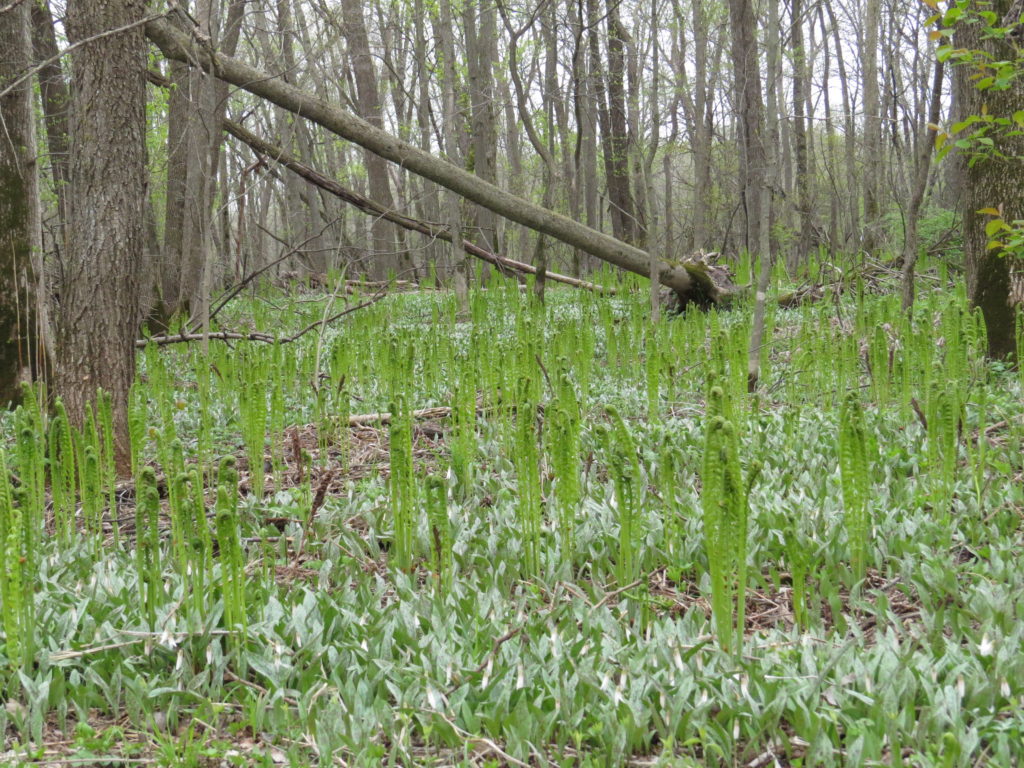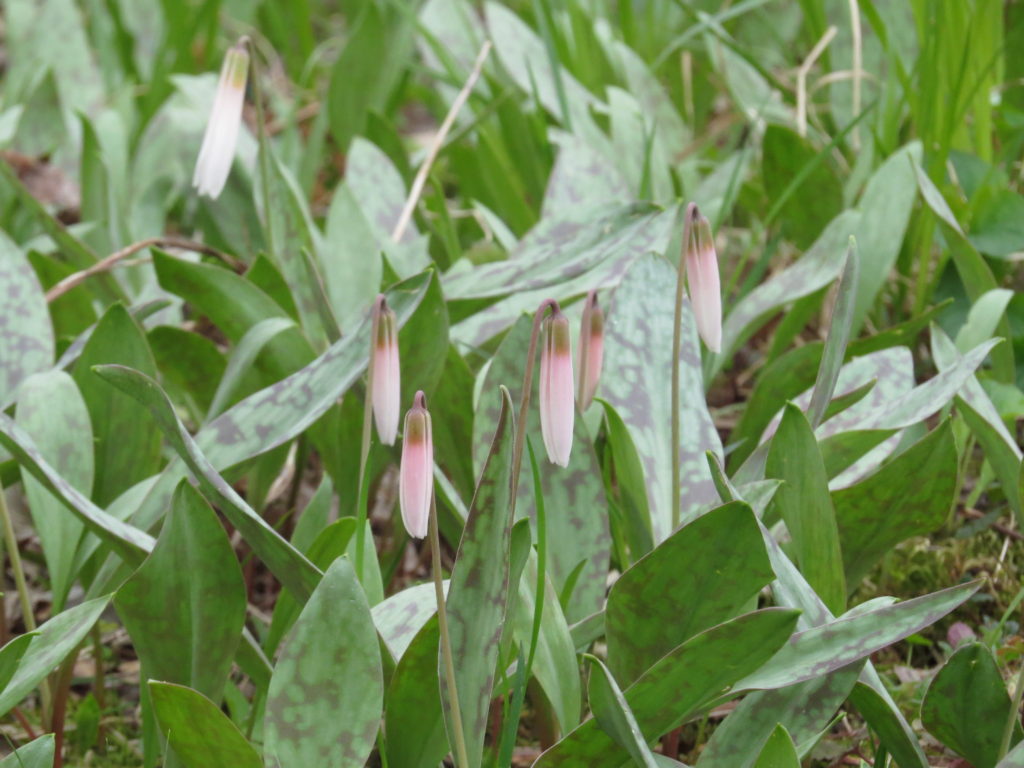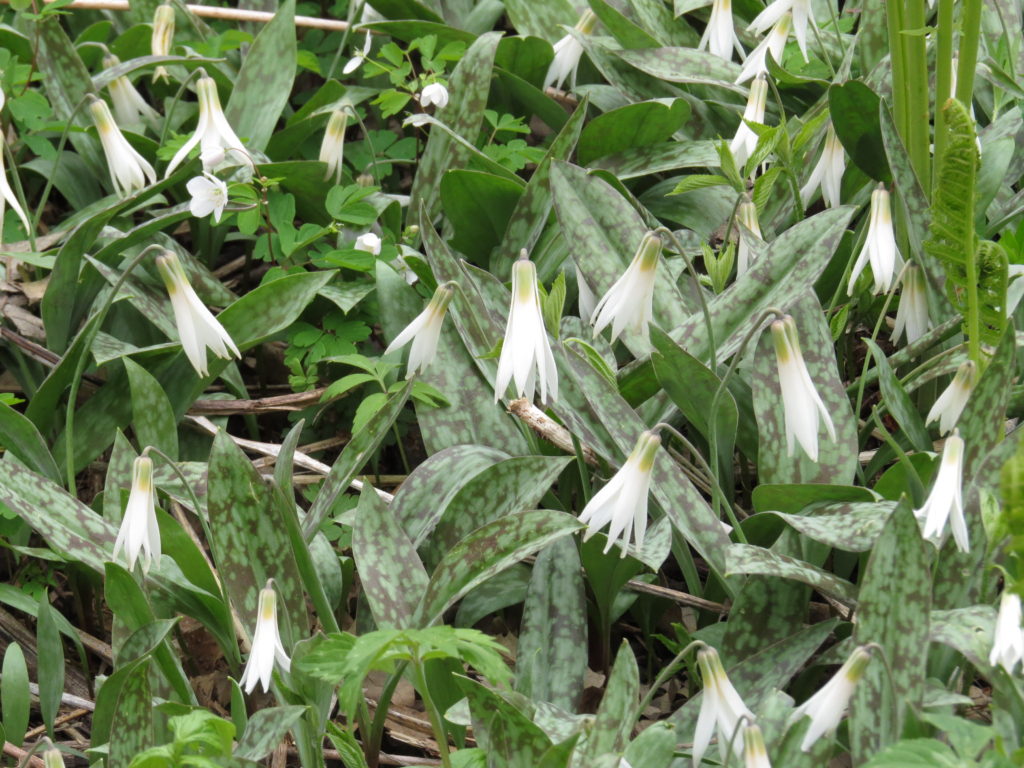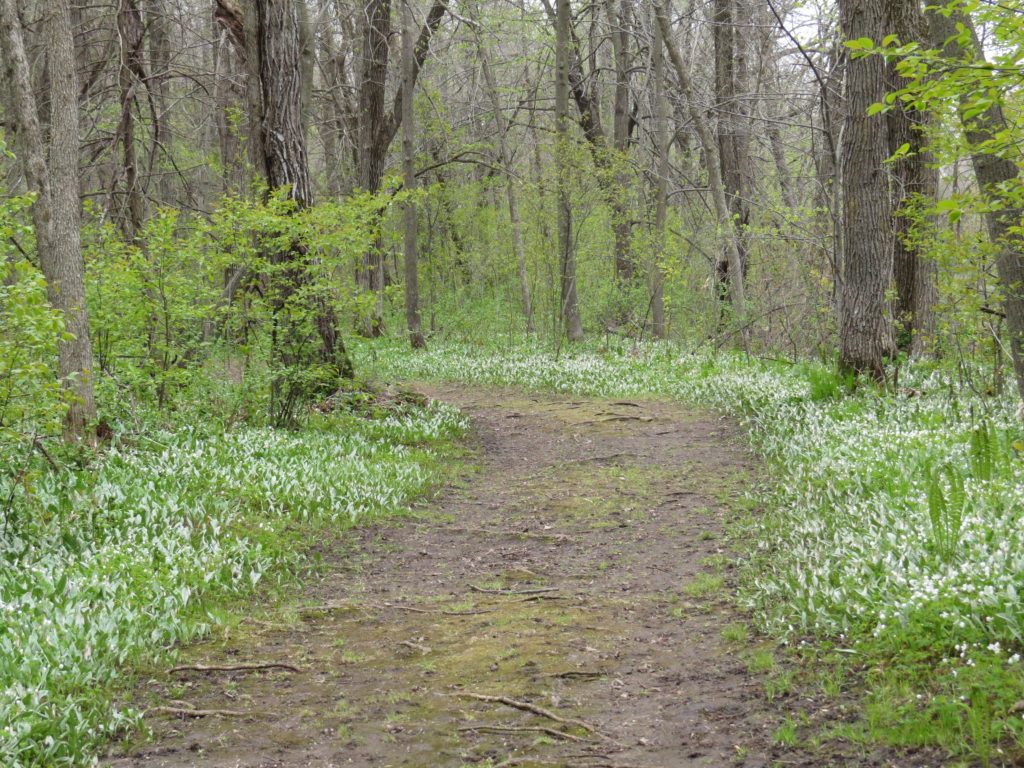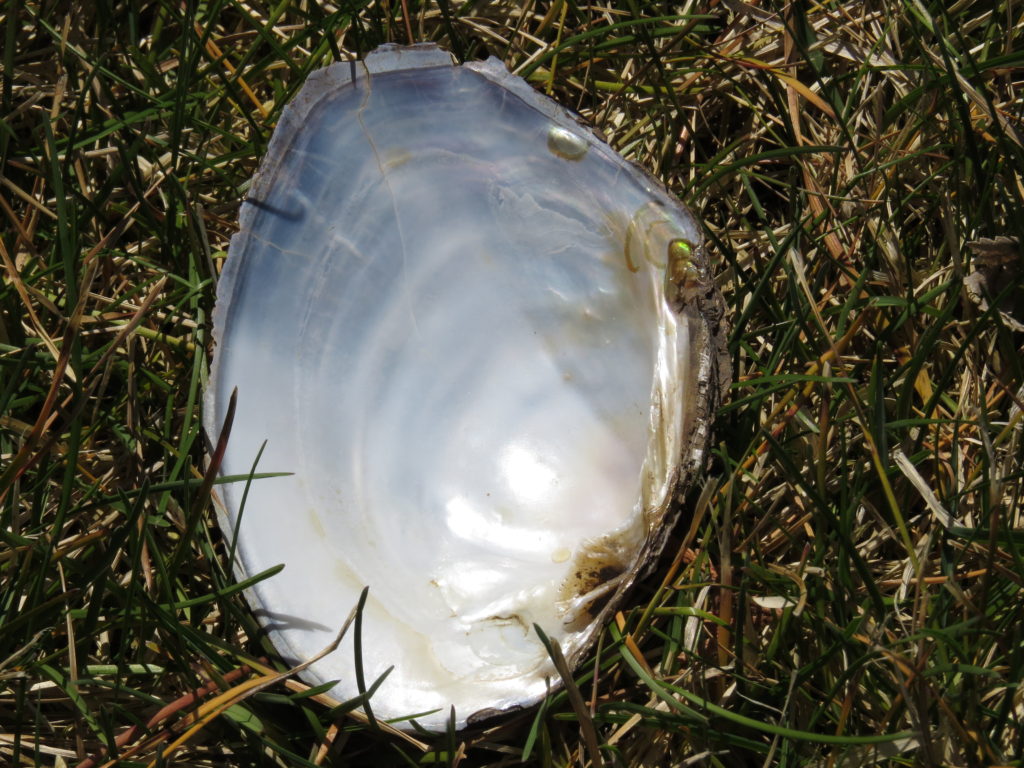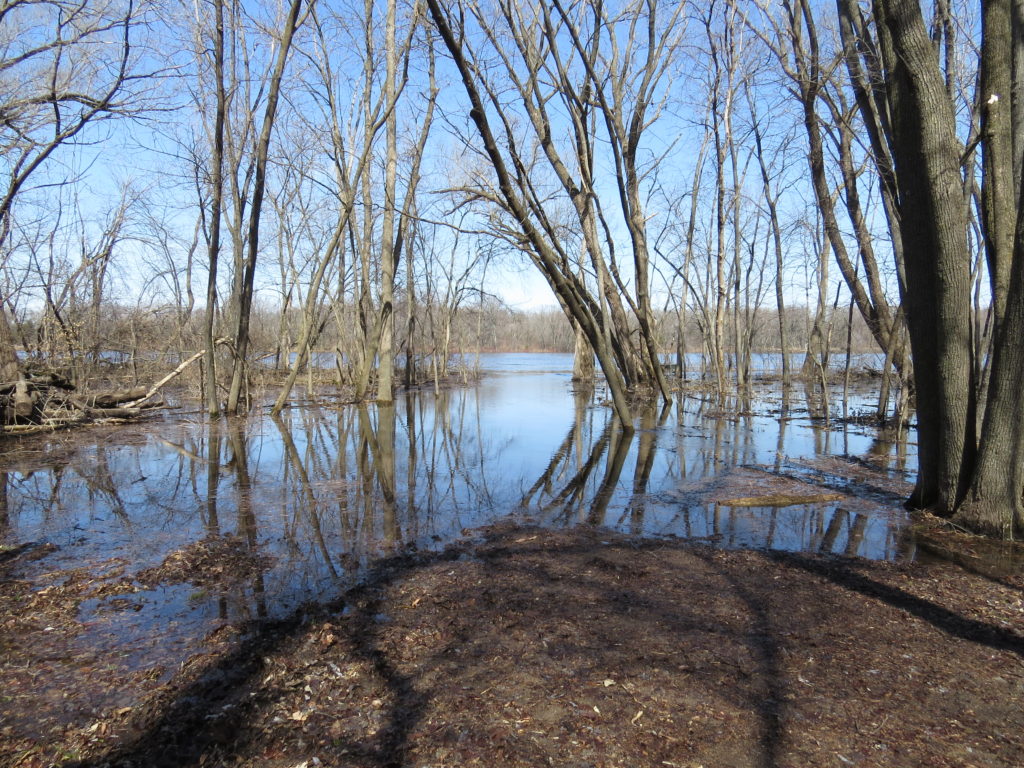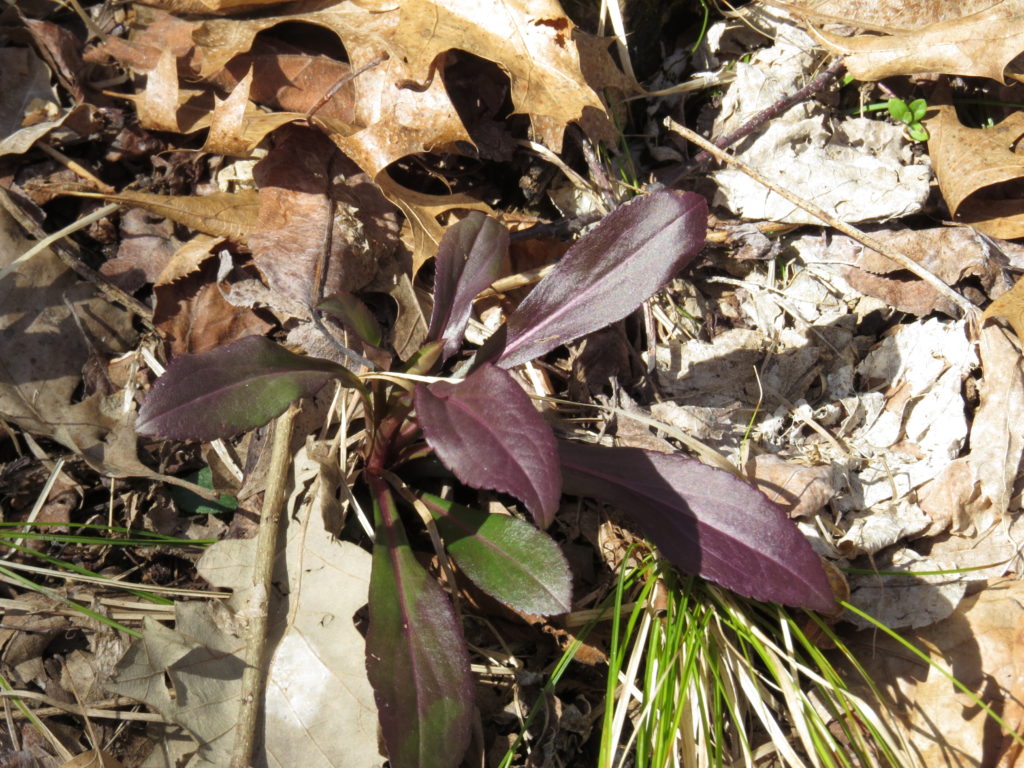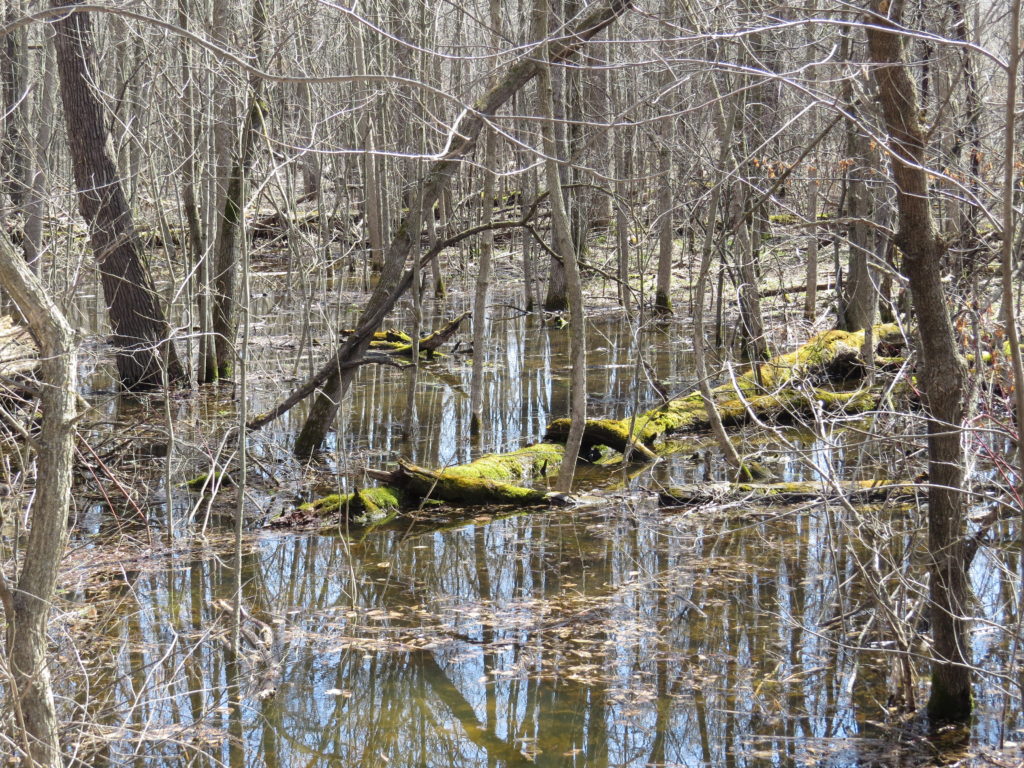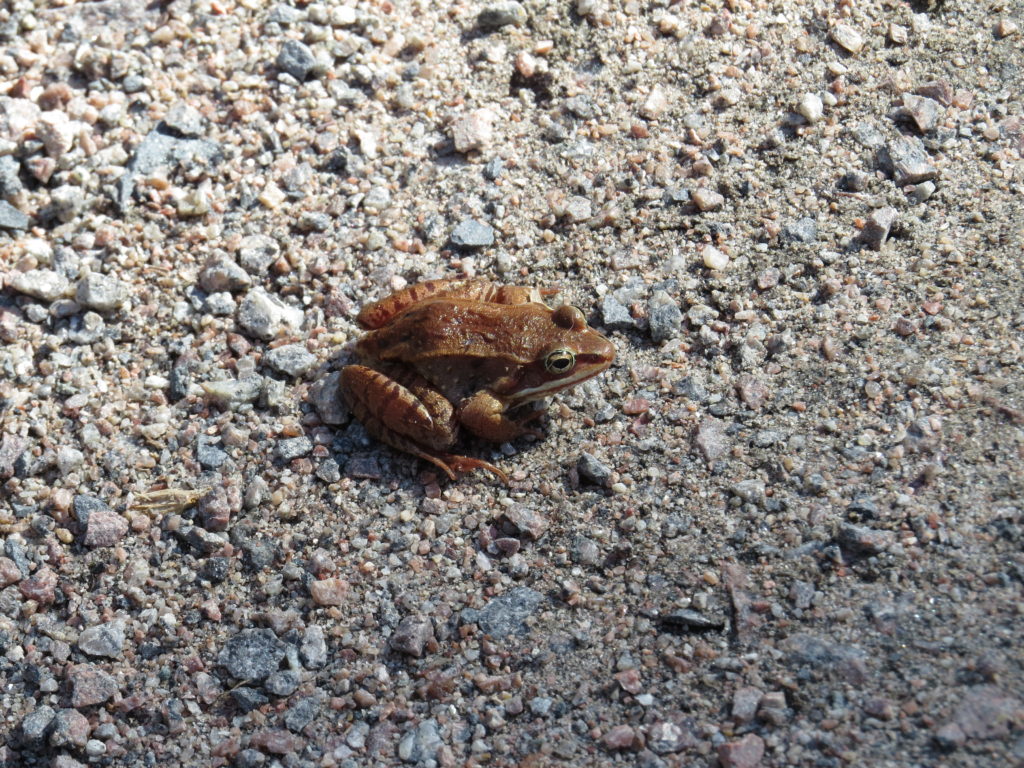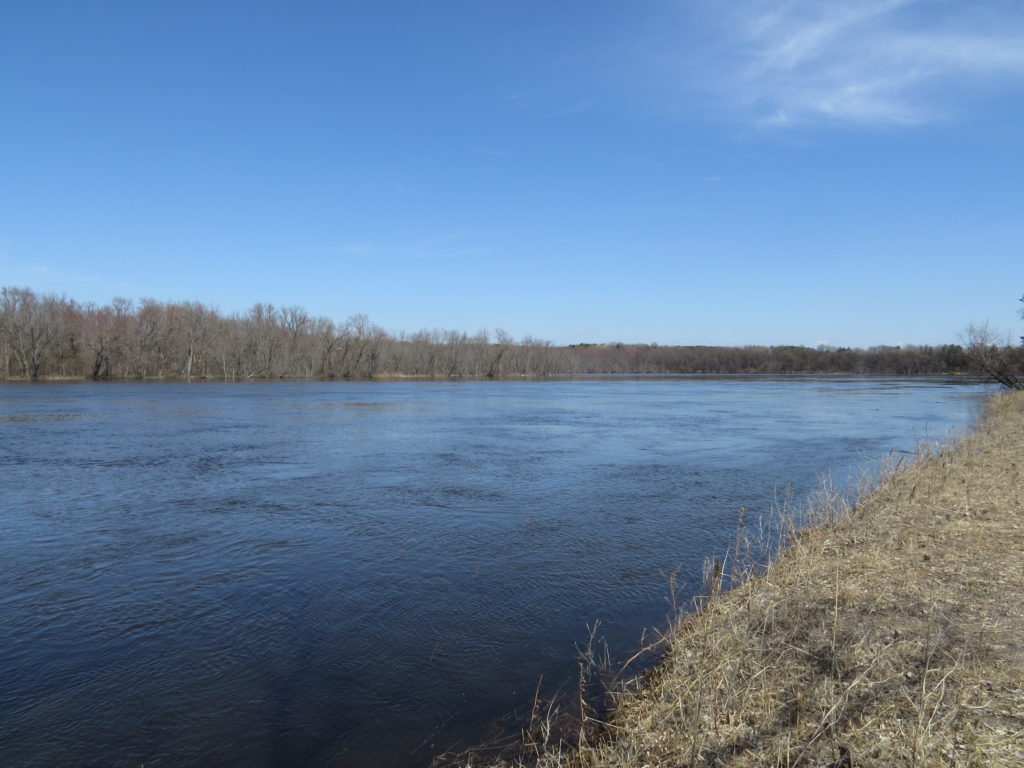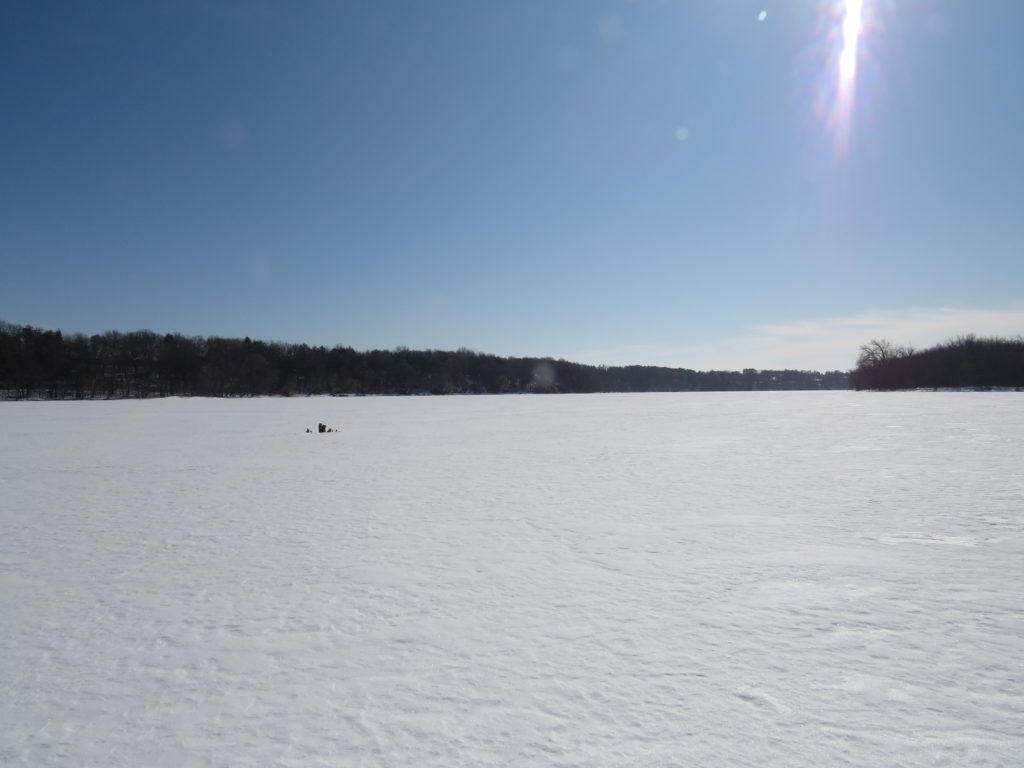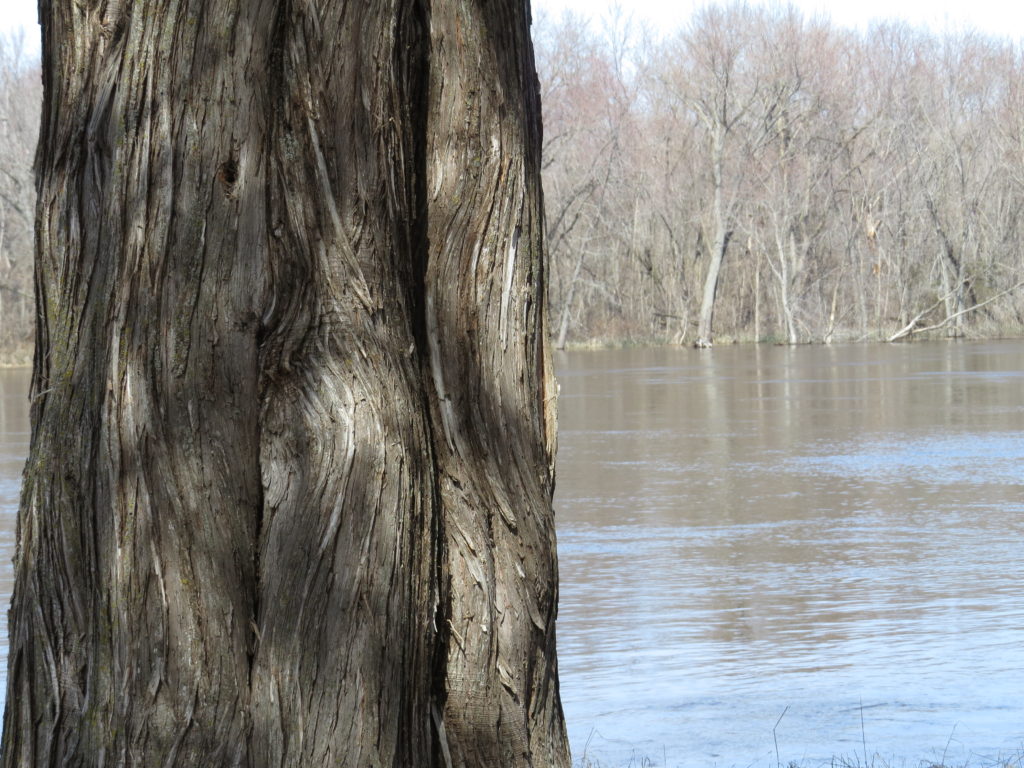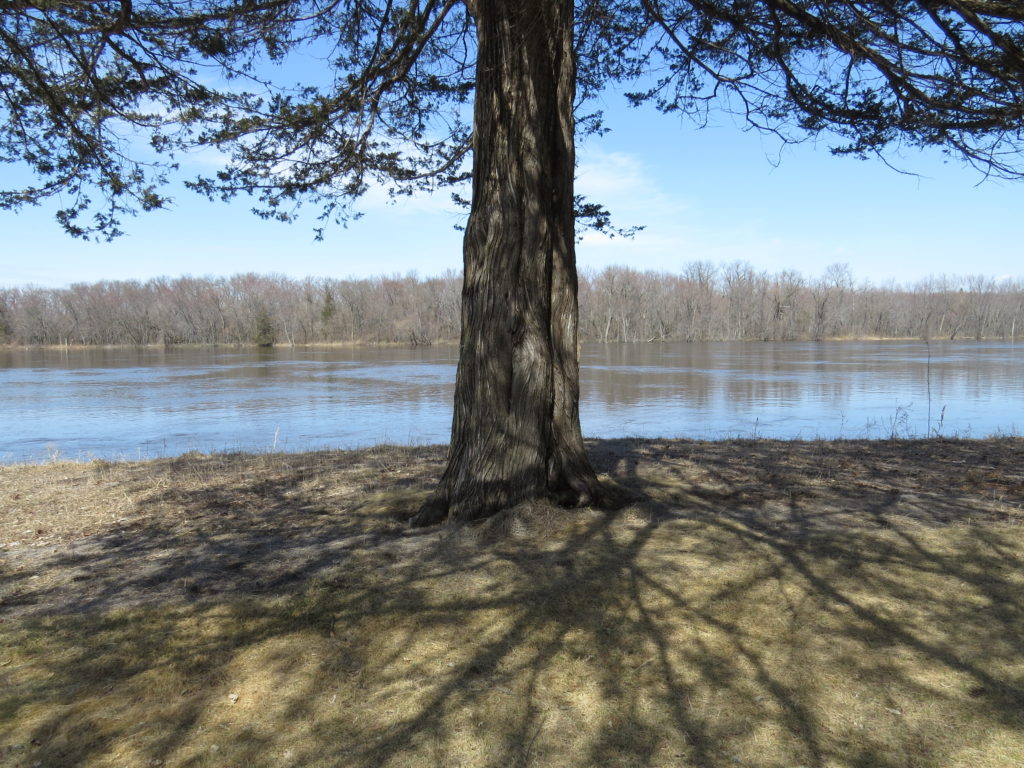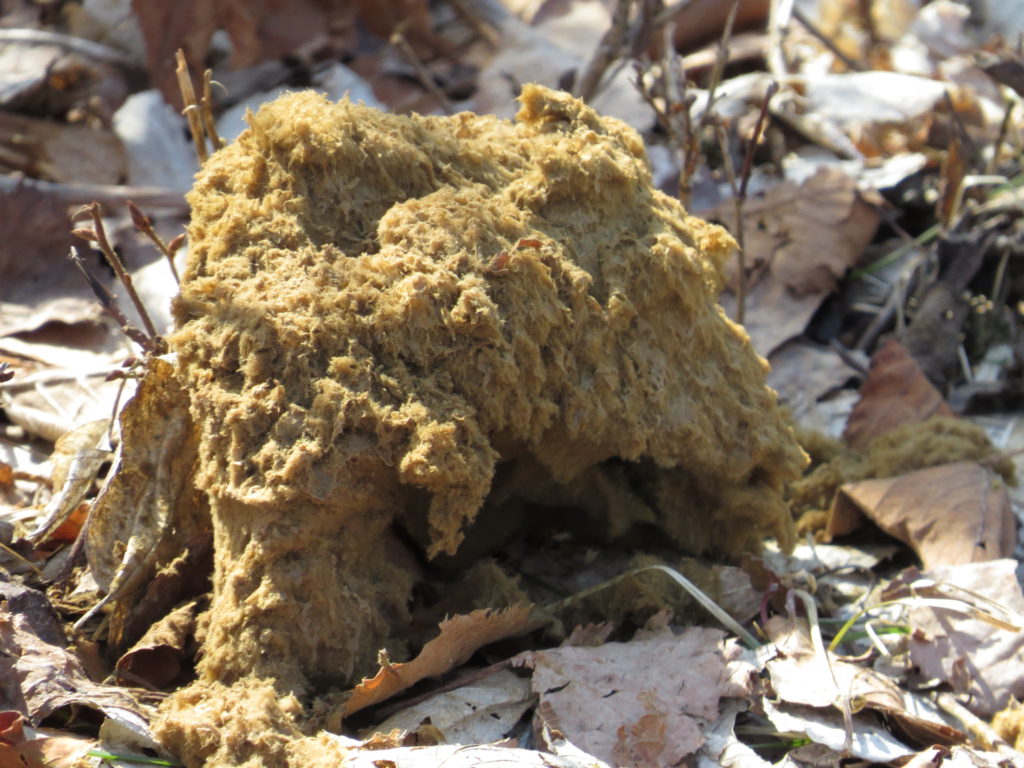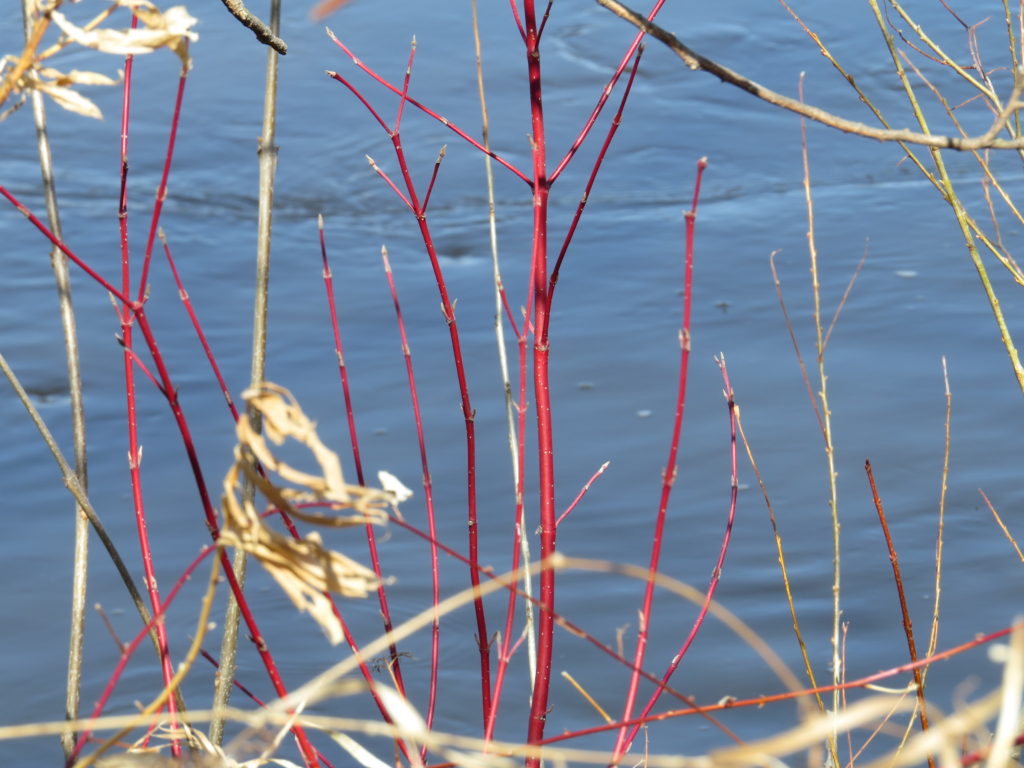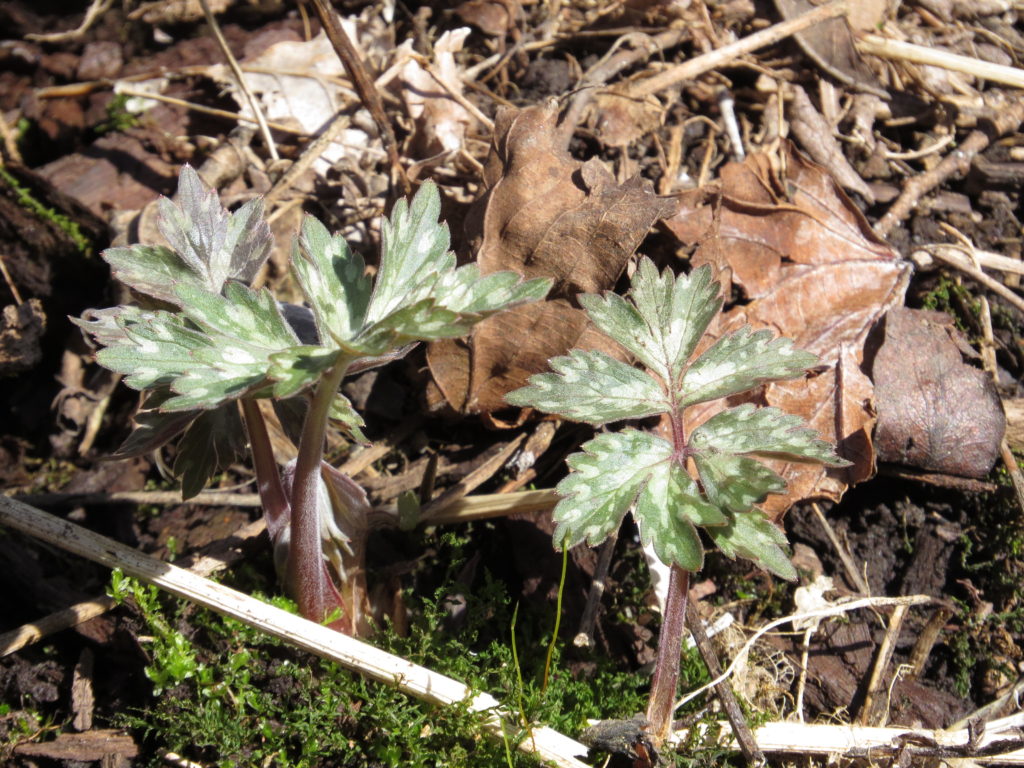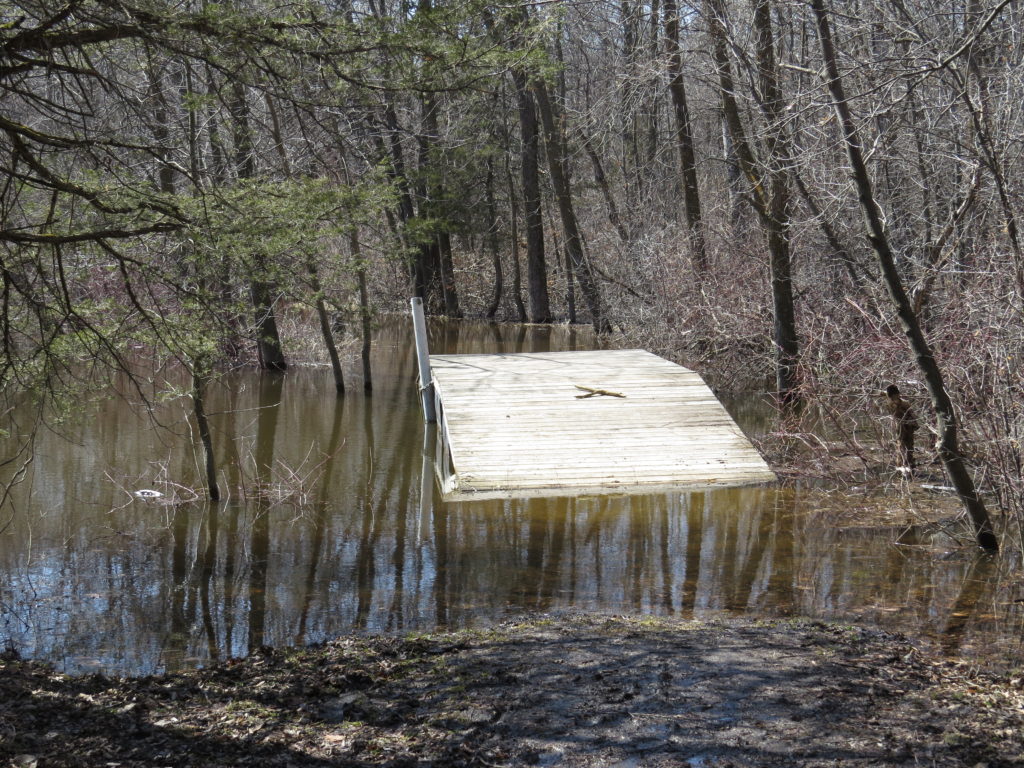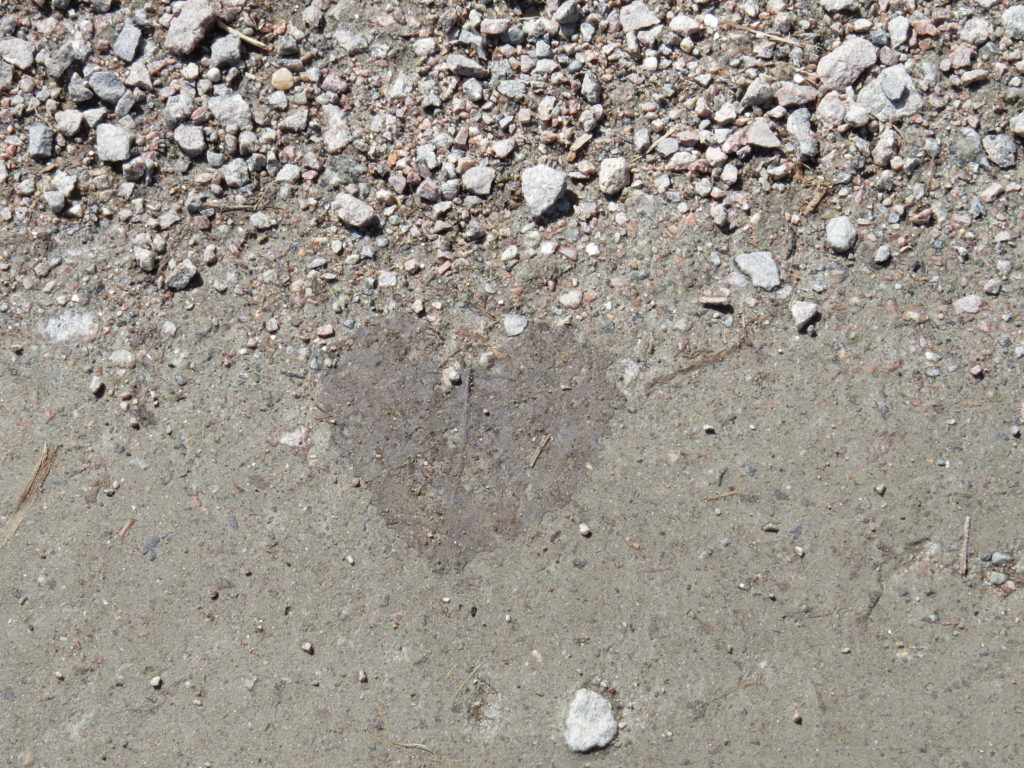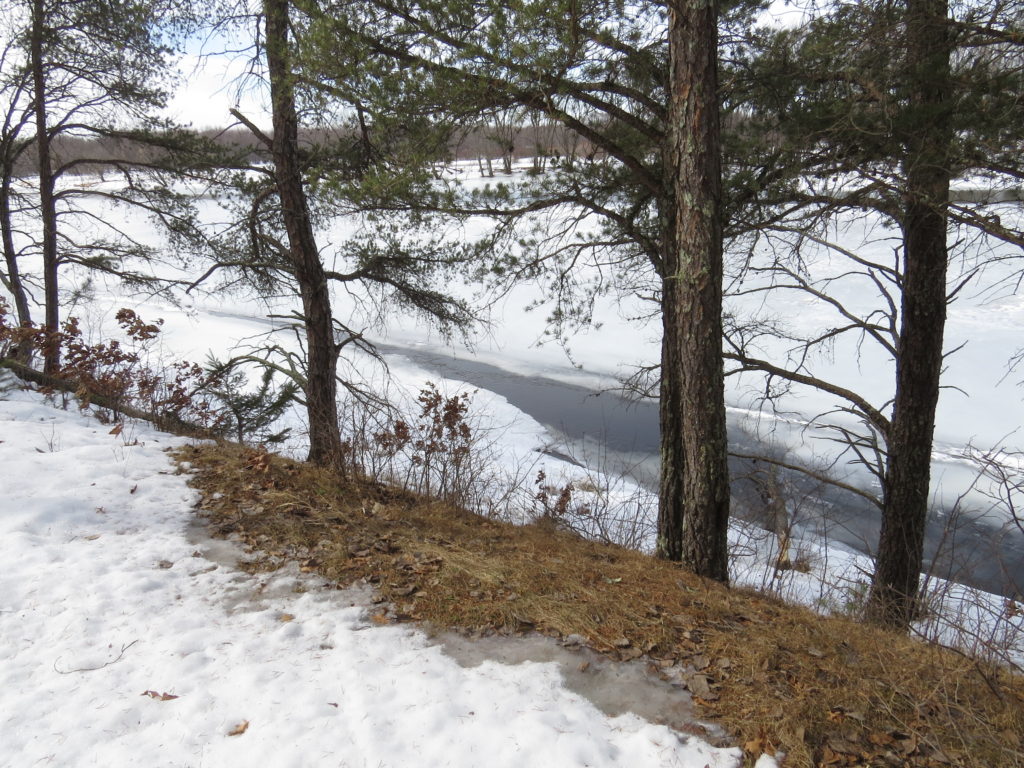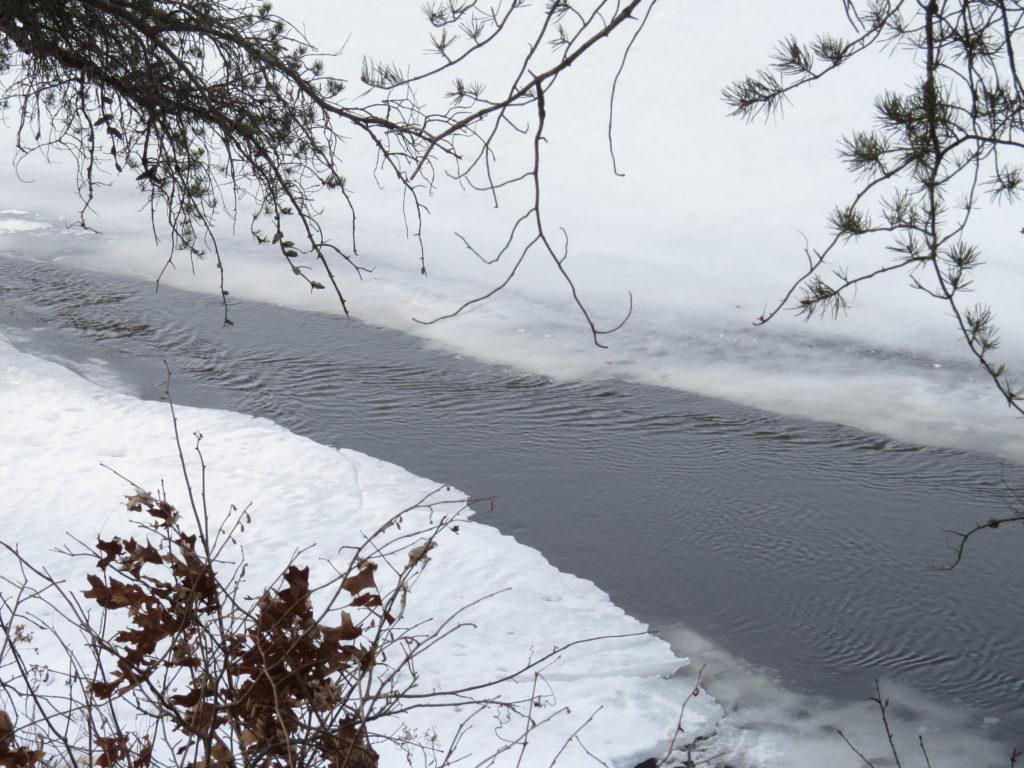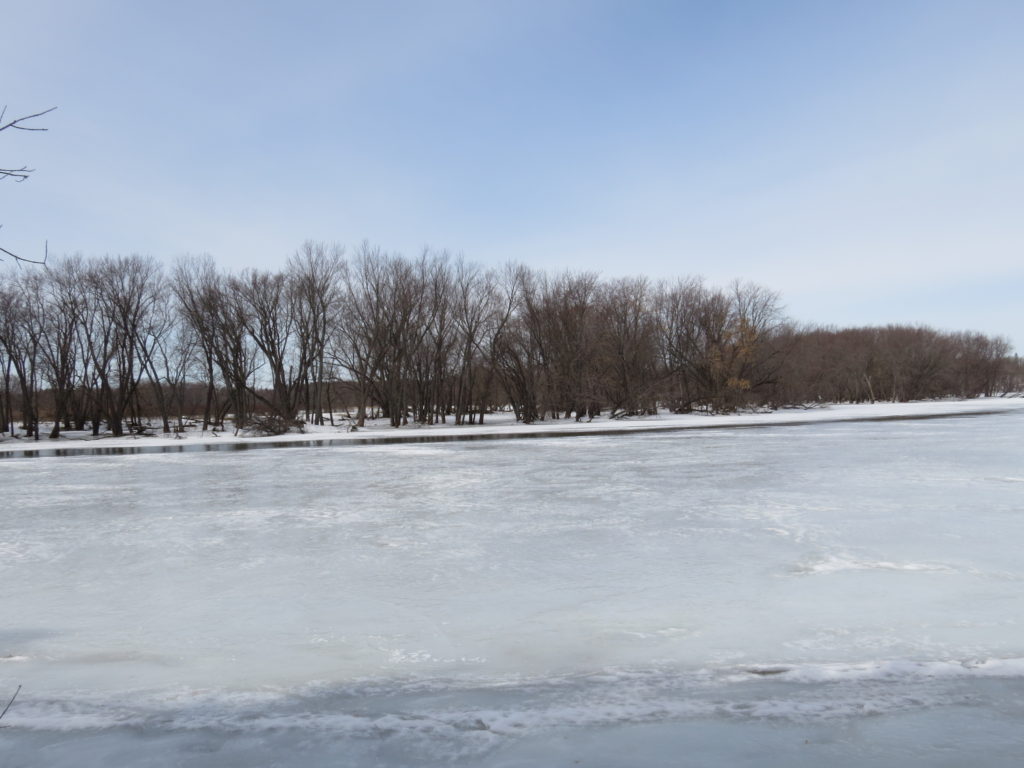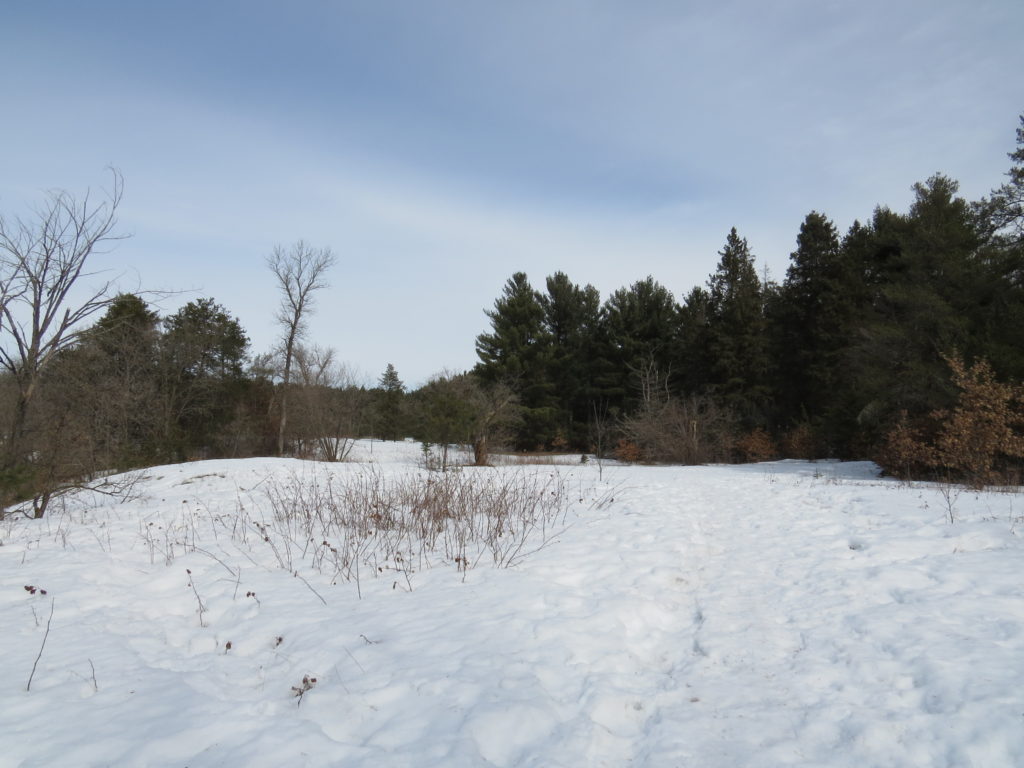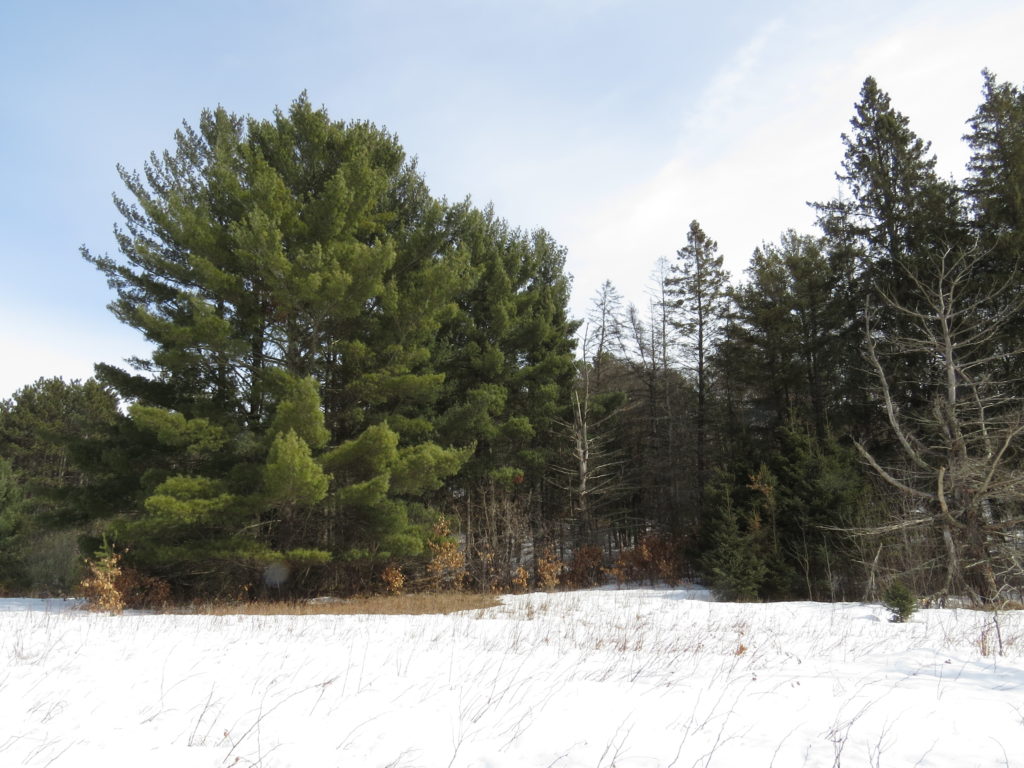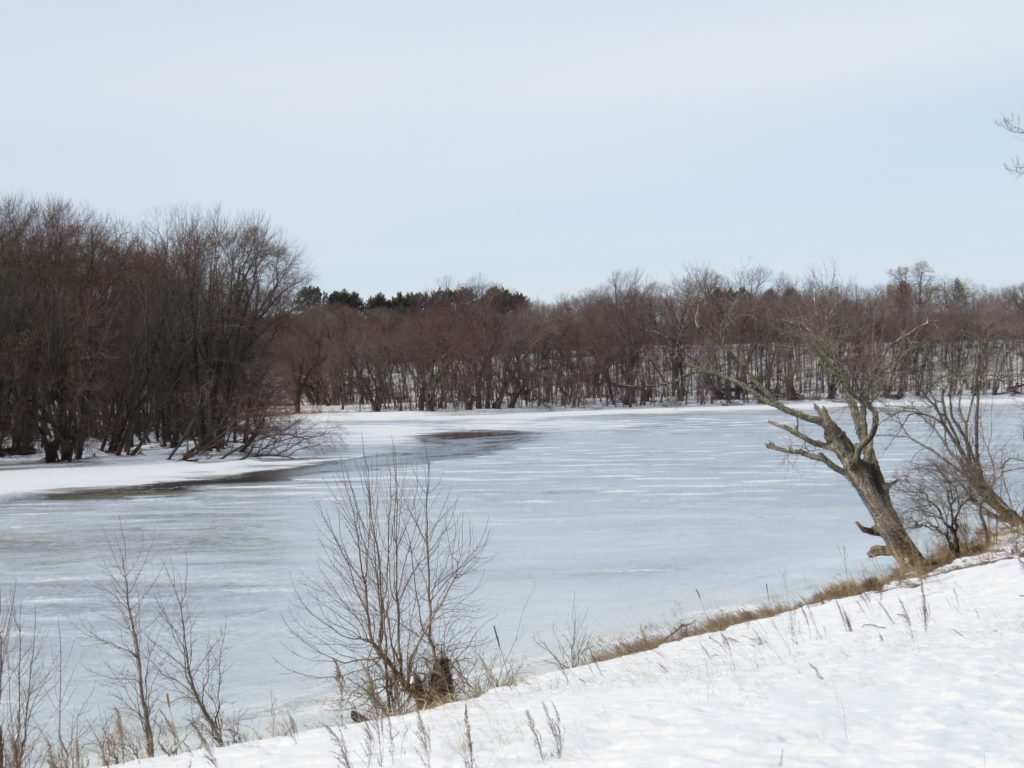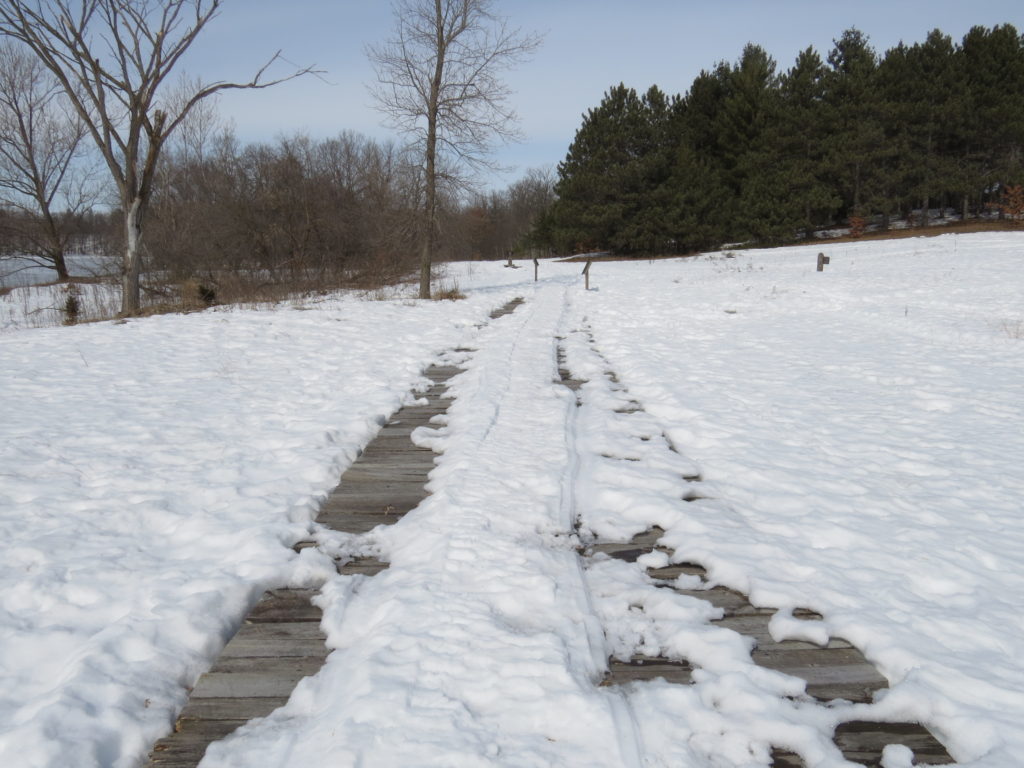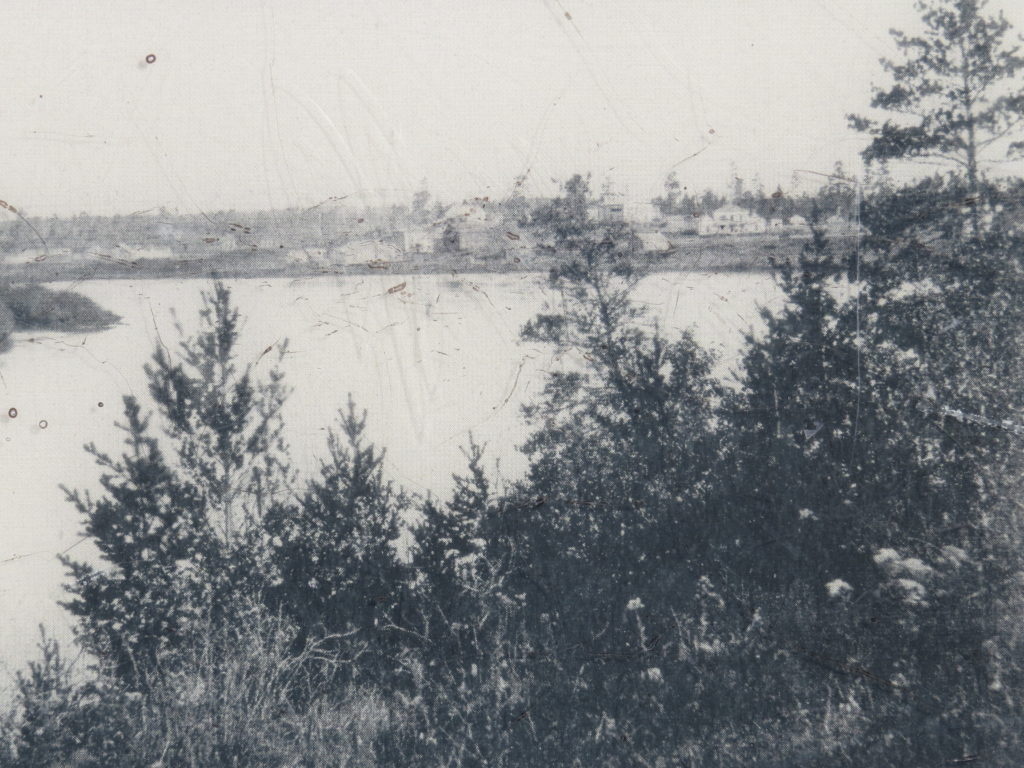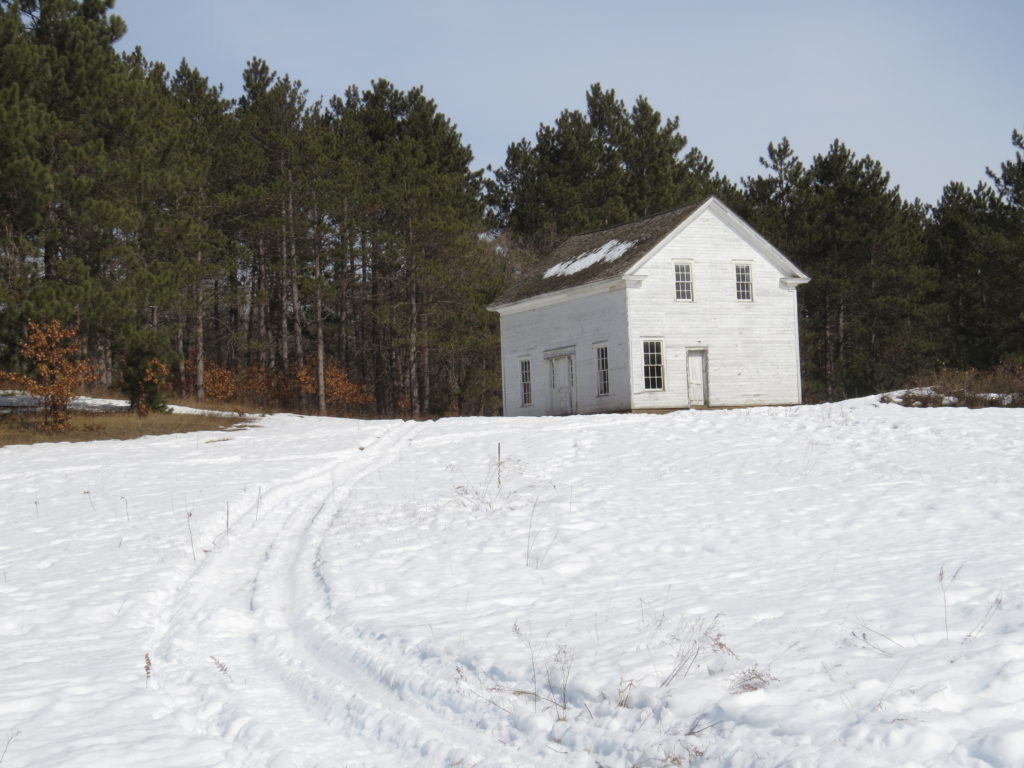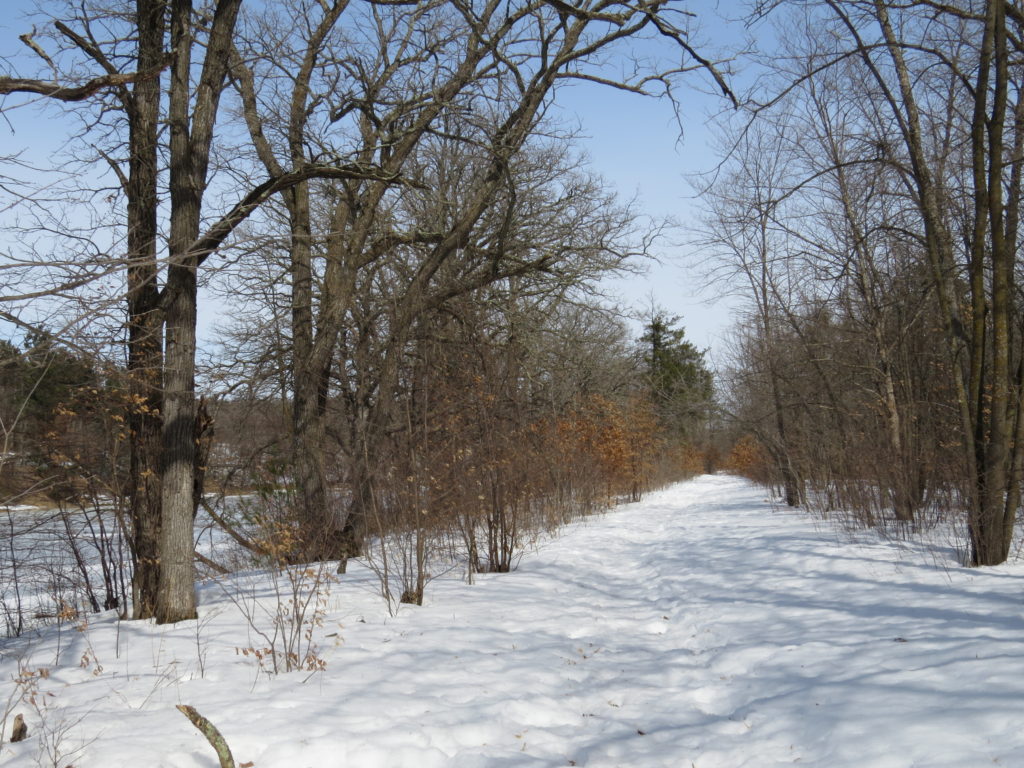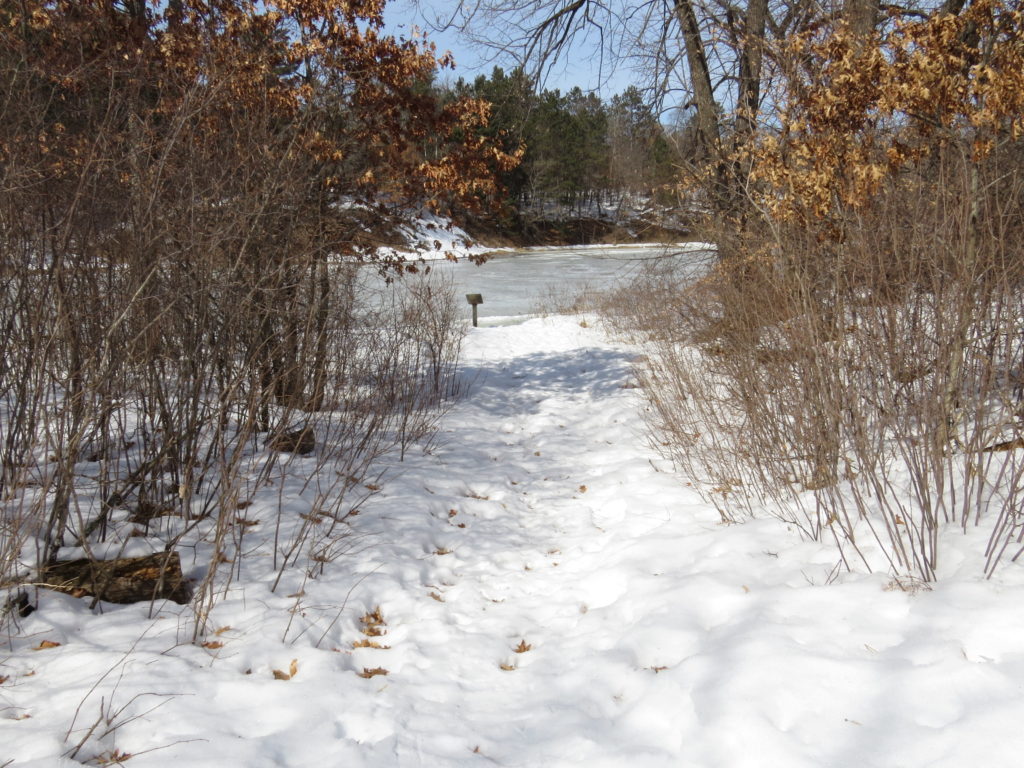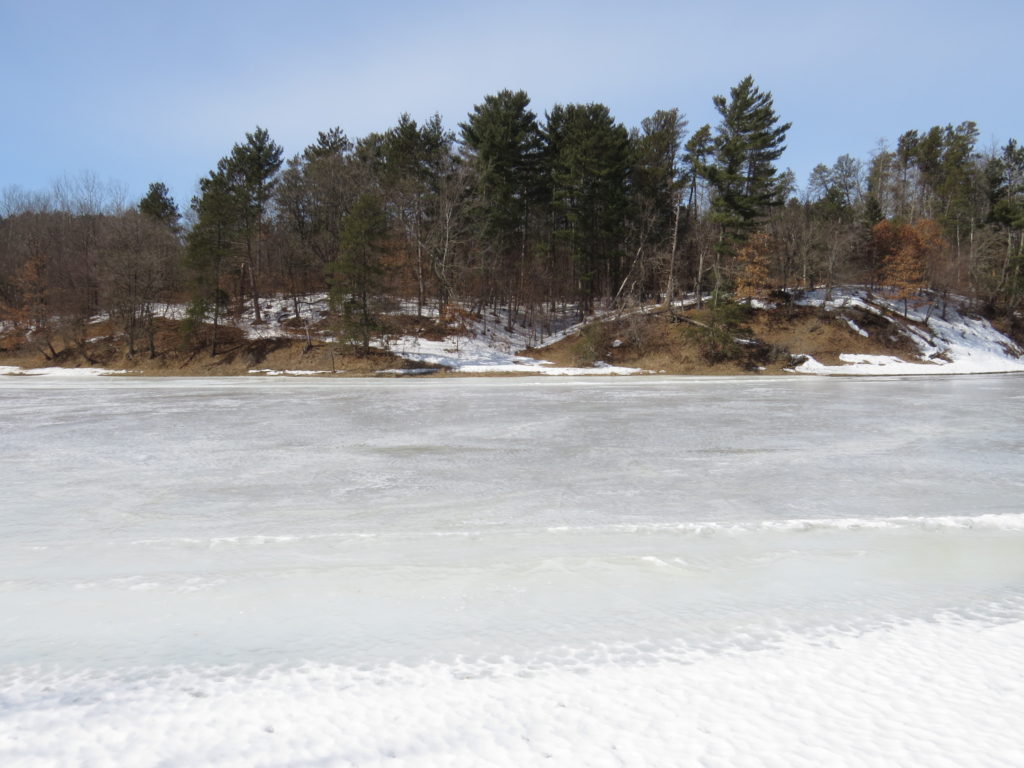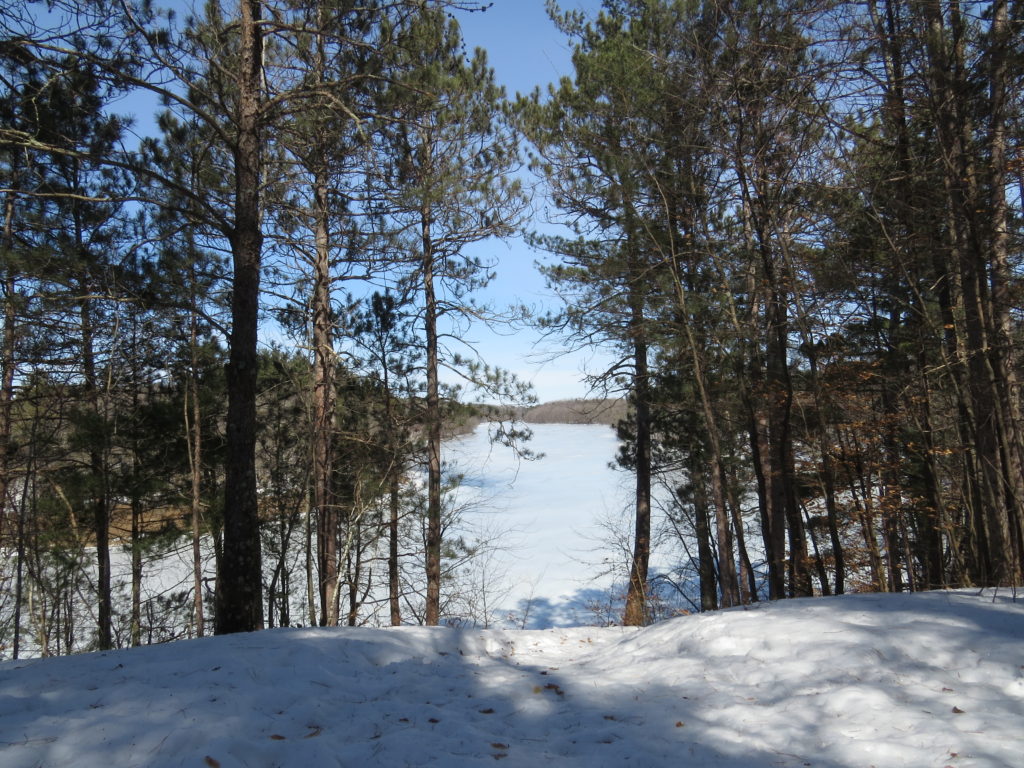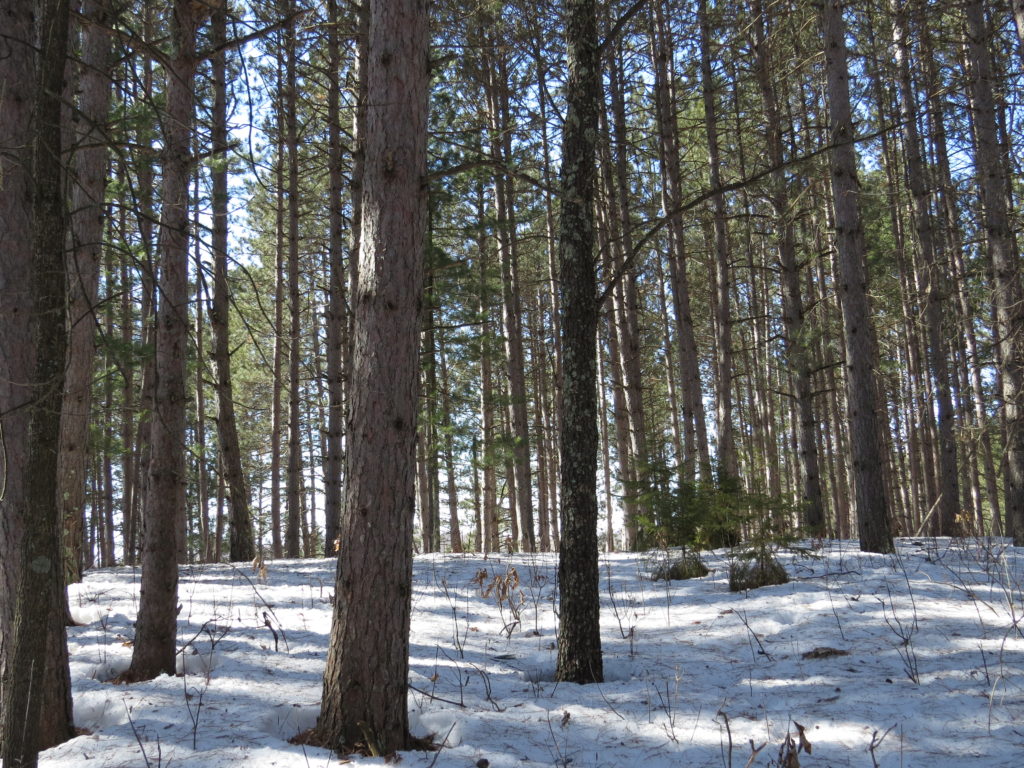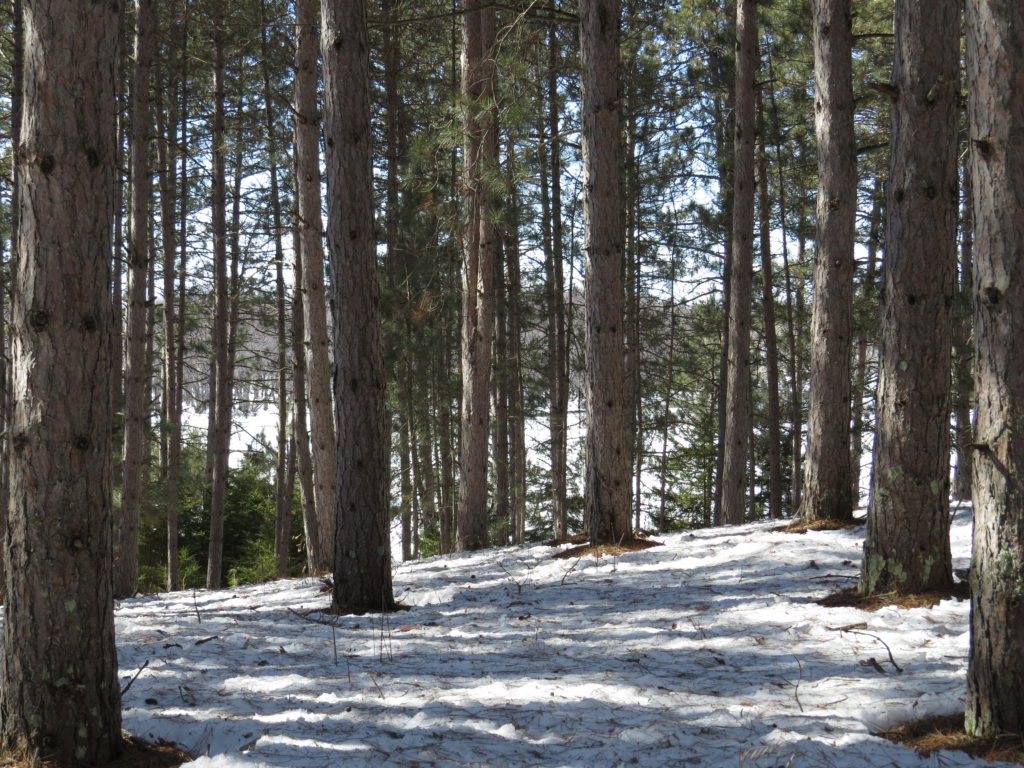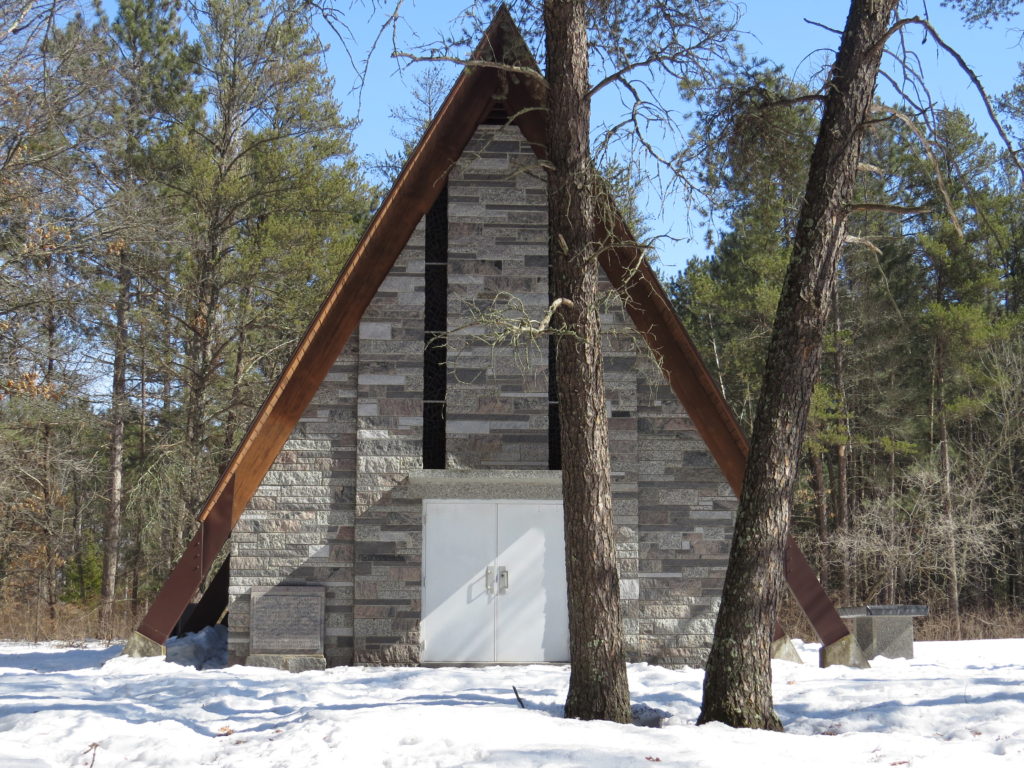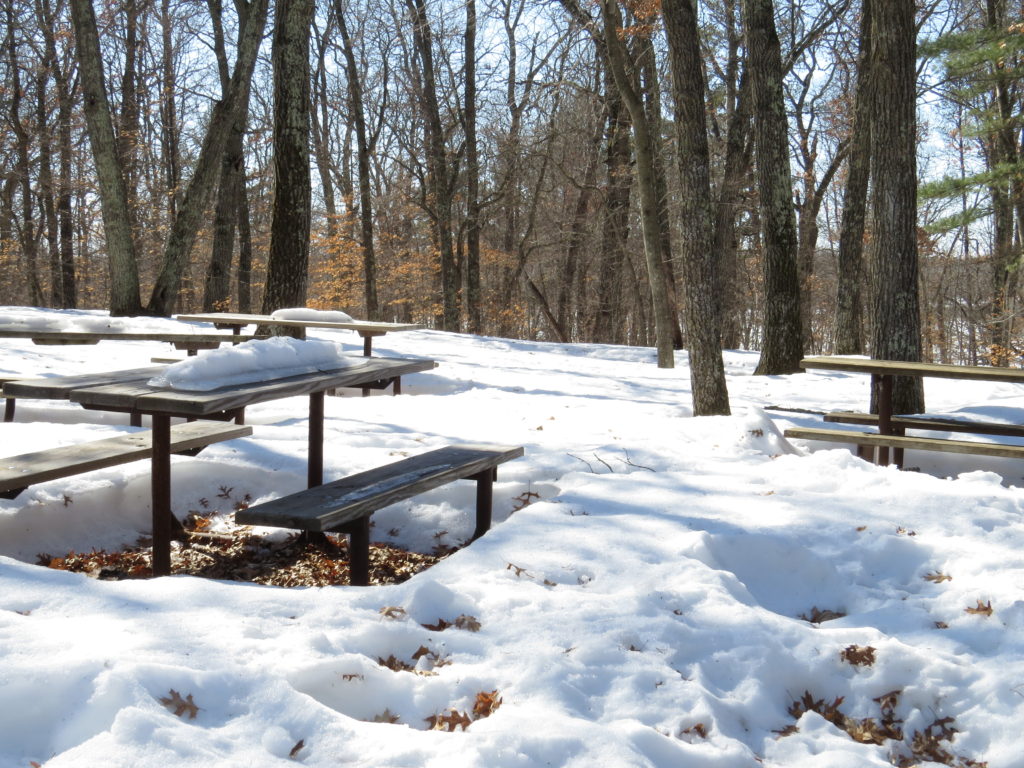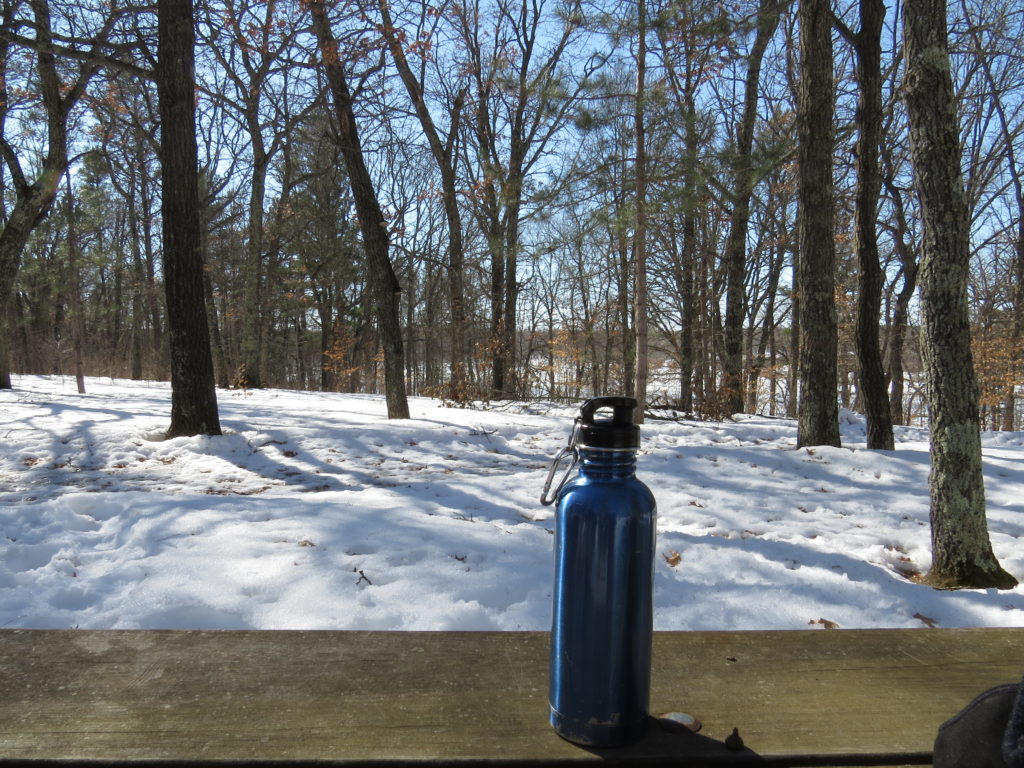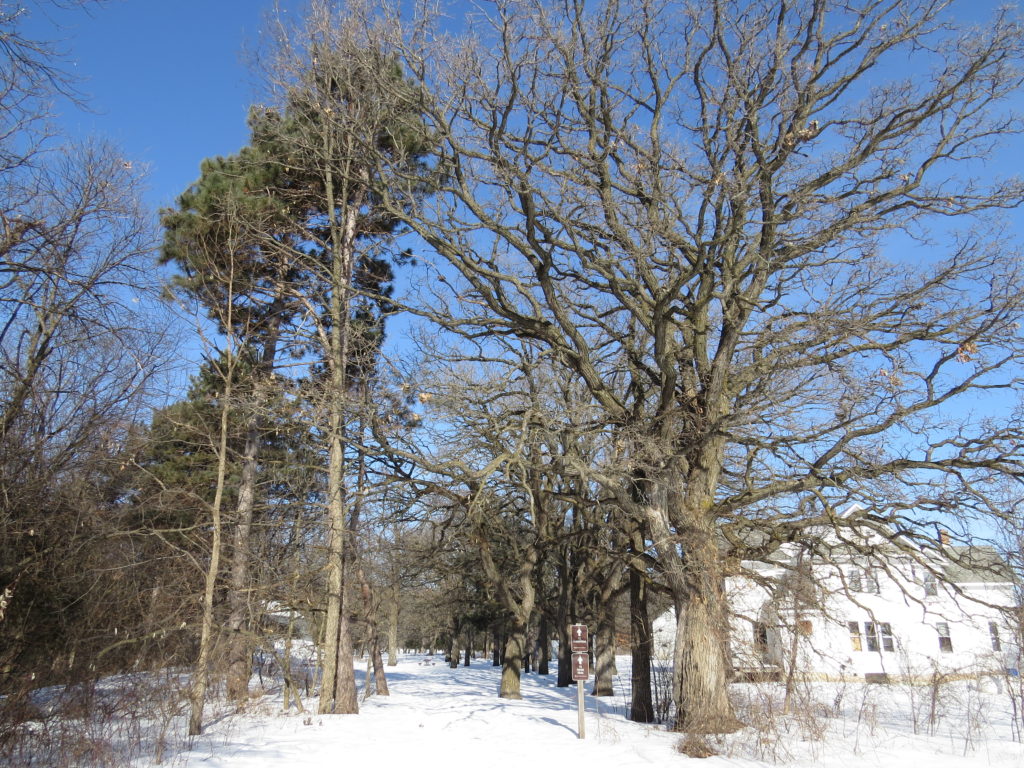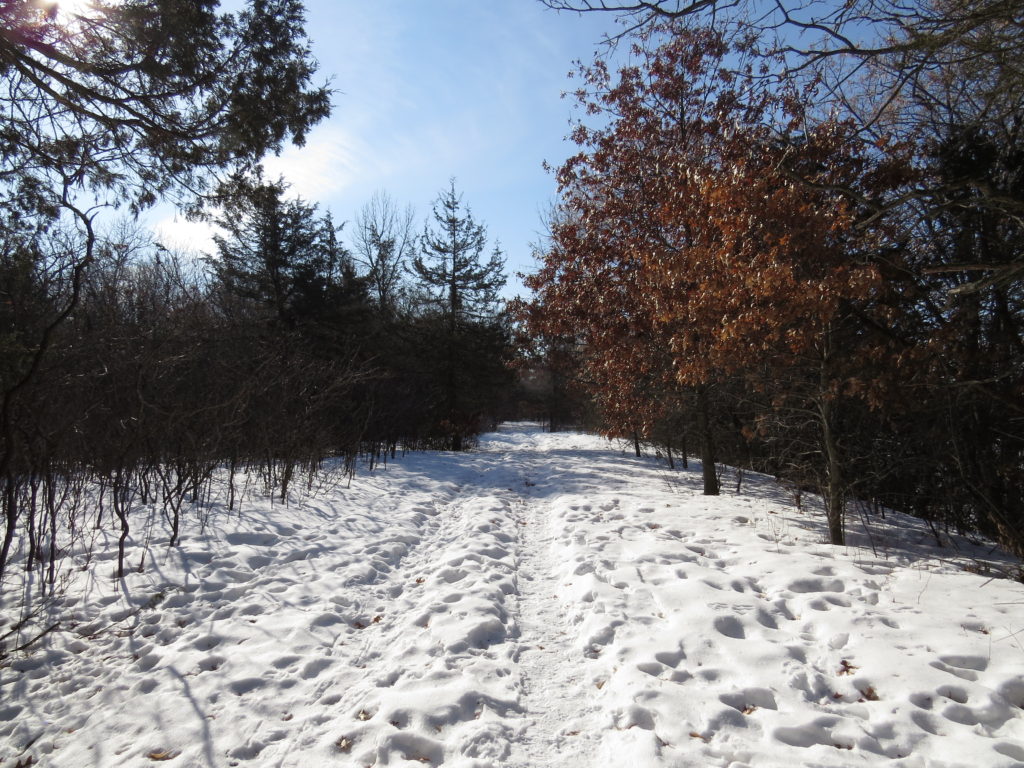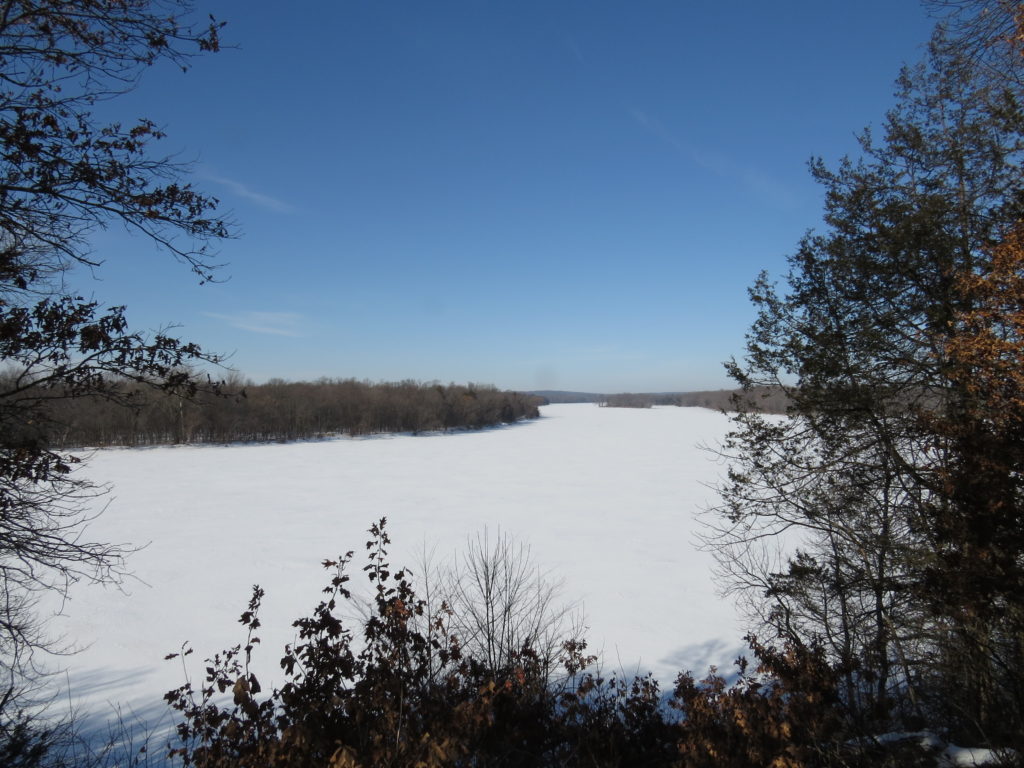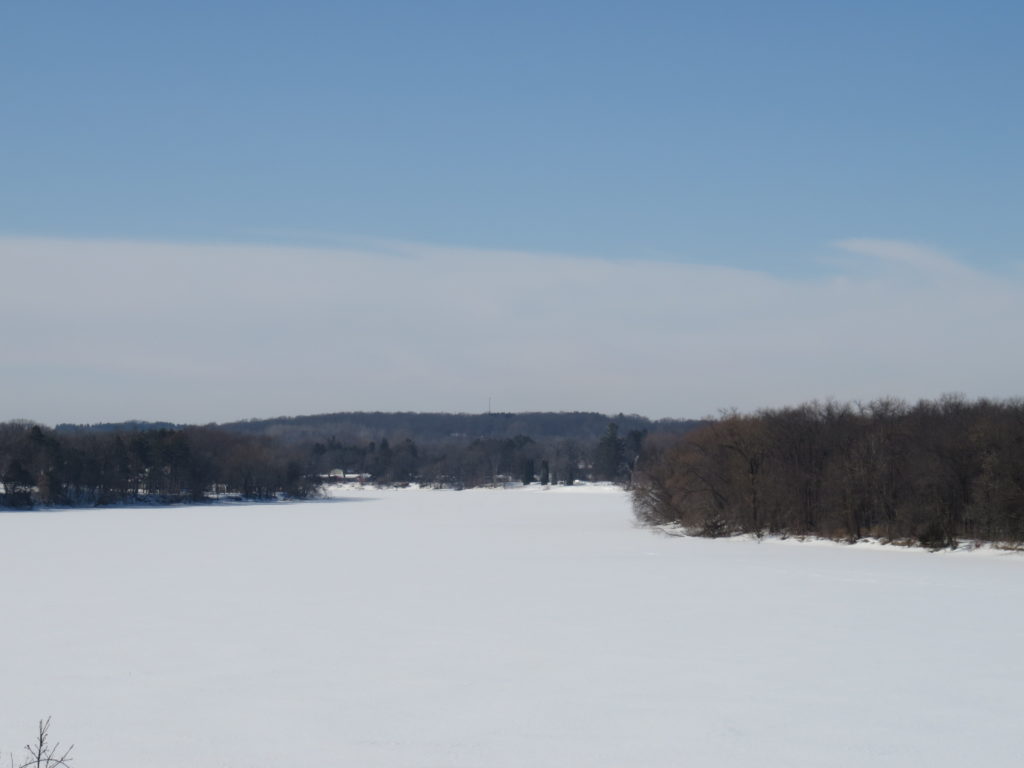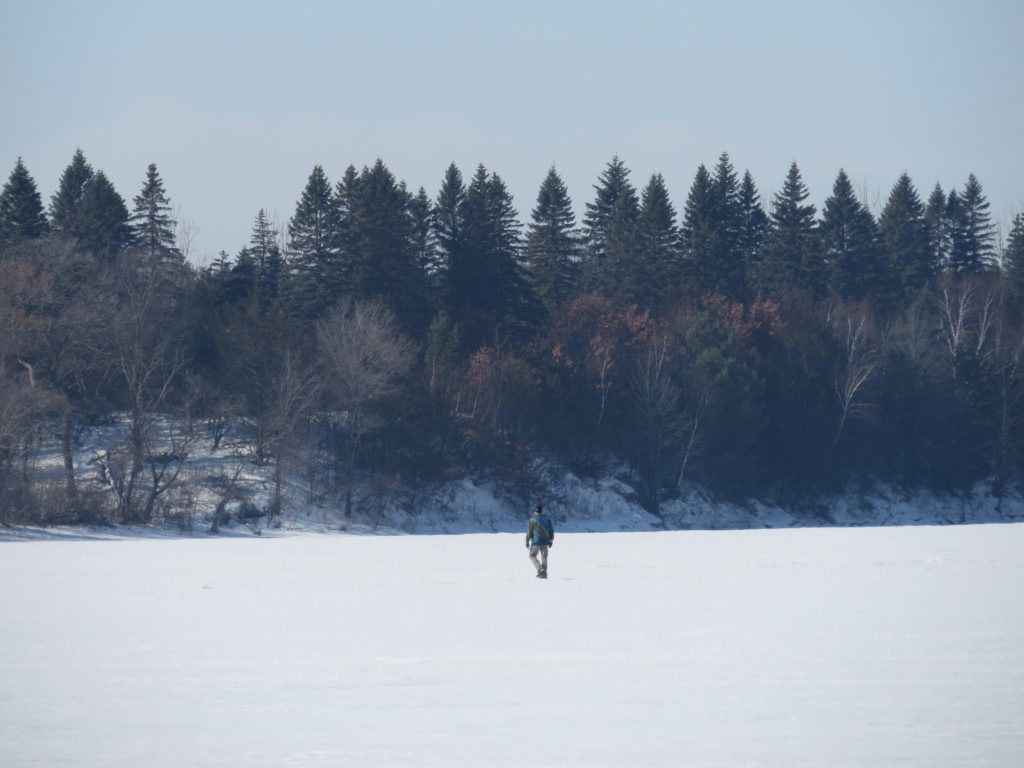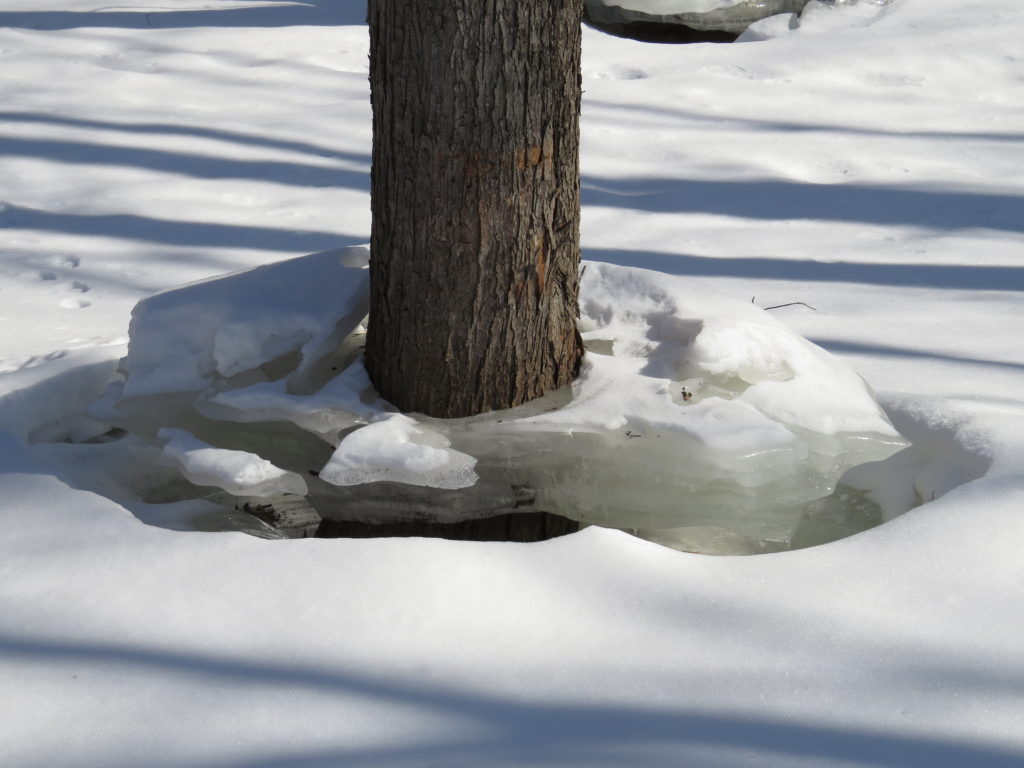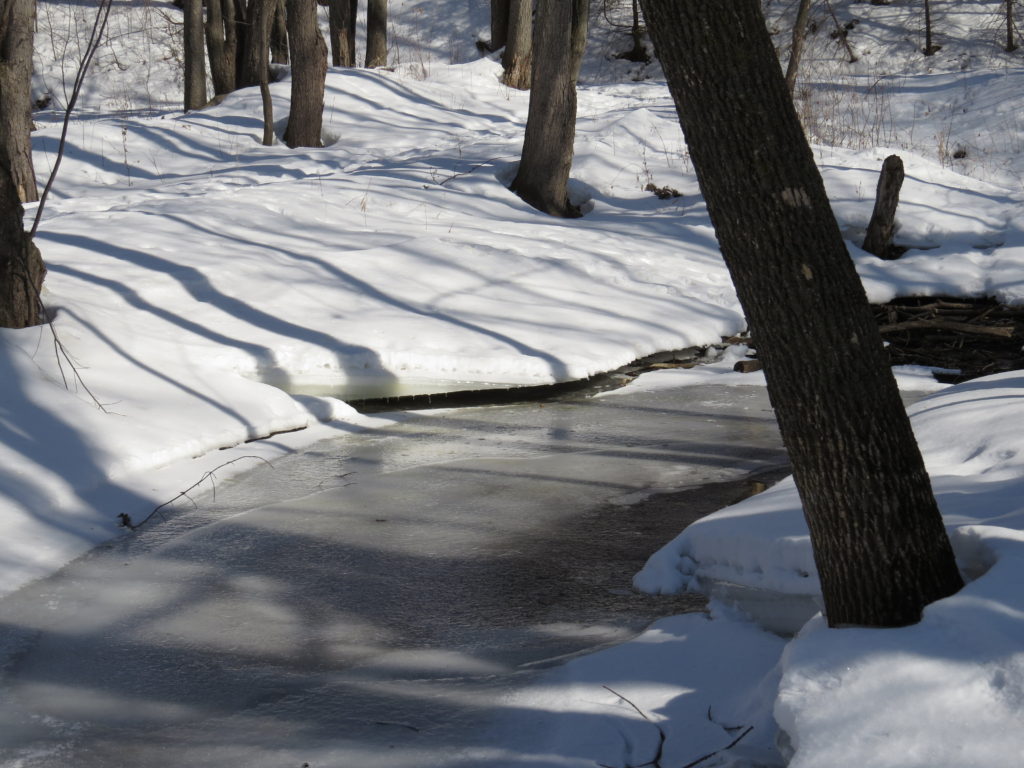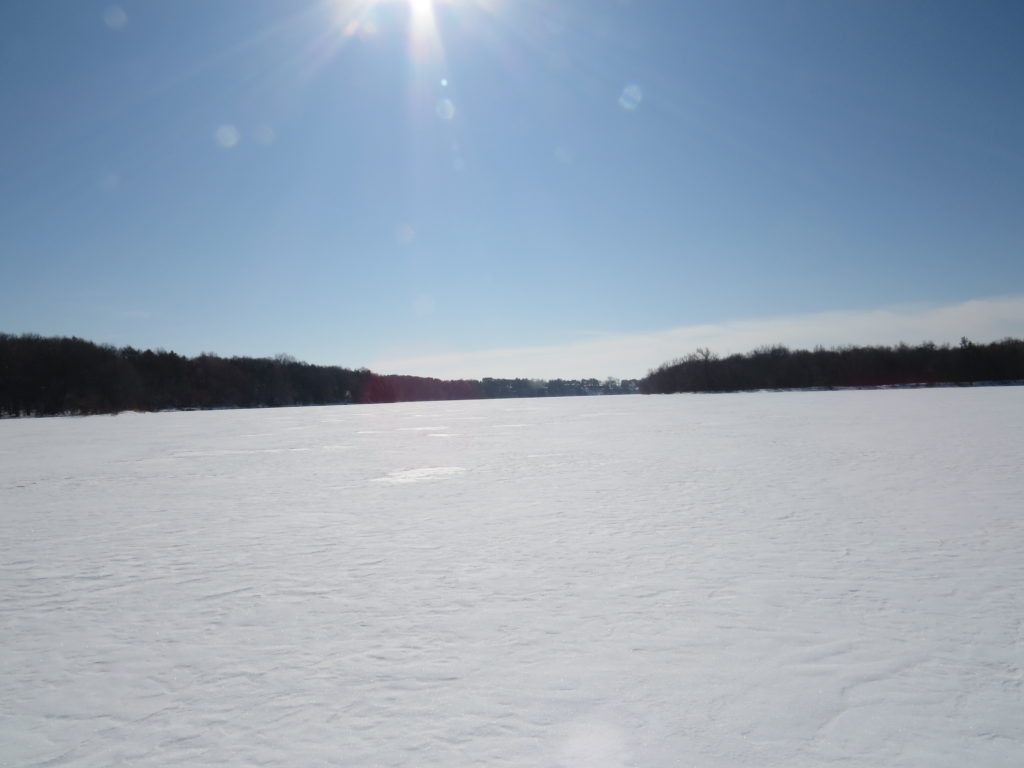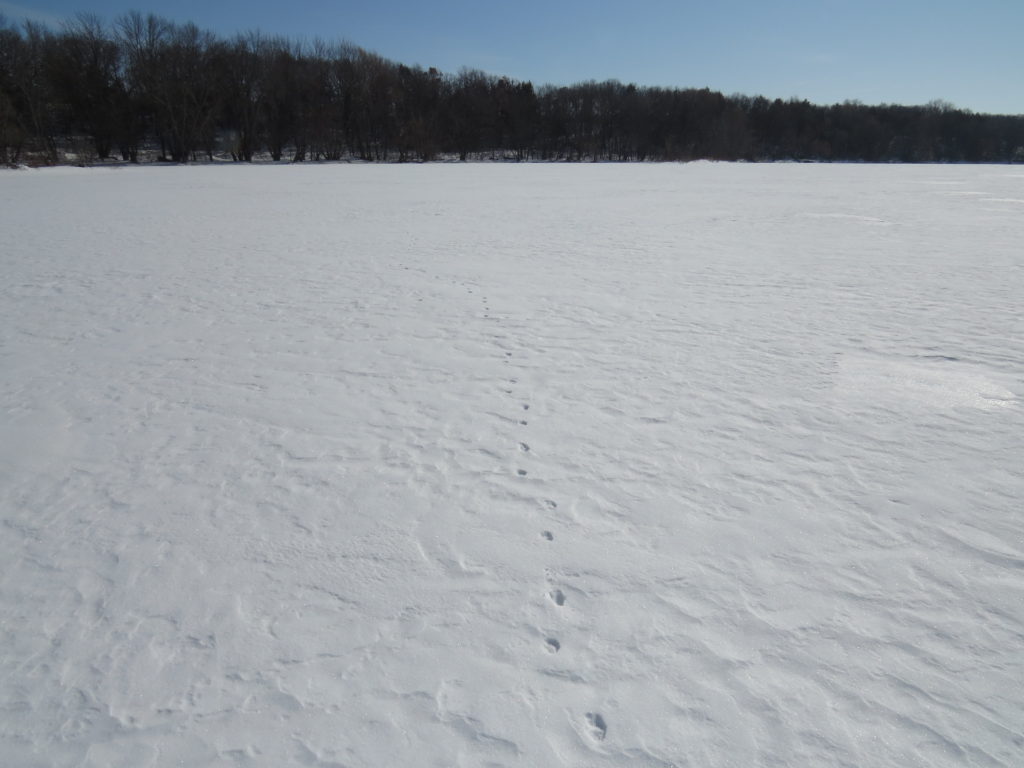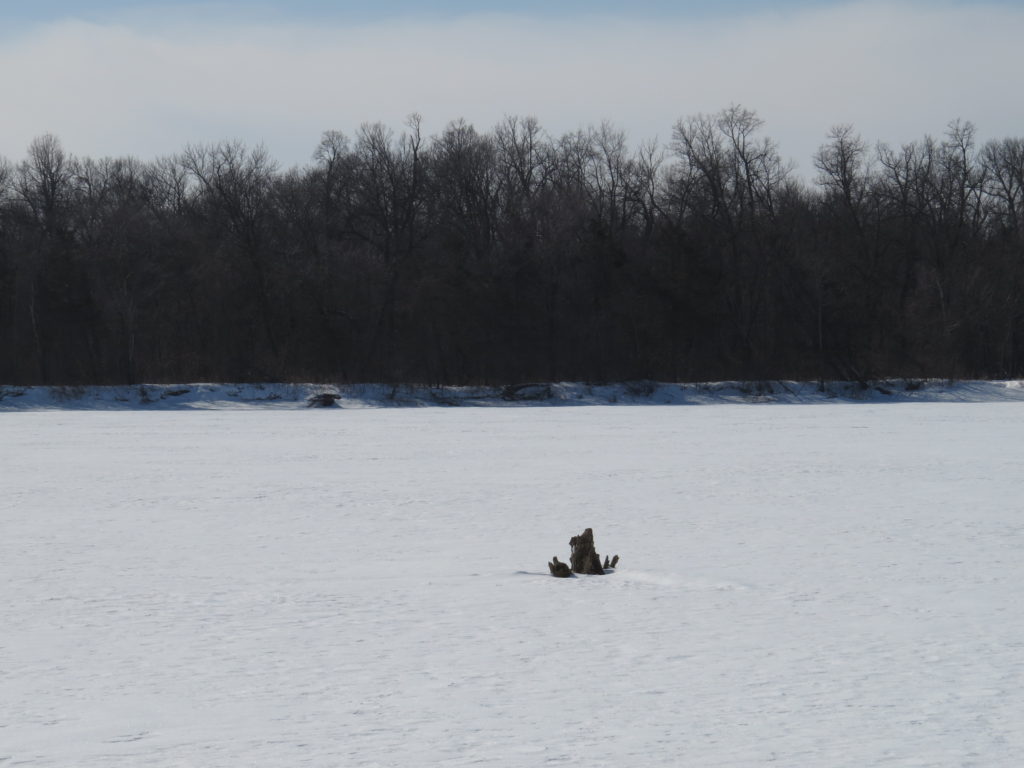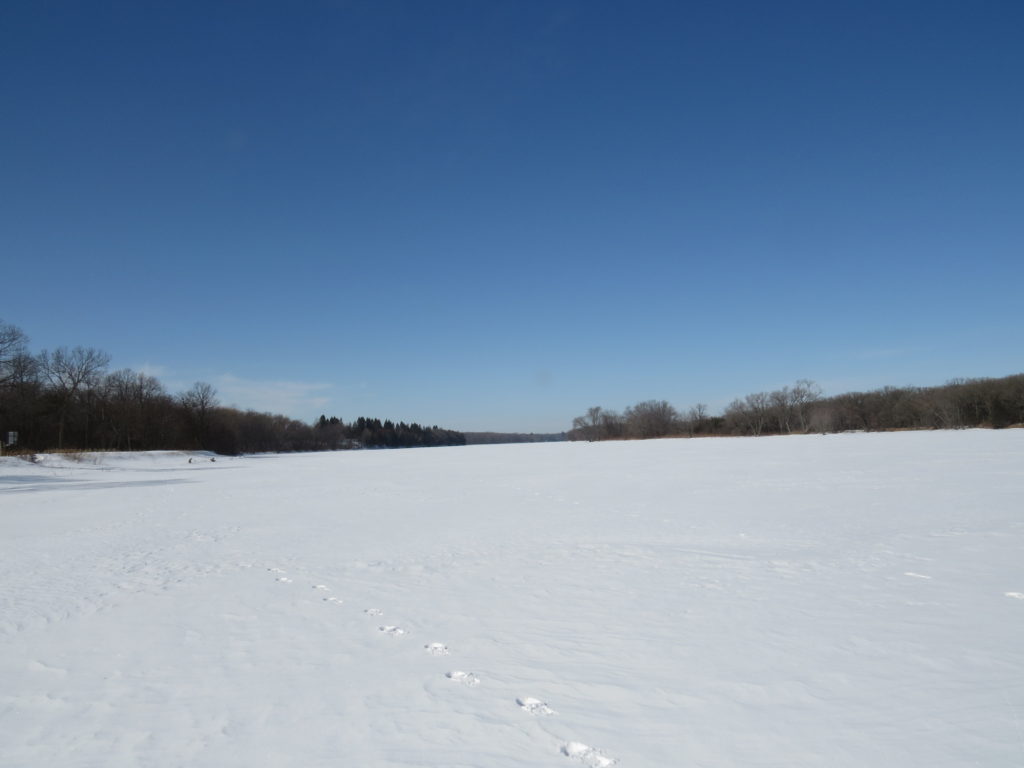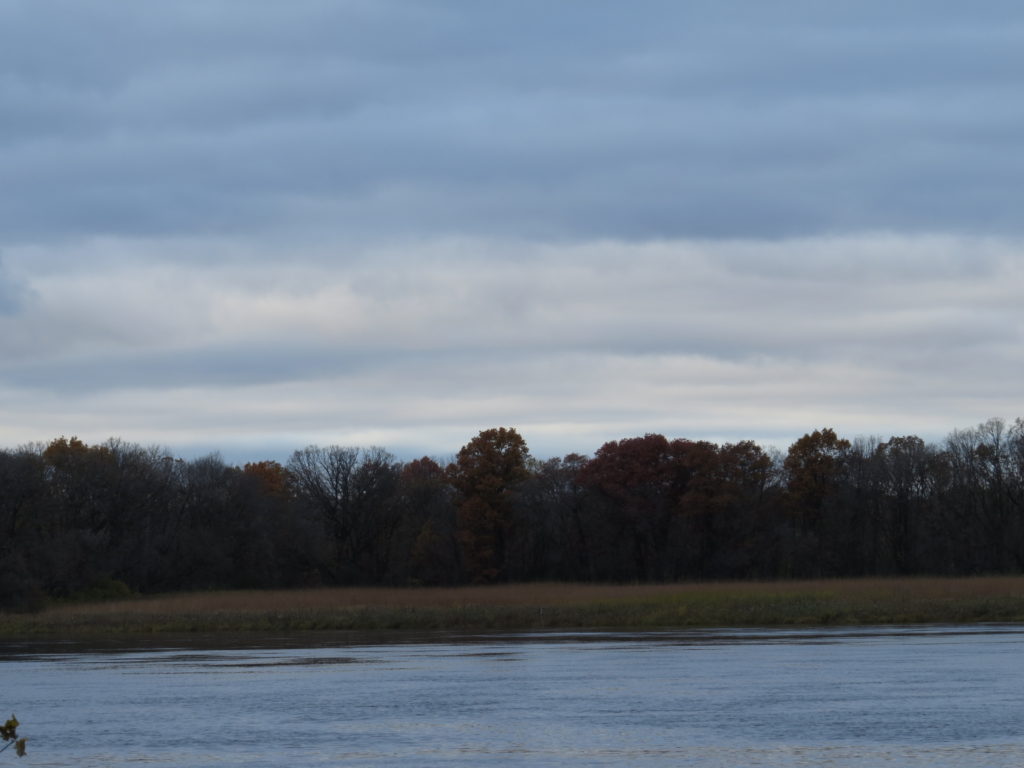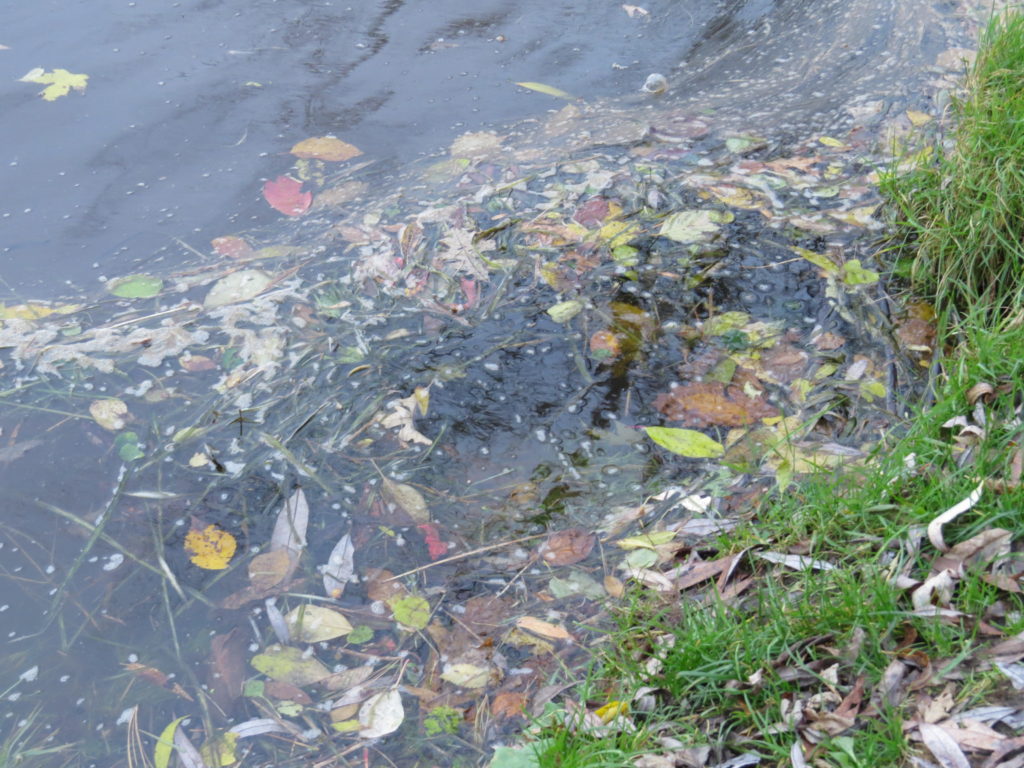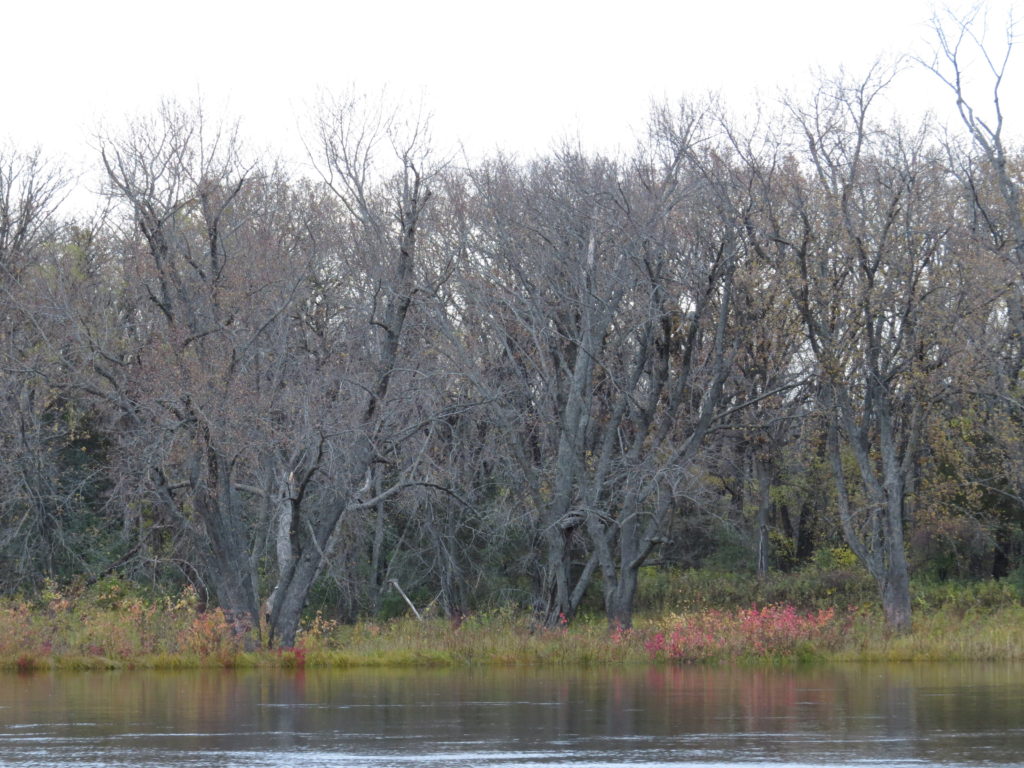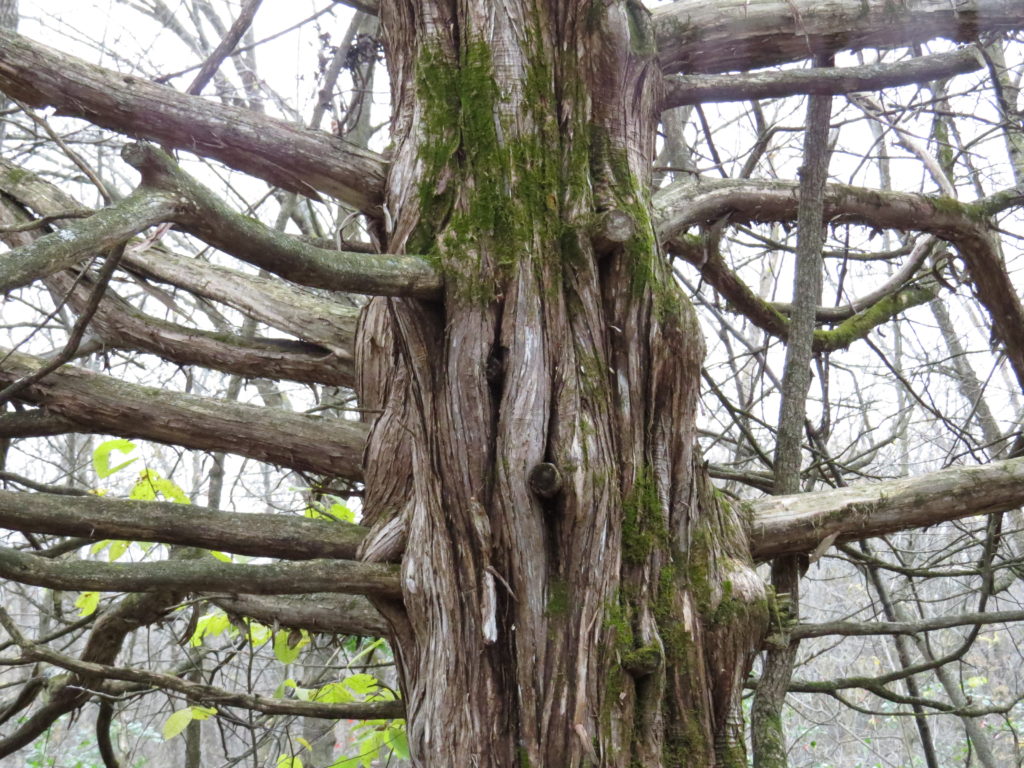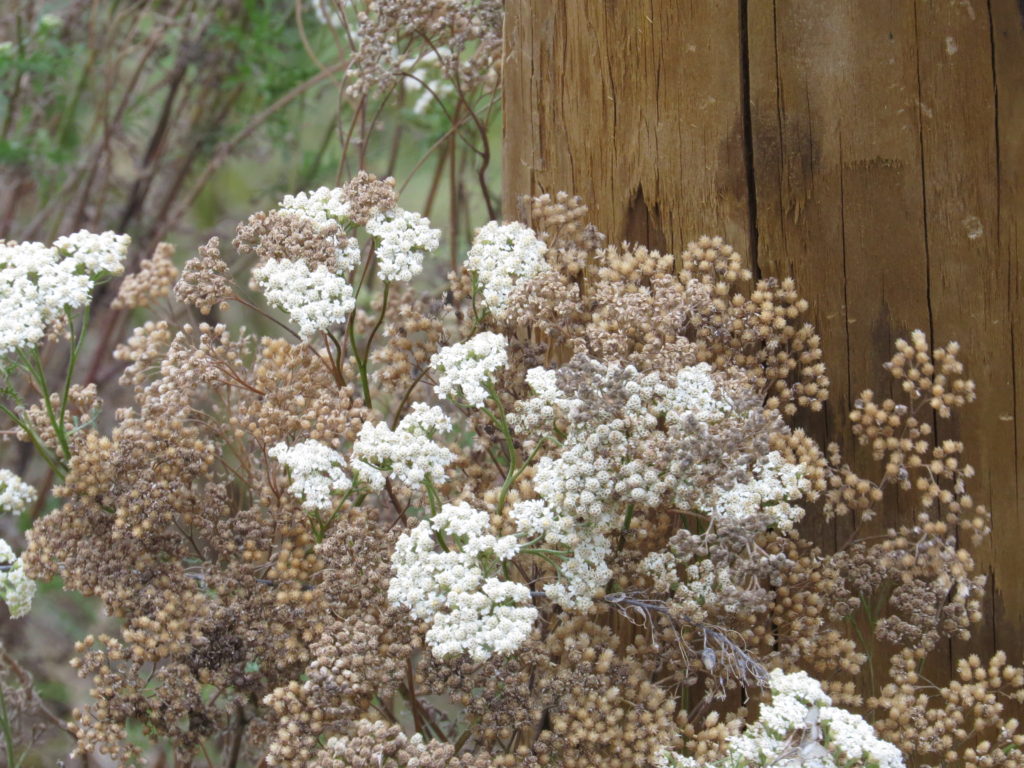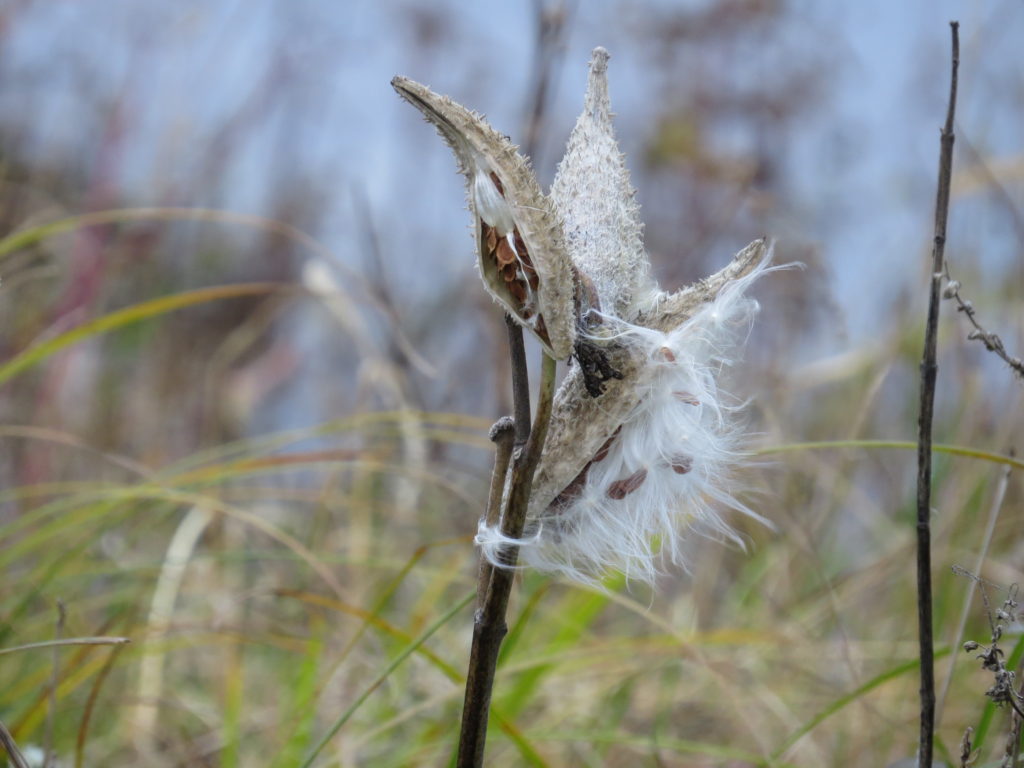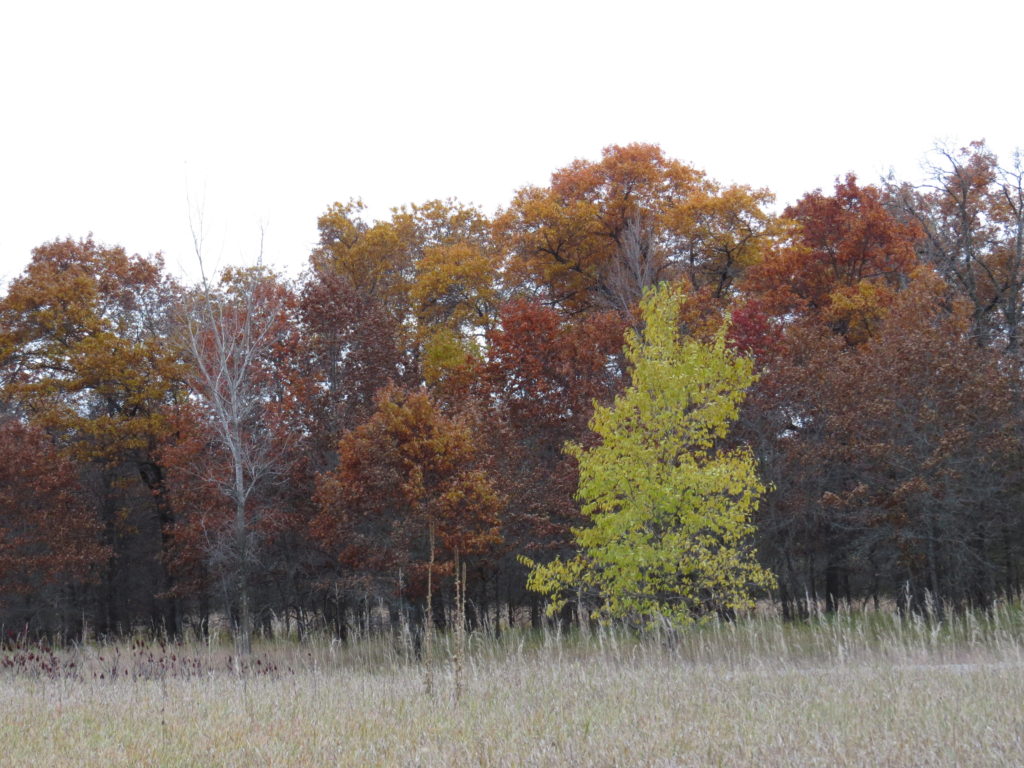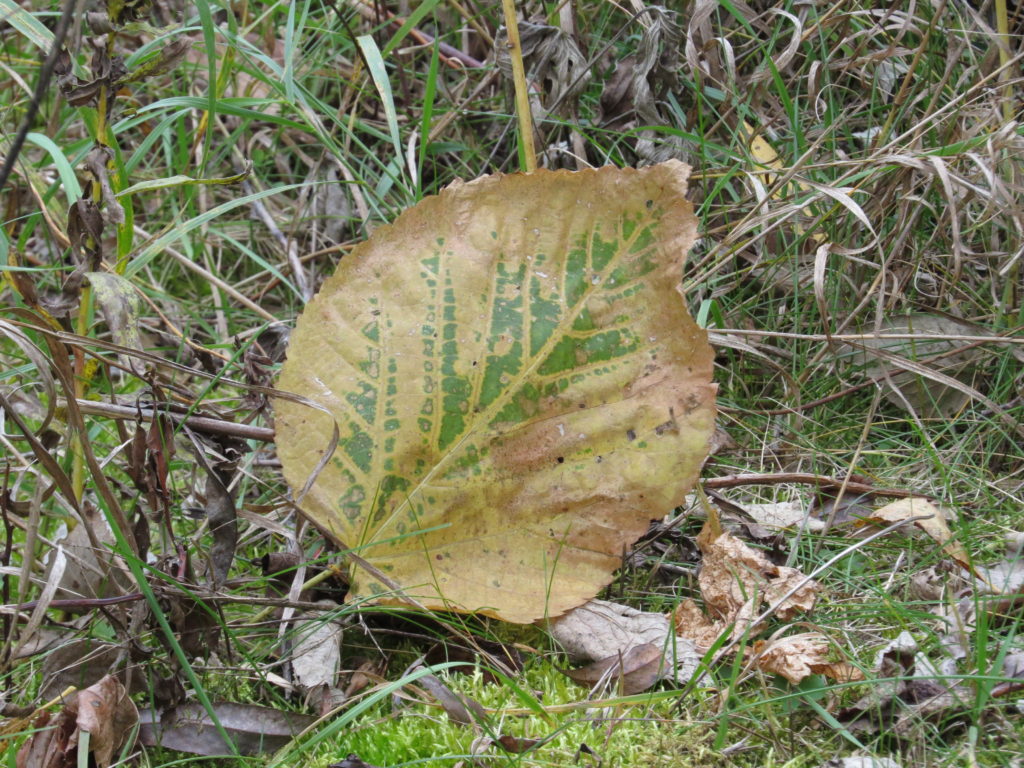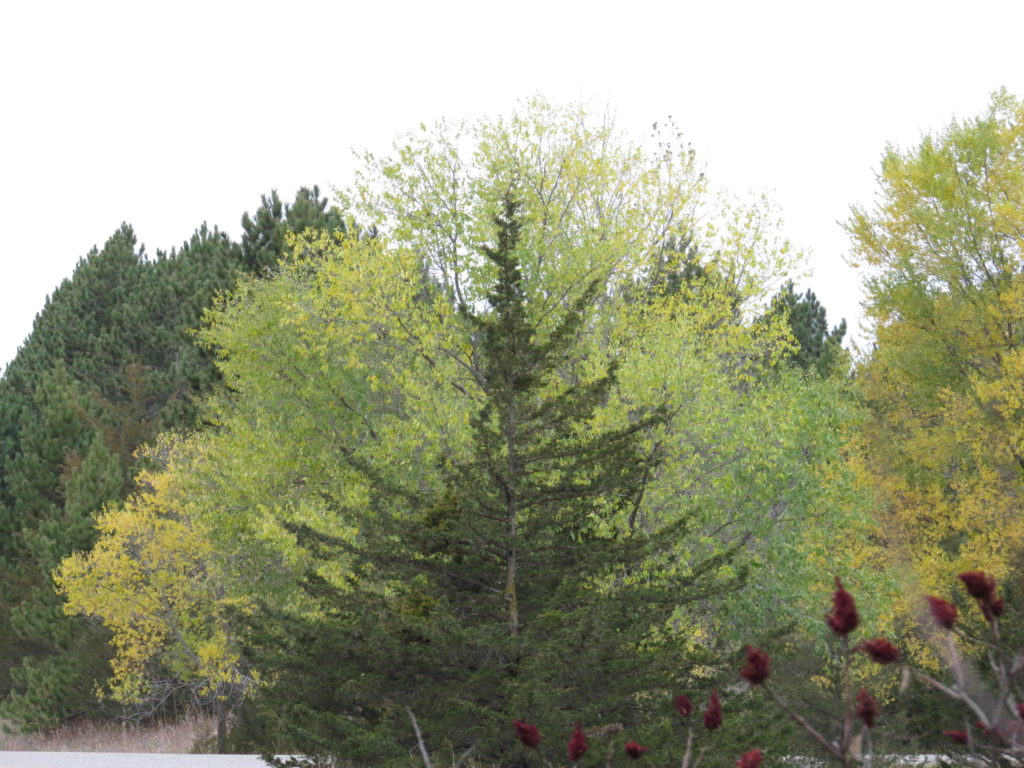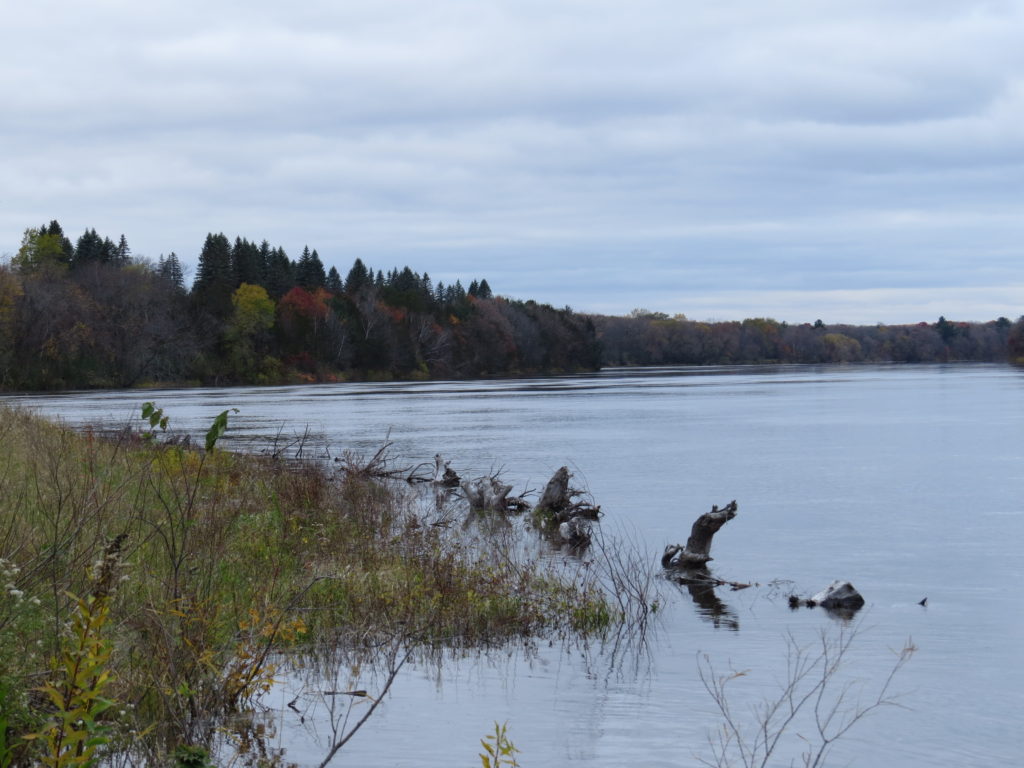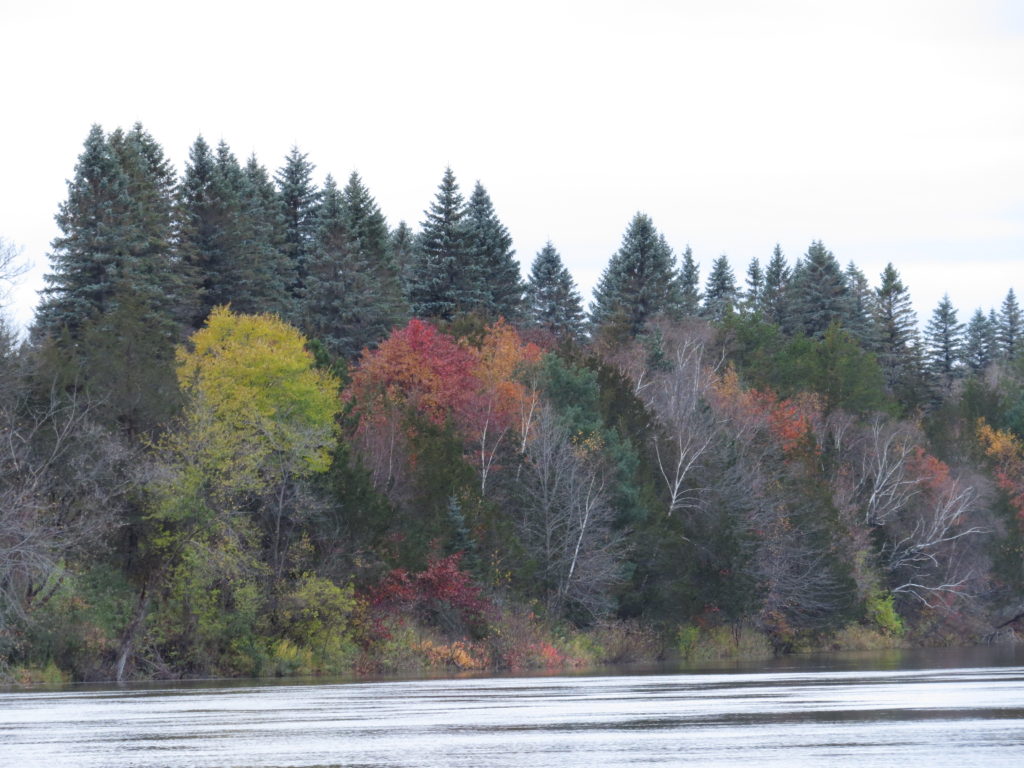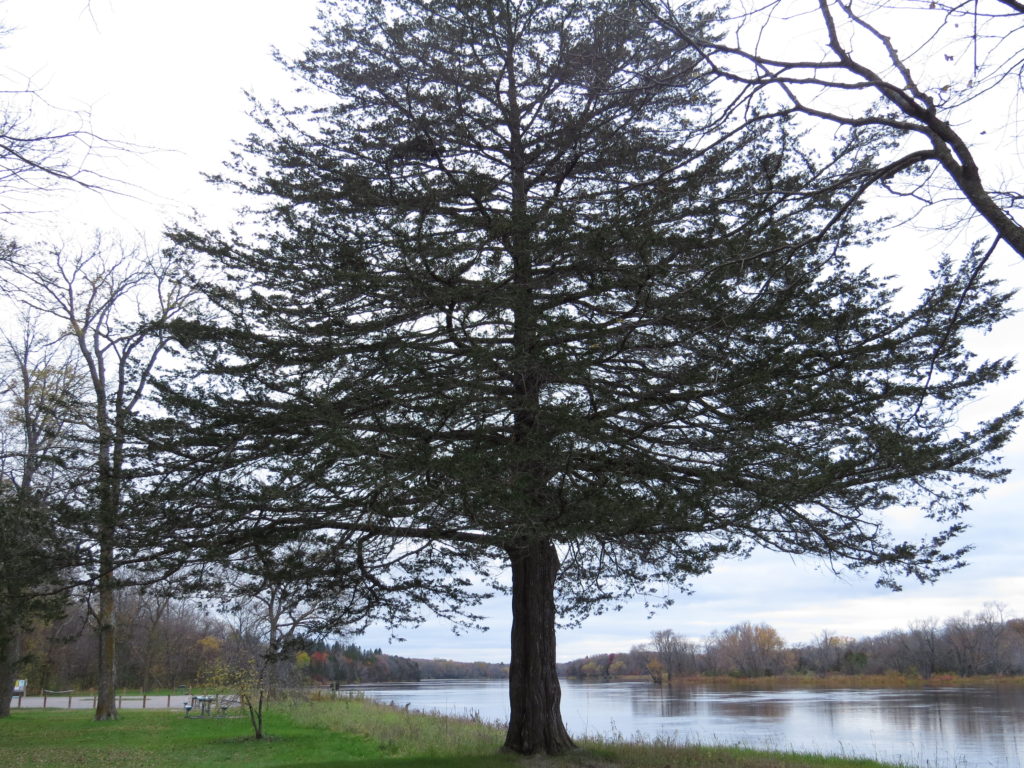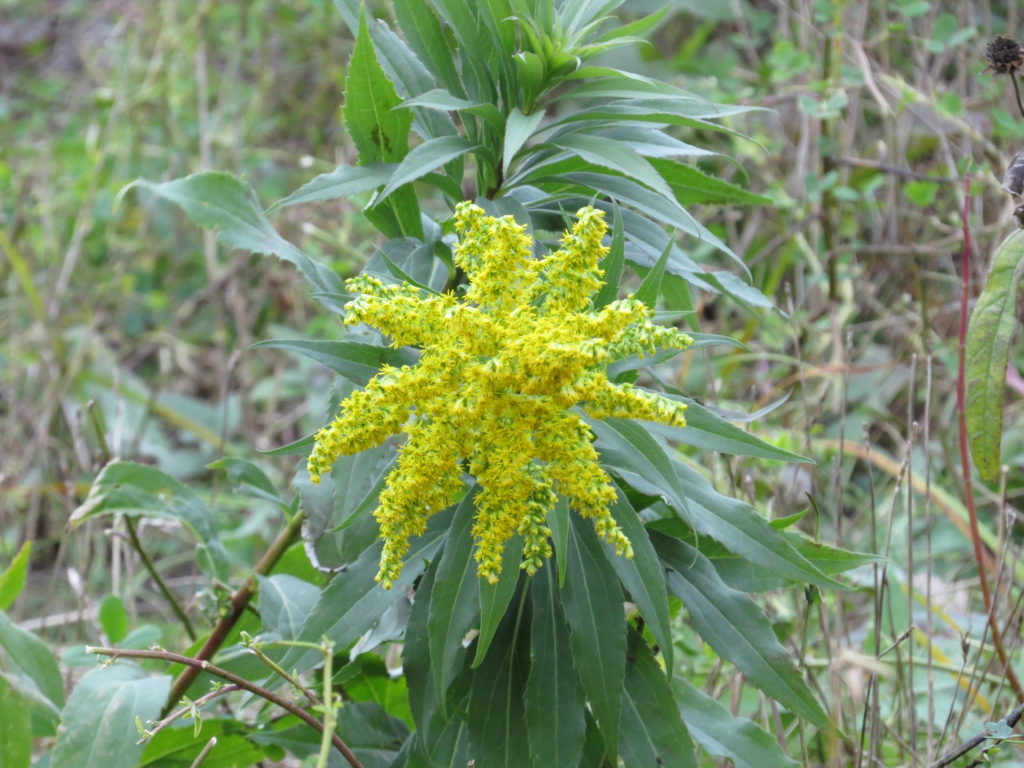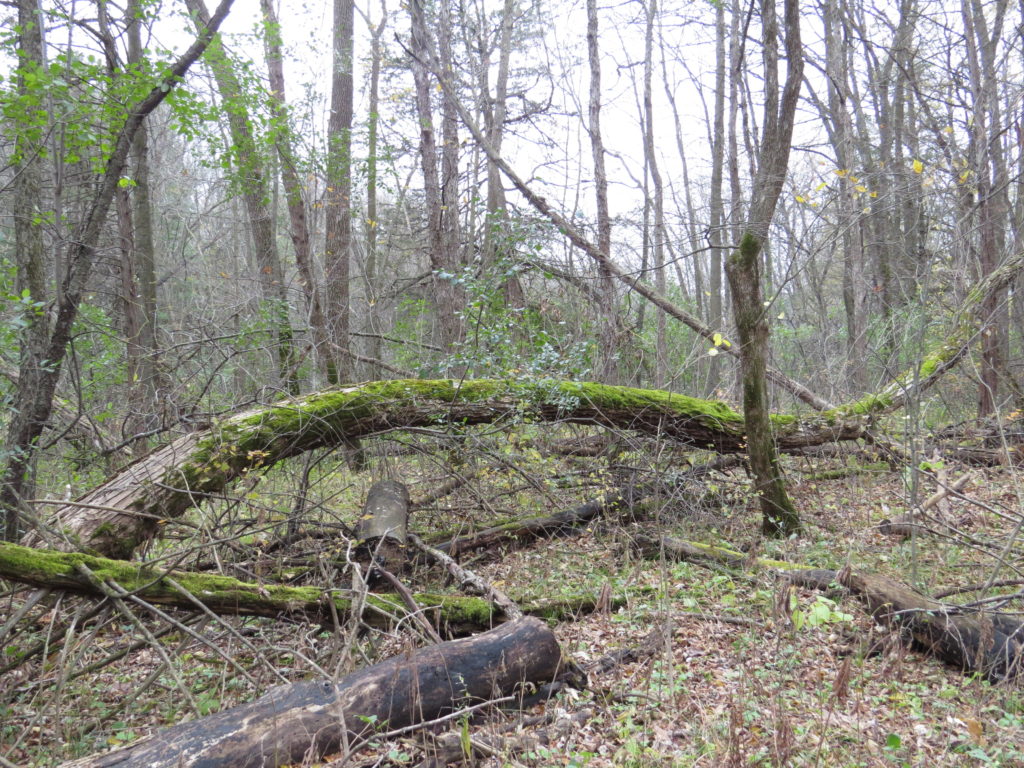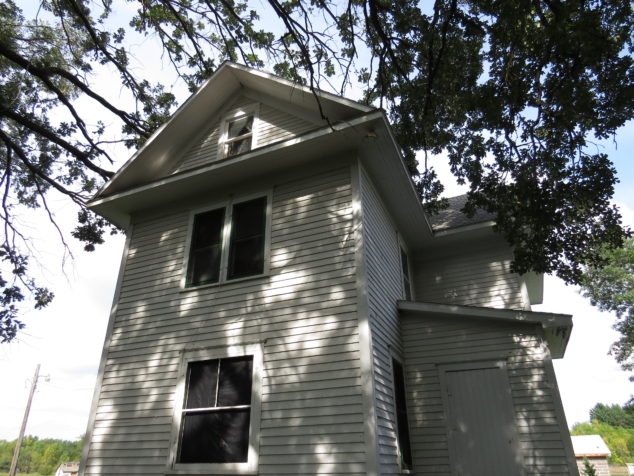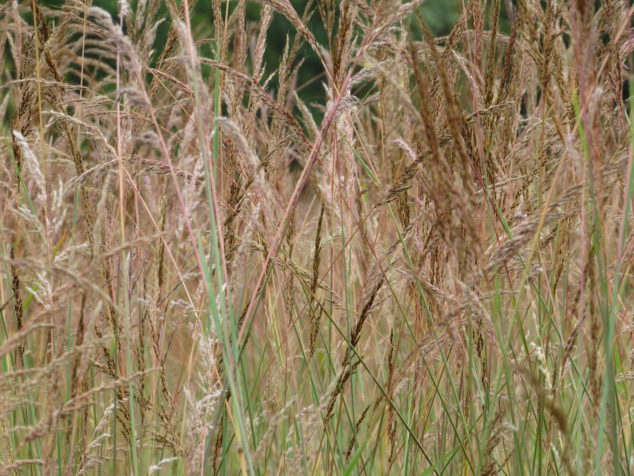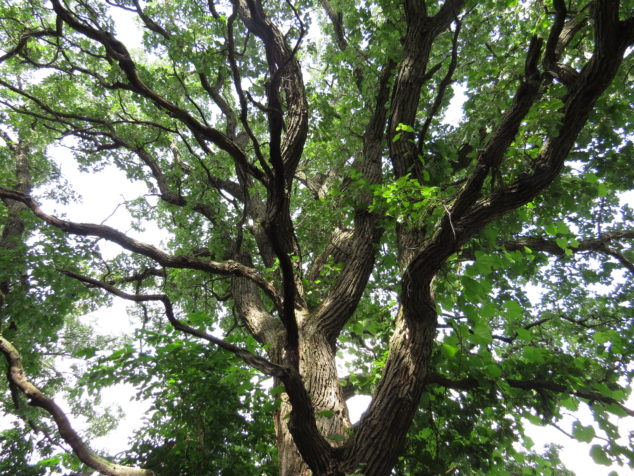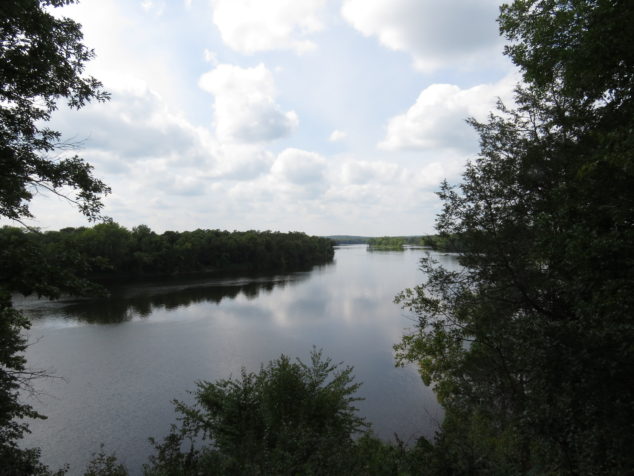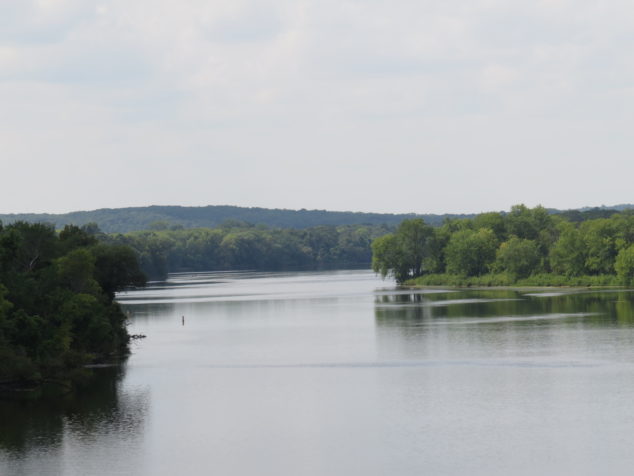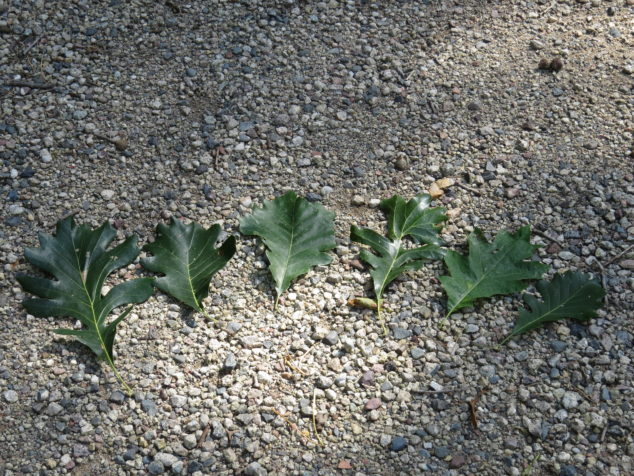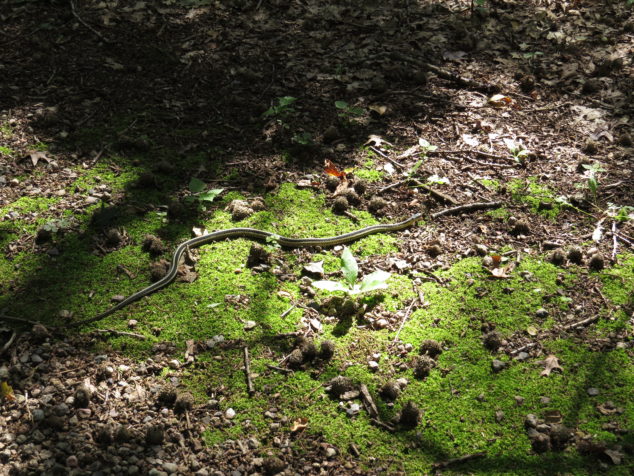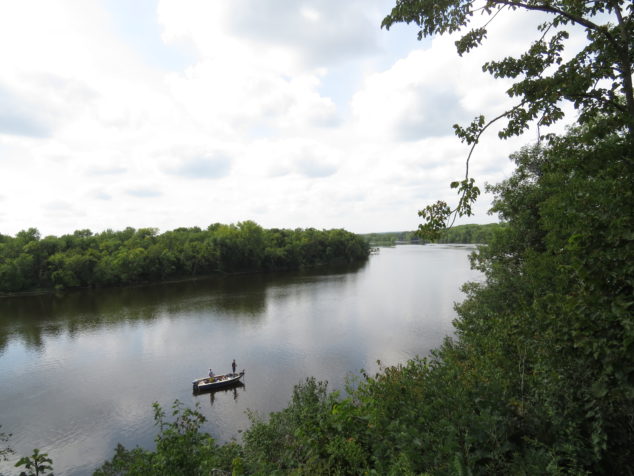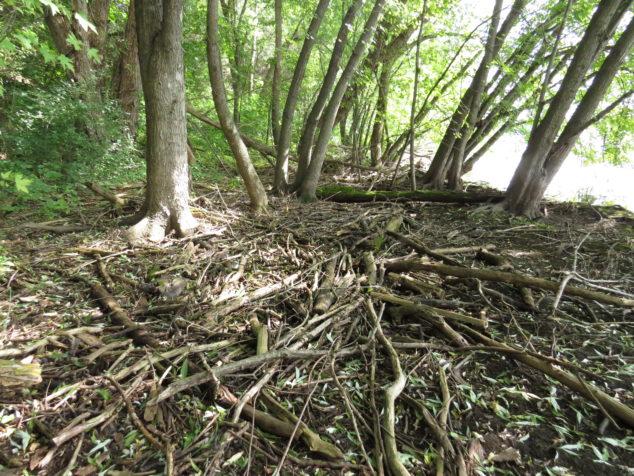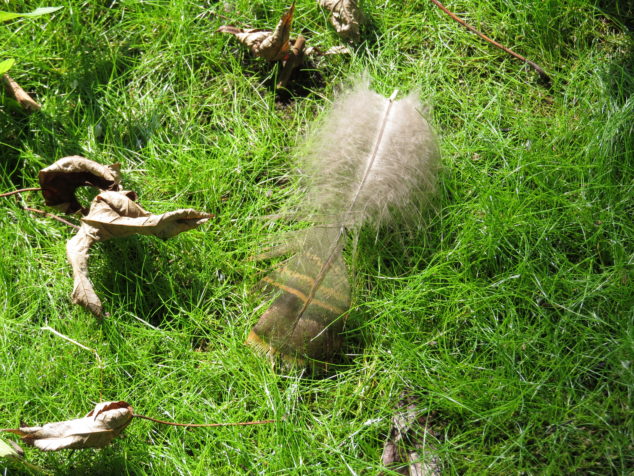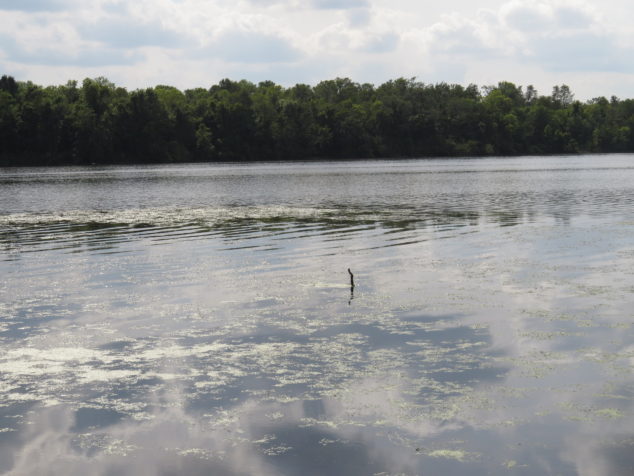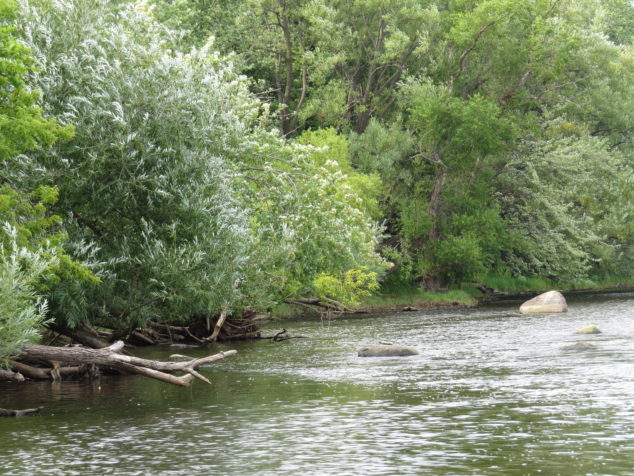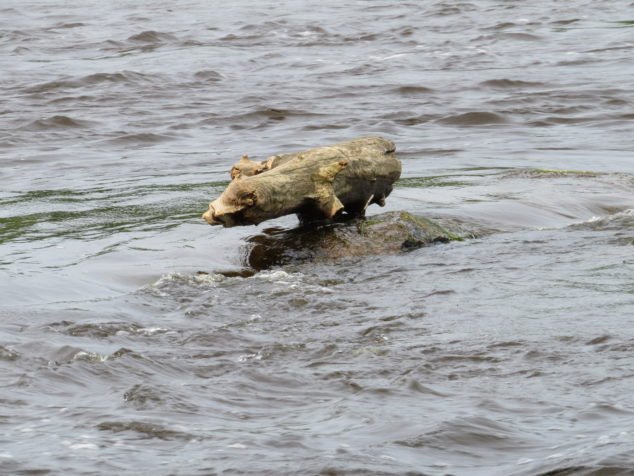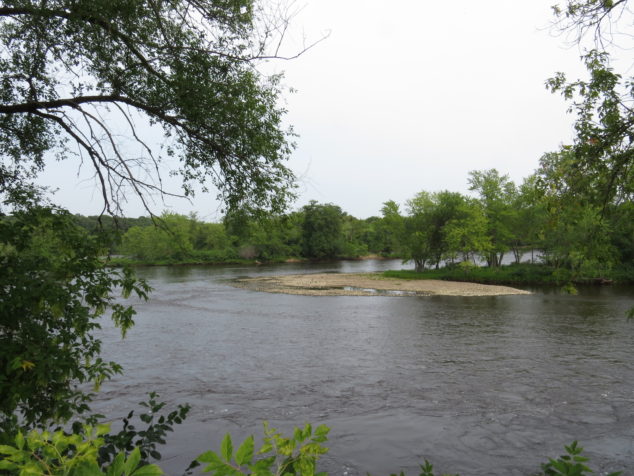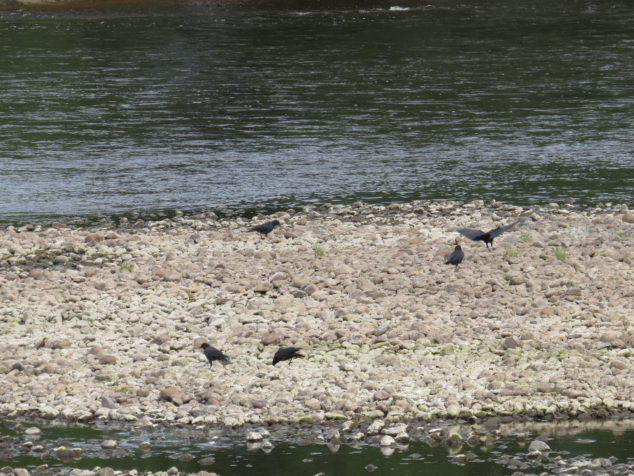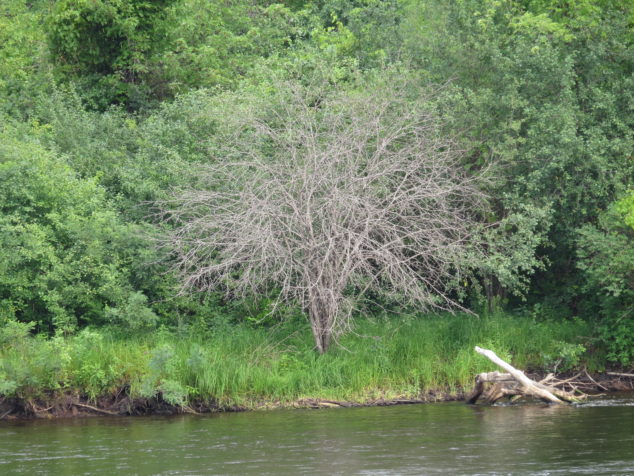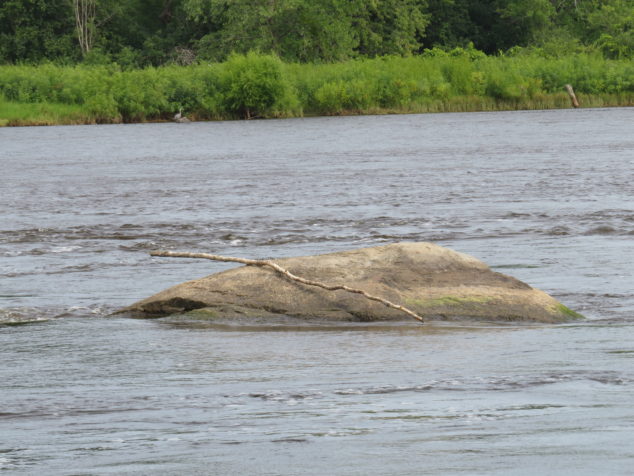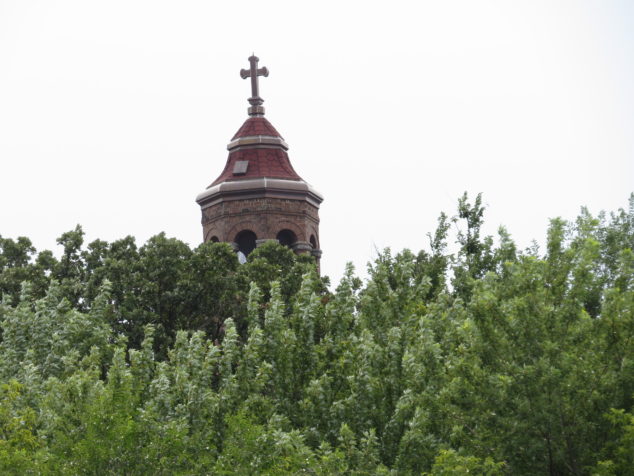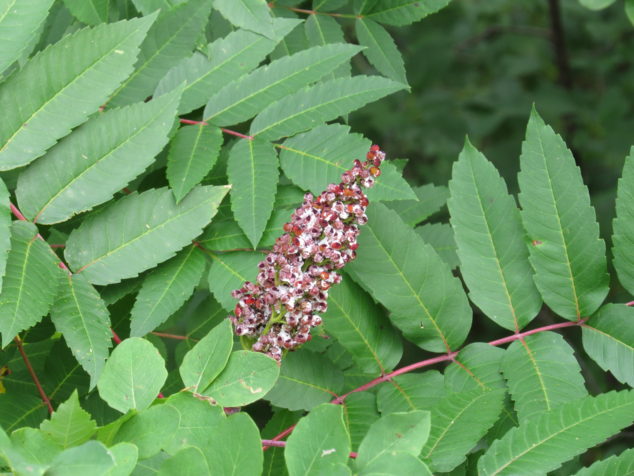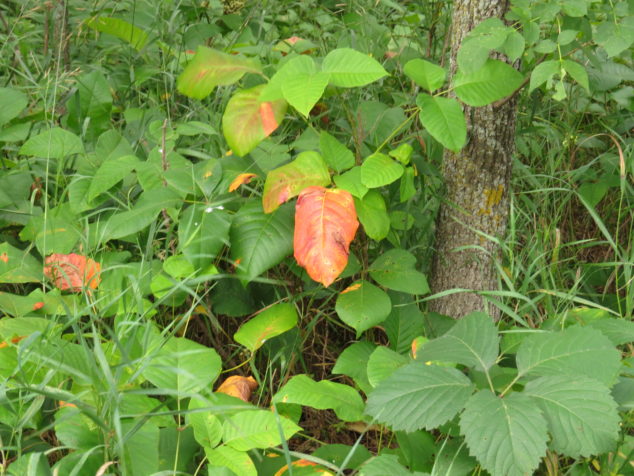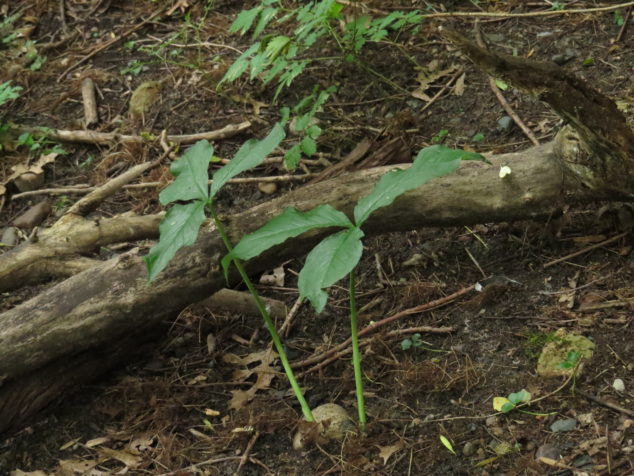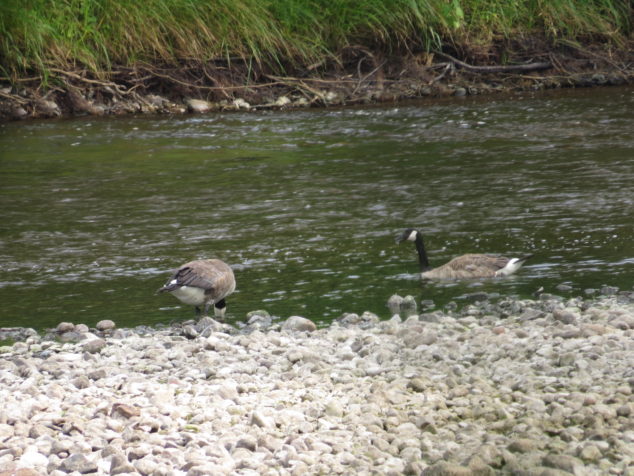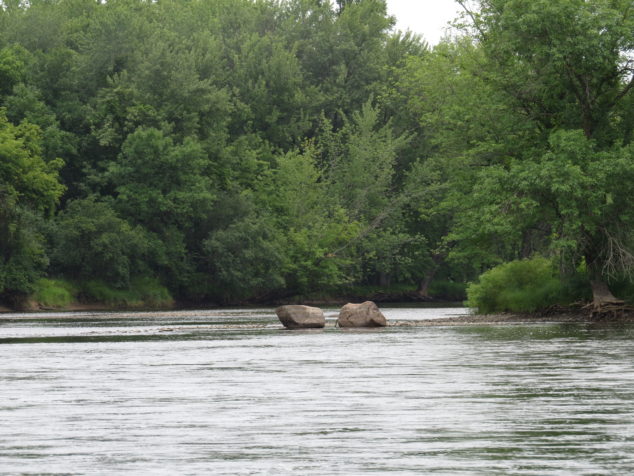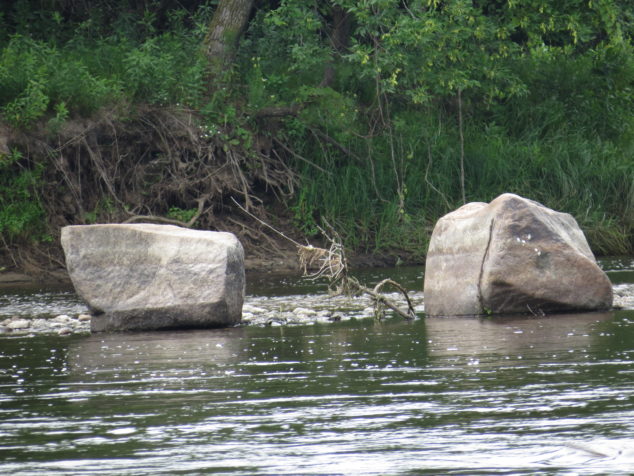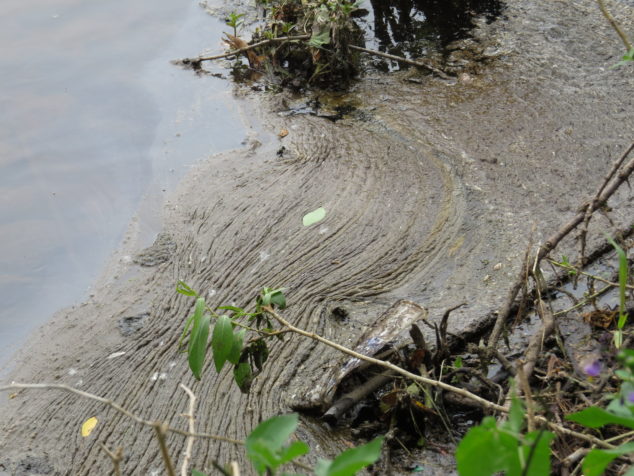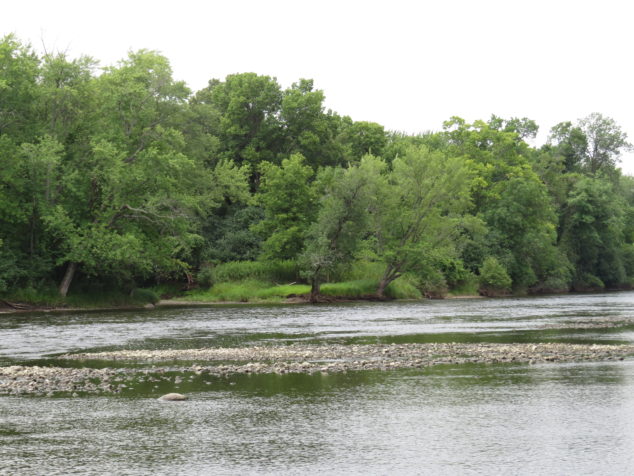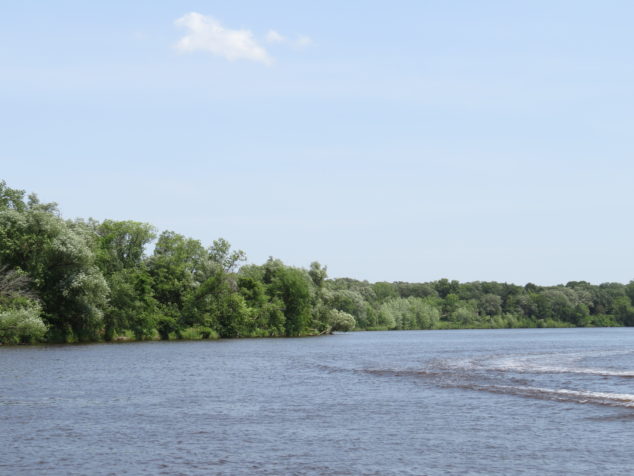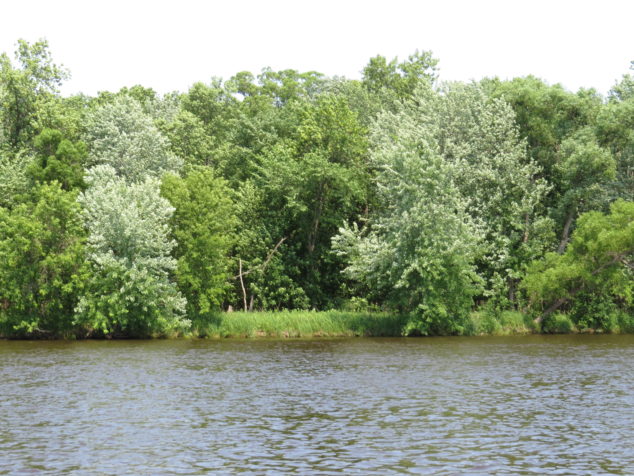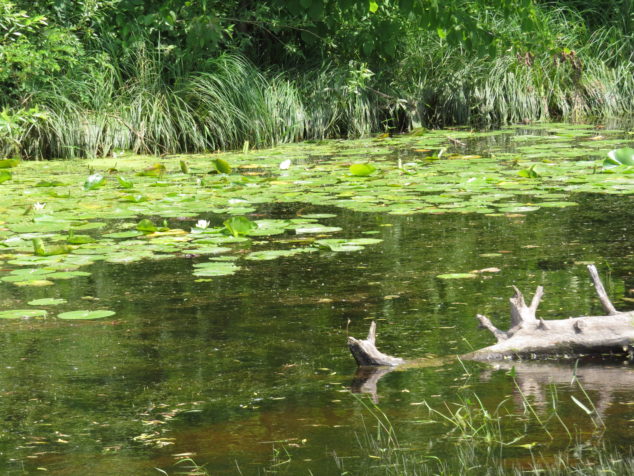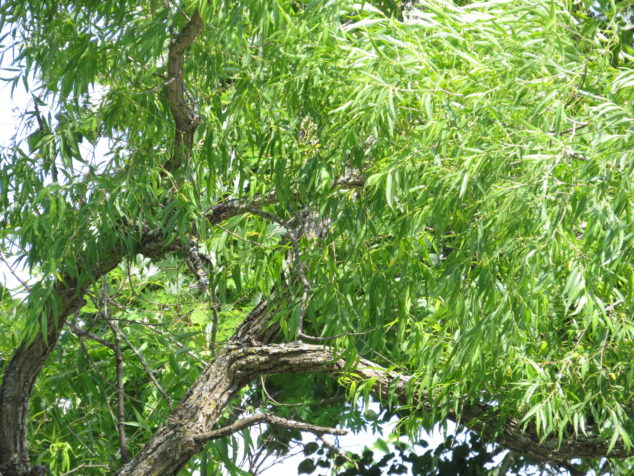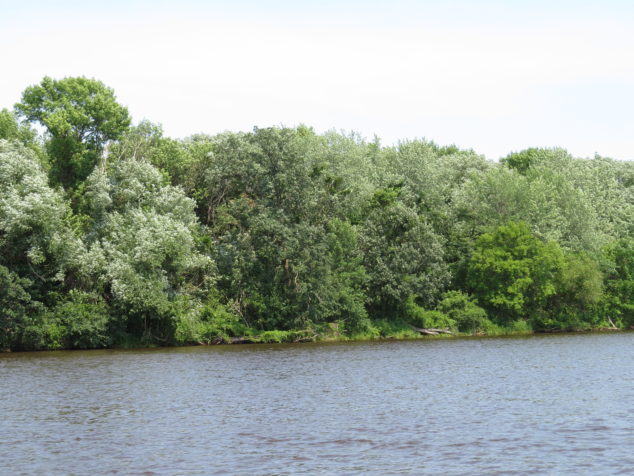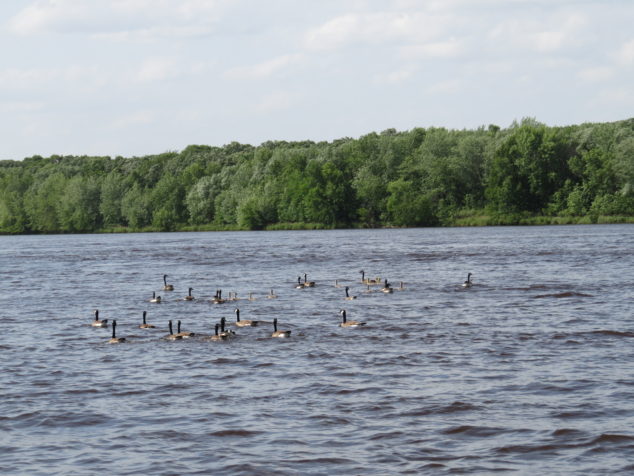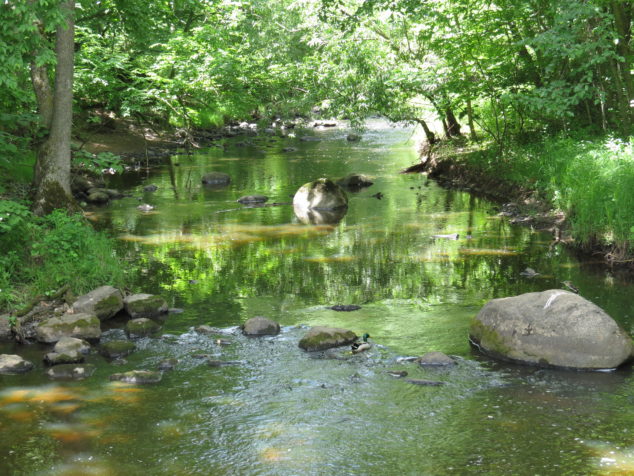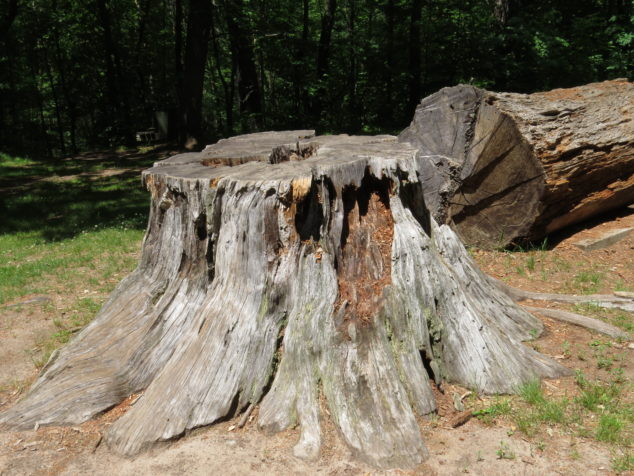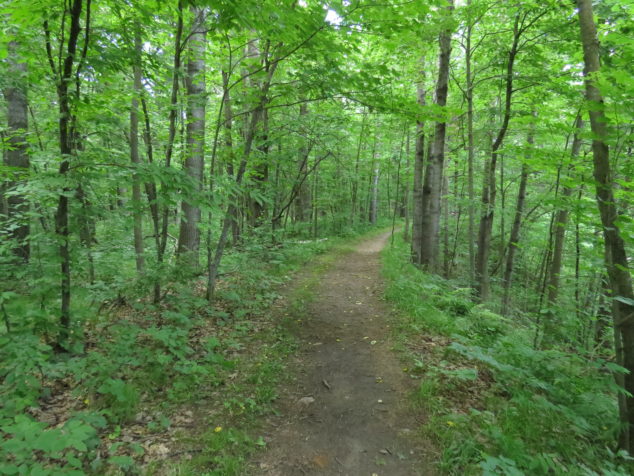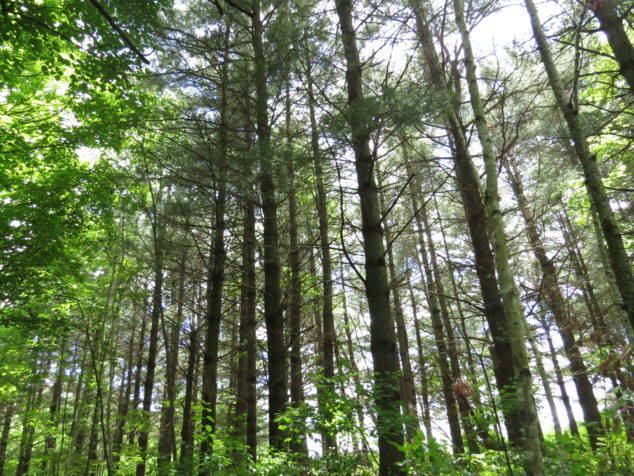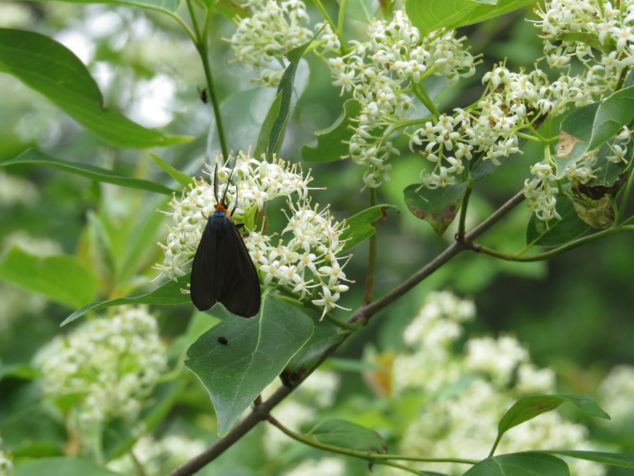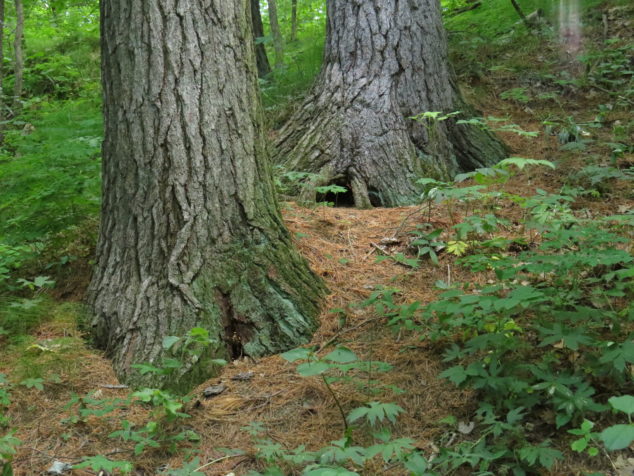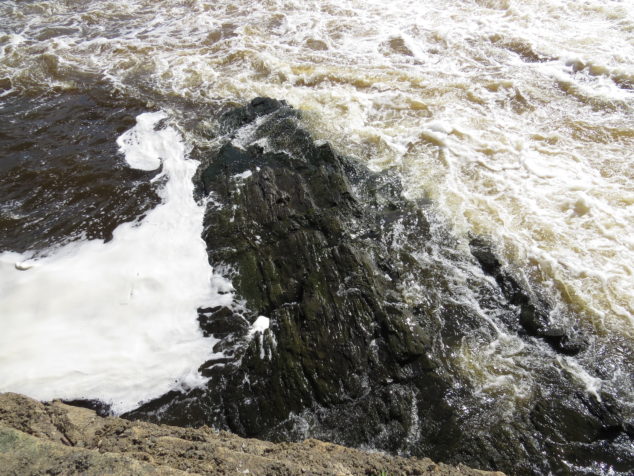It’s a topsy-turvy world right now—too much confusion and disorder—not only around the corona virus pandemic, which is overwhelming, to be sure, but in so many other ways. Some safely-isolated people wonder what all the fuss is about, while those on the ‘front lines,’ amid the illness and death, wonder how some people can be so cavalier. Certain states and populations are suffering with great numbers of death and job losses, while others are living their lives without much disruption at all. The political fighting is like a bad divorce—both sides think they’re right and blame the other for all the things gone wrong. Nobody wins.
In the midst of the chaos, as states were beginning to find their way to ‘opening,’ we quietly kept a heart-promise made when Chris’ brother died late last summer. We followed the Great River that flows near our house down to Cassville, Wisconsin, the tiny river town where Chris’ folks grew up and where the boys spent their summer vacations. A homecoming of sorts. We spent part of the day high above the Mississippi River at Nelson Dewey State Park. The park’s 756 acres were once part of Nelson Dewey’s large 2,000 acre agricultural estate. As a young man (age 35), he was elected as Wisconsin’s first governor when the state formed in 1848. But long before him, it was home to Native Americans. Two village sites and three groups of burial mounds have been found in the park. Holy ground.
Looking out over the Mississippi from the bluffs, I remarked it was like a river of trees. Long sandbar islands of trees with their newly sprouted leaves made for a topsy-turvy river. It was difficult to tell where the main channel flowed in the maze of water and trees.
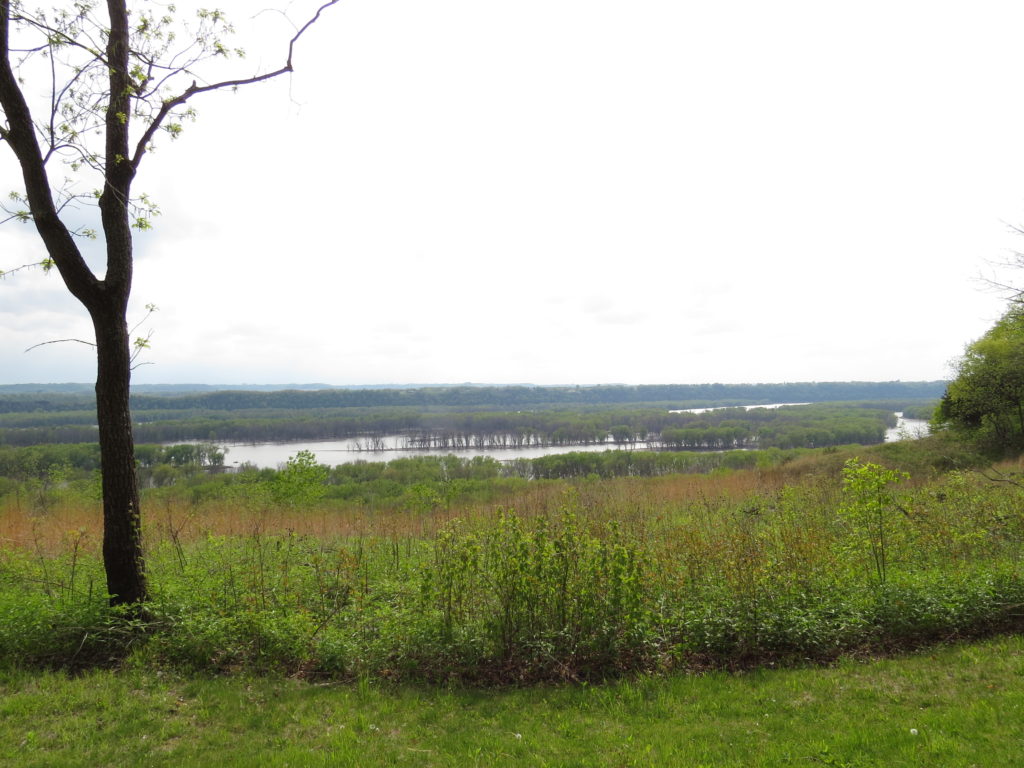
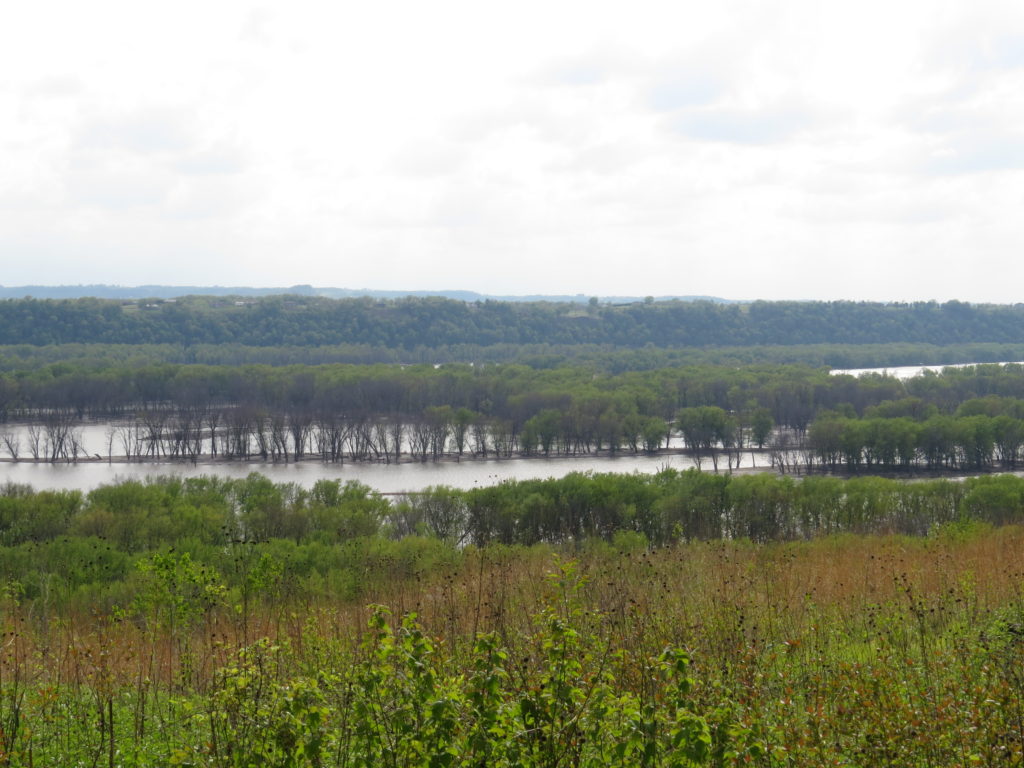
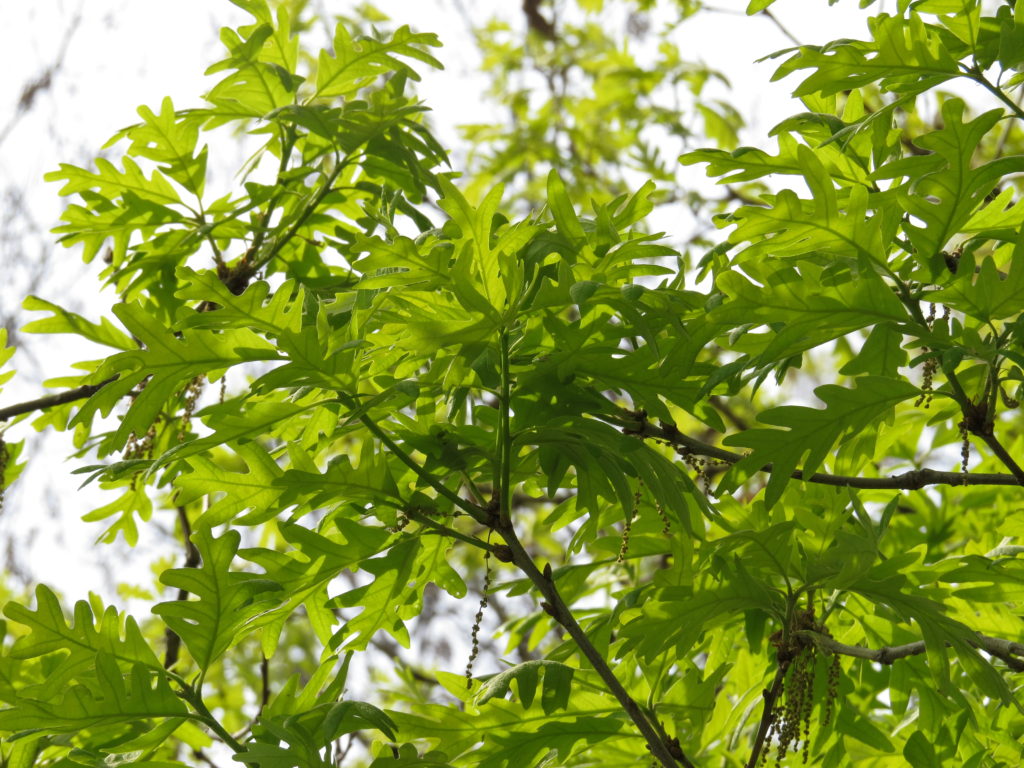
We hiked along the bluff trail among Oak and Hickory trees. Wild Geraniums bloomed with their delicate lavender flowers.
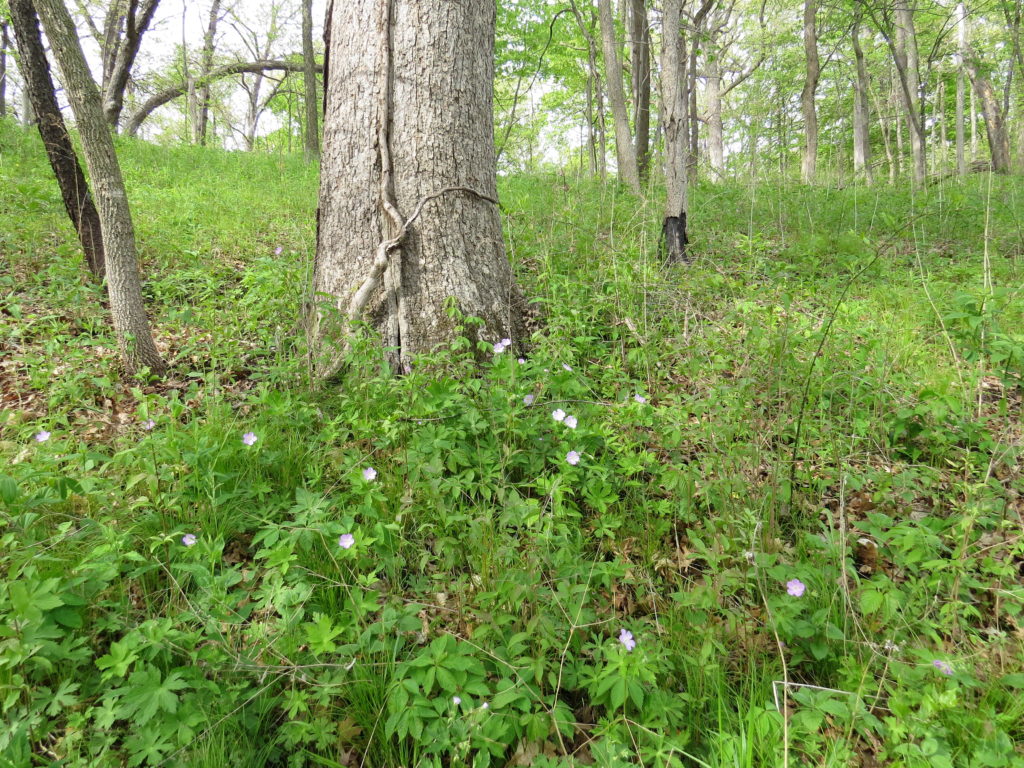
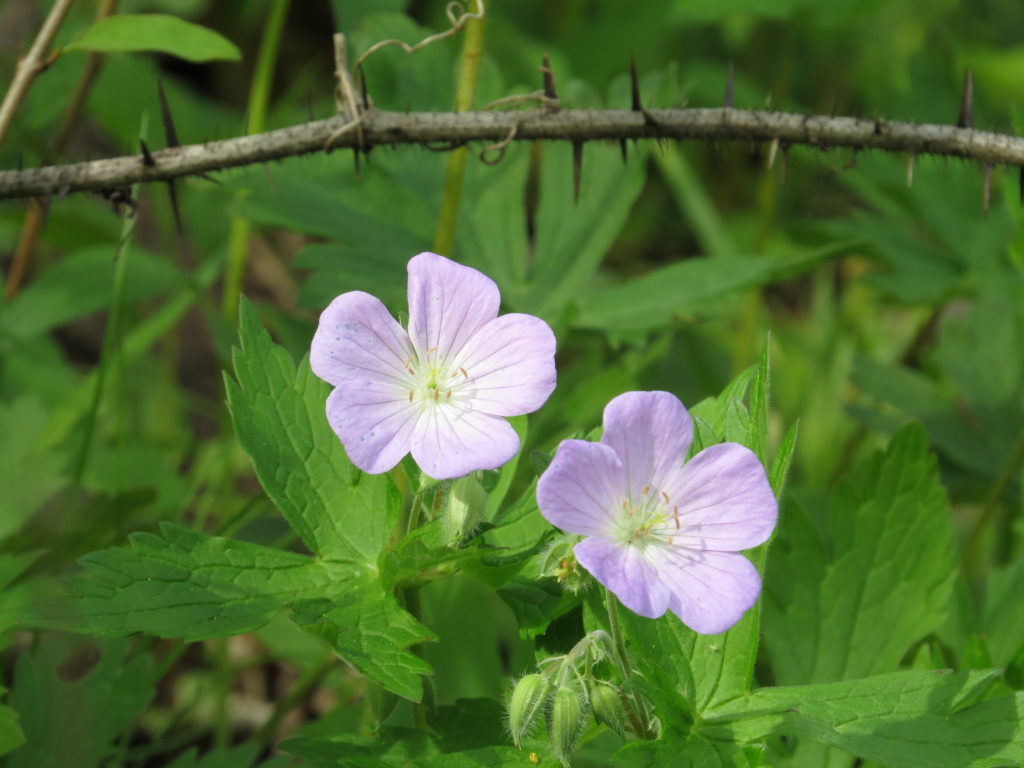
We saw a surprise that may turn your stomach upside down—a very large Black Rat Snake! Chris had been thinking about snakes since this area has Timber Rattlesnakes (one of which he has the skin of from when he was a boy), and it was a perfect day for ‘sunning’ on the southwest-facing bluff. I wasn’t even thinking about snakes and was delighted to see such a beauty!
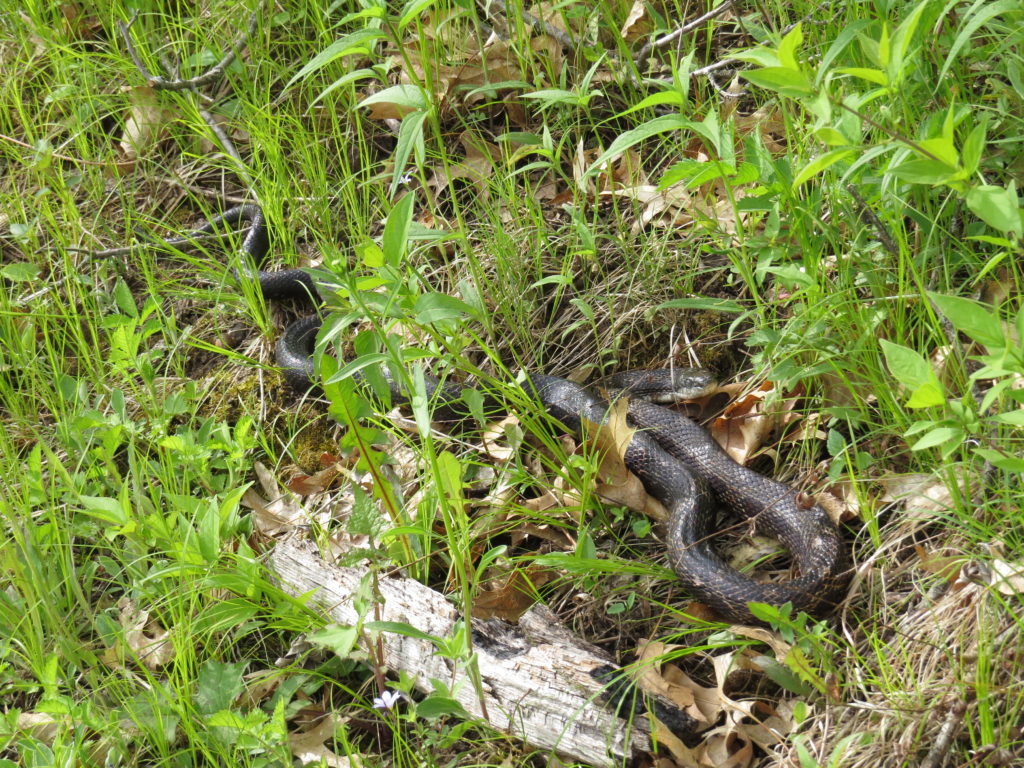
A restored prairie area along the bluff still had the fall remains of amber grasses and wildflower seedheads…
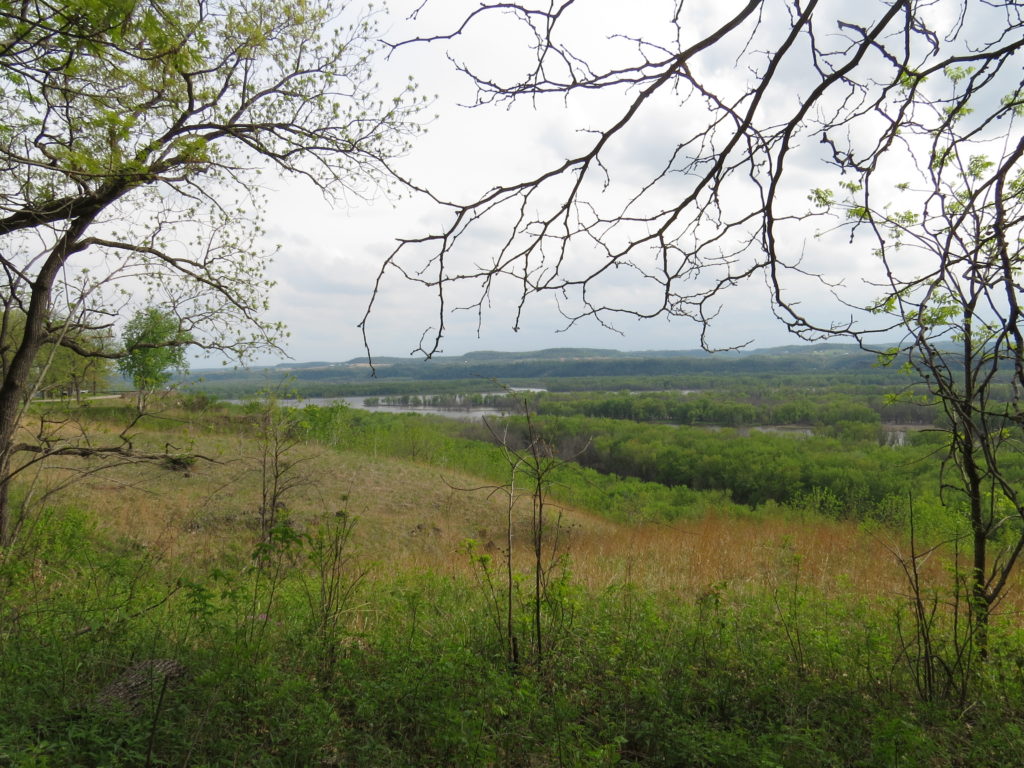
…though one prairie hilltop pushed aside the old for a new Spring sweep of Bird’s Foot Violets.
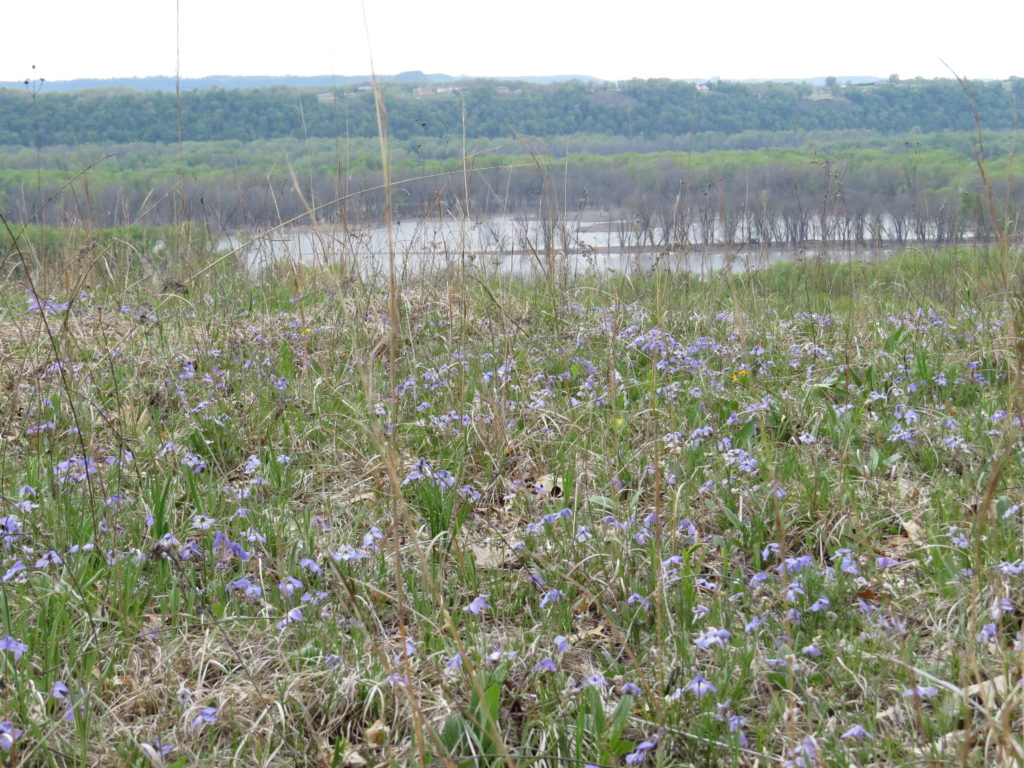
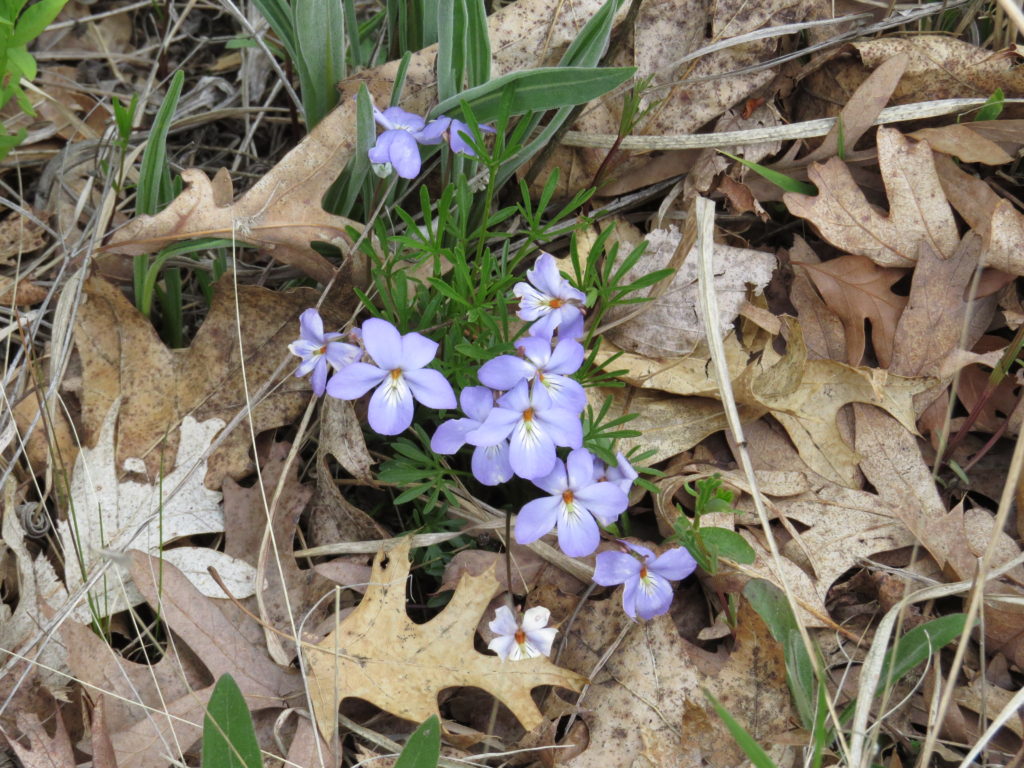
What’s in a name? Among the Bird’s Foot Violets were bright Hoary Puccoons.
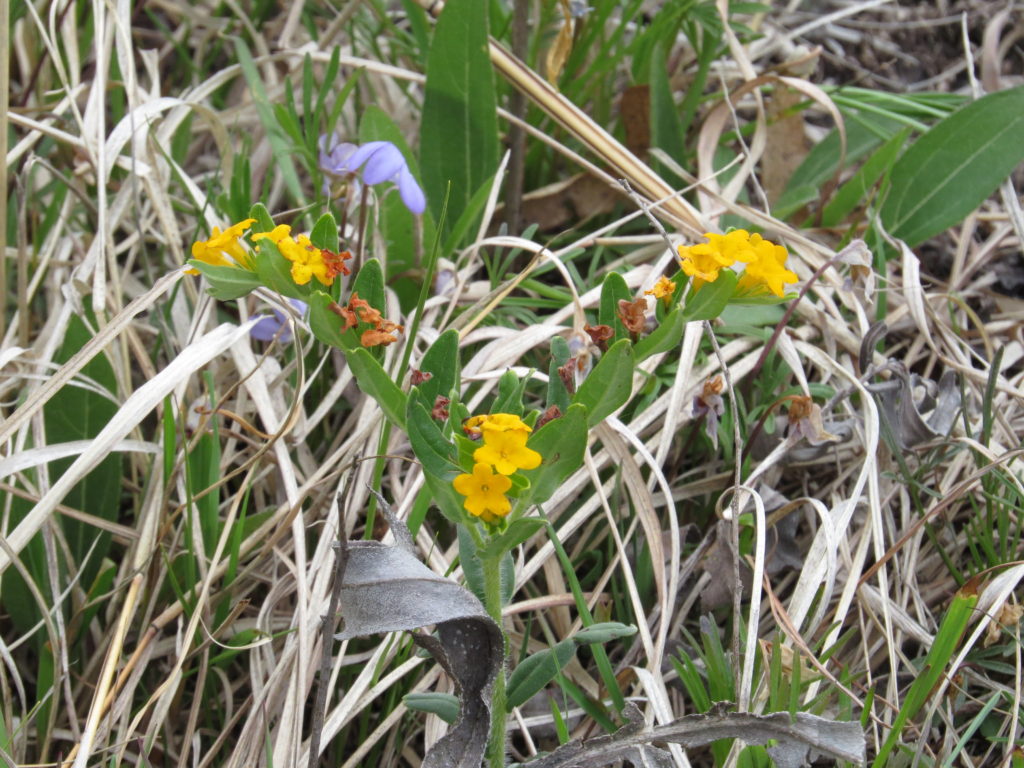
From the hilltop prairie we veered away from the River…
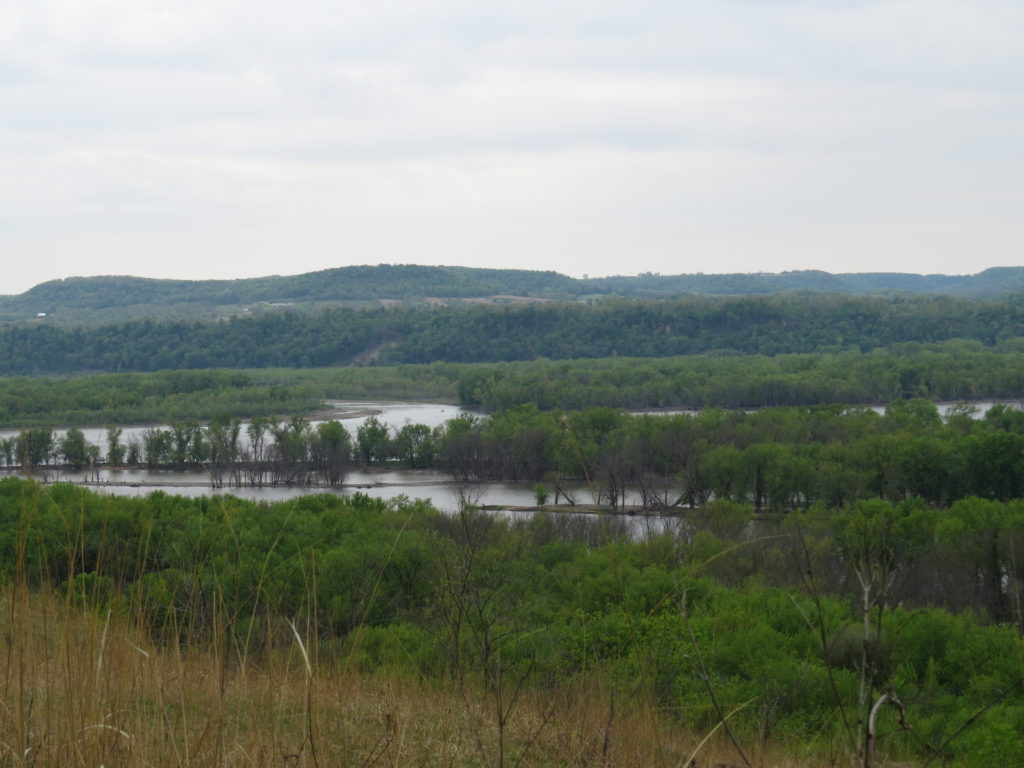
and followed the old stone wall that had been built in the 1860’s around the Stonefield farm that Dewey planned and moved his family to in 1868.
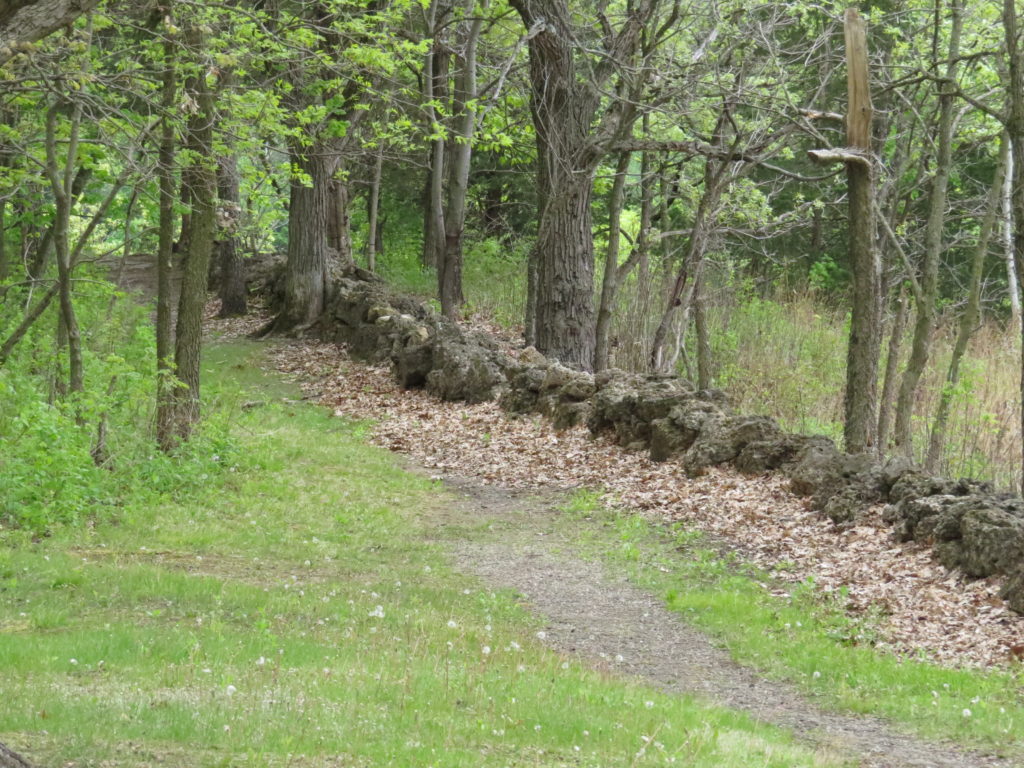
Limestone outcroppings looked out over the deep valley of forest and River. Tough, windswept Cedar trees grew on the points…
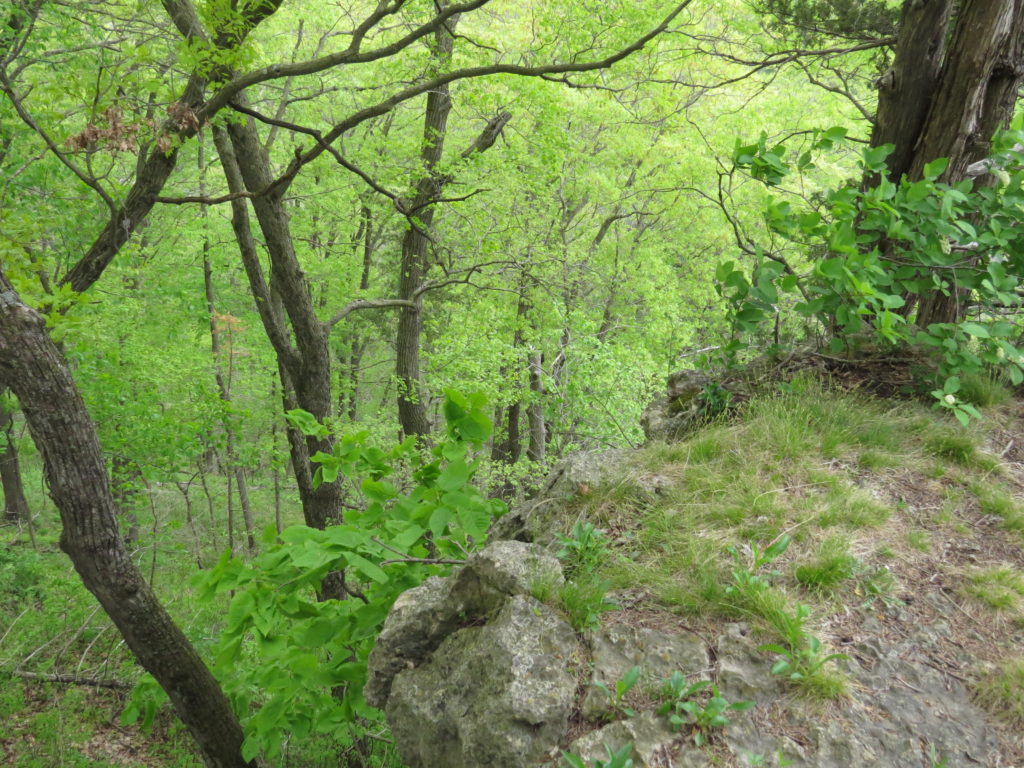
and exquisite flowers clung to the rock edges and burst into bloom from a bed of stone.
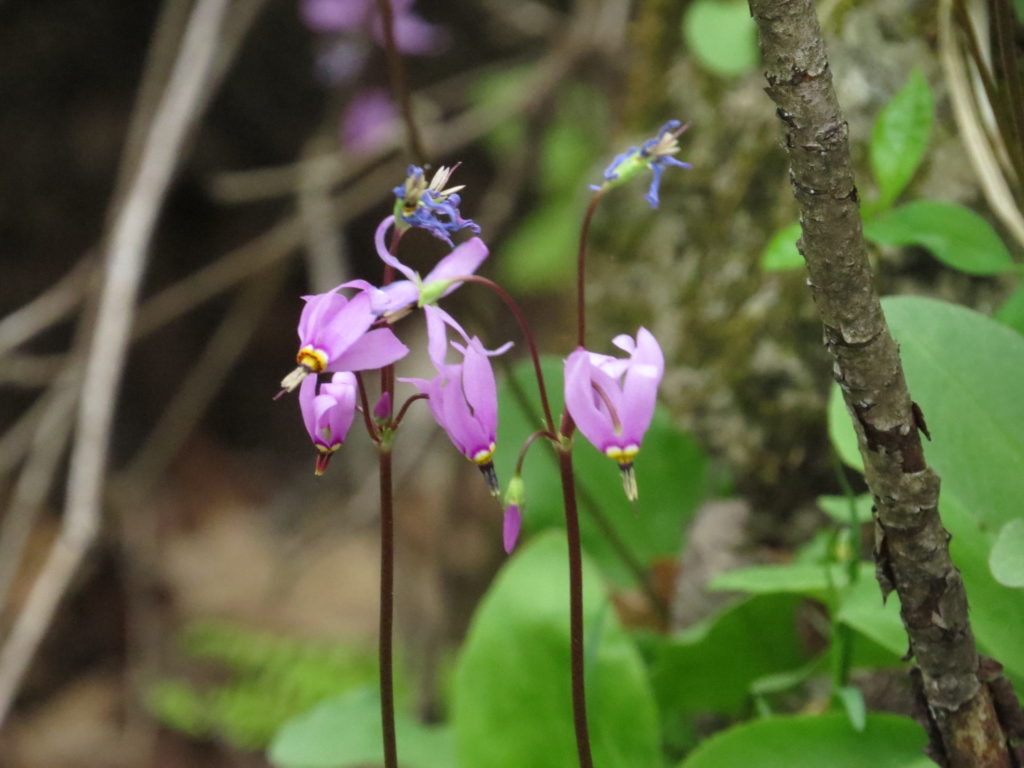
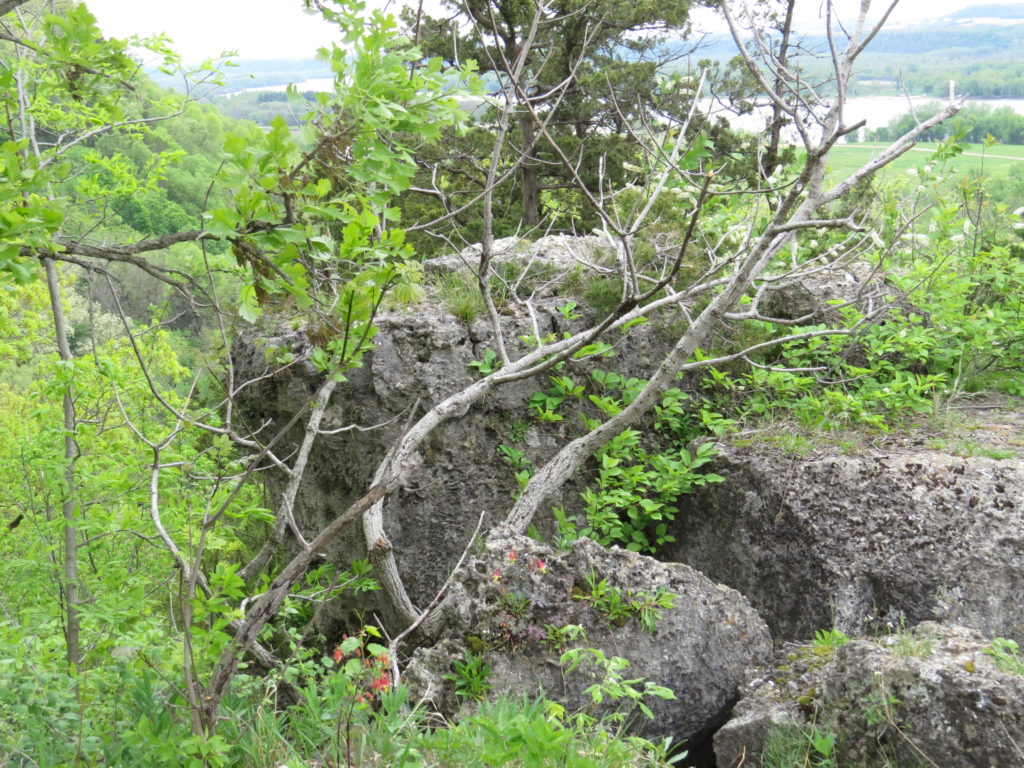
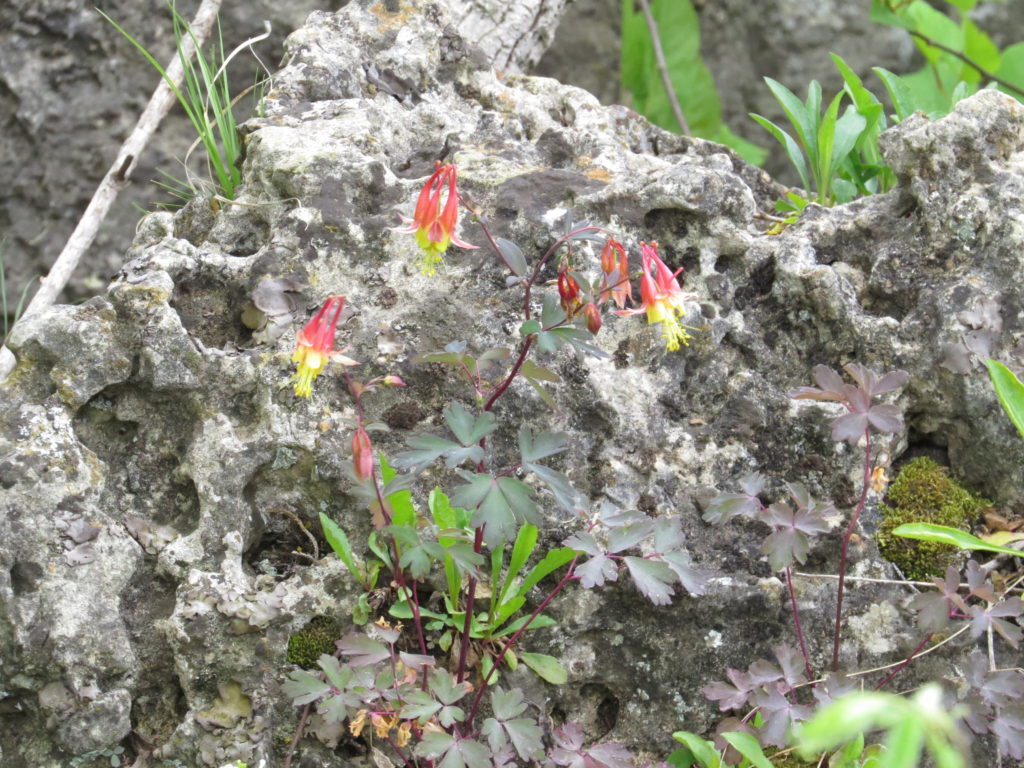
An old Cedar, overlooking the River, looked like a Bonsai tree—it had been trimmed and pruned, bent and stunted, by the wind and weather over the decades. The stories it could tell.
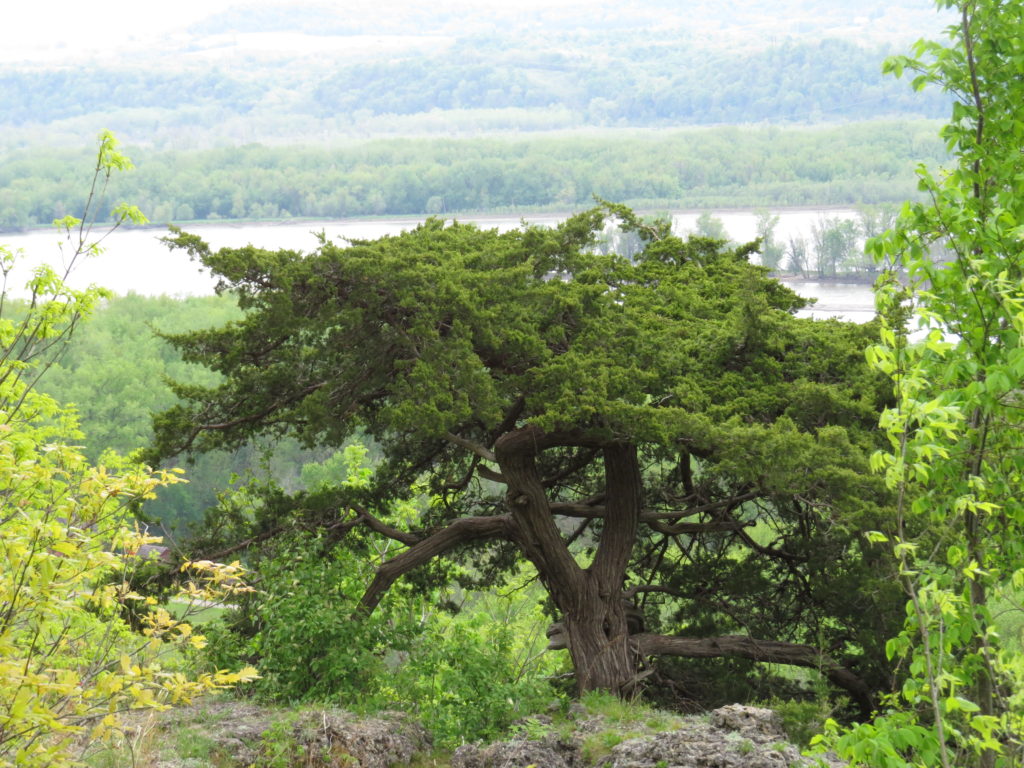
A tree we don’t see in the wild as far north as we live, was in full bloom—the gorgeous Redbud tree. Spring is synonymous with Redbud trees for Chris—another homecoming of sorts for his tree-loving soul.
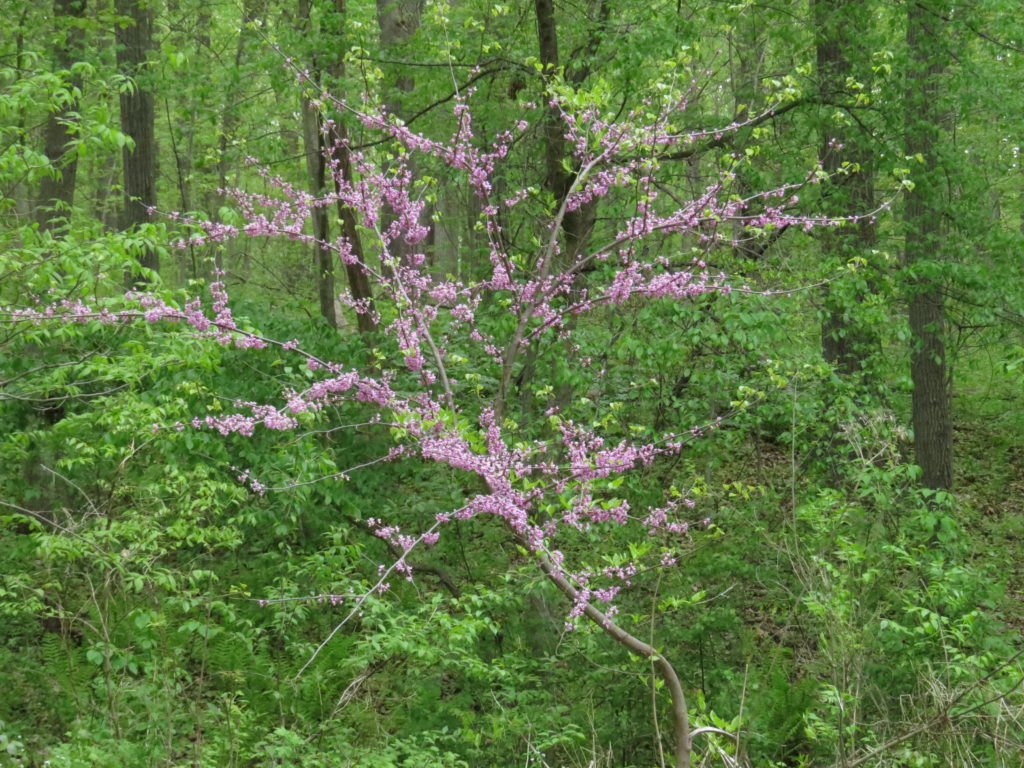
Going to Cassville for the weekend was a reminder that the topsy-turvy time we find ourselves in is nothing new or special. The history of the place tells the stories. Governor Dewey and his family lived on a spectacular farm overlooking the Great Mississippi River. But disaster struck in 1873 when their house burned down and later that year a nationwide financial panic affected his investments, and he lost Stonefield in 1878 to foreclosure. He also lost his marriage during those years. On a more personal note, when we looked at the graves of Chris’ Mom and Dad, we realized they were toddlers when the 1918 Spanish Flu pandemic interrupted the lives of Americans and the world. Their families had weathered the pandemic with small children and much more primitive ways of living. The Veterans Memorial reminded us of all the men and women who had fought in wars over the centuries, many losing their lives by doing so. Chris’ Dad’s name carved in the black granite is a lasting memory of the sacrifices he and others endured to protect the world from the evils of fascism. And mostly we were reminded, as we close in on the incredible milestone of 100,000 deaths from Covid-19, that every death is personal and ripples out in waves to a myriad of people who were touched by that one, special person. Grief is as deep and wide and long as the Mississippi River. If I were to wish upon a shooting star, I would wish for each of us in this upside-down world to be a tree in this river of grief—to have strong roots embedded in holy ground, to have strong branches to hold the pain of others as it bends and stunts their lives, and to have a new growth of leaves that hold hope and renewal as a way forward. To be a homecoming of sorts.
